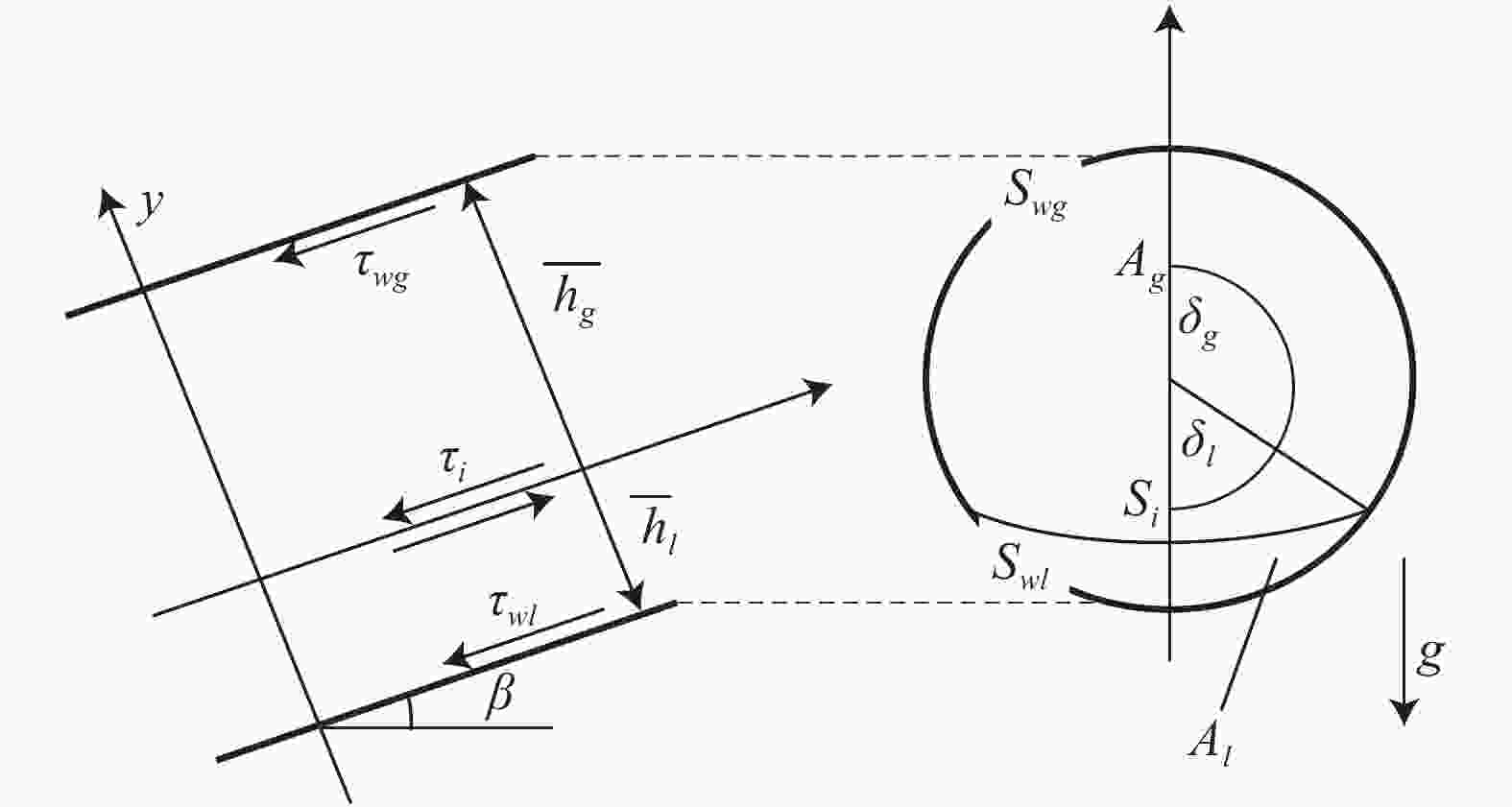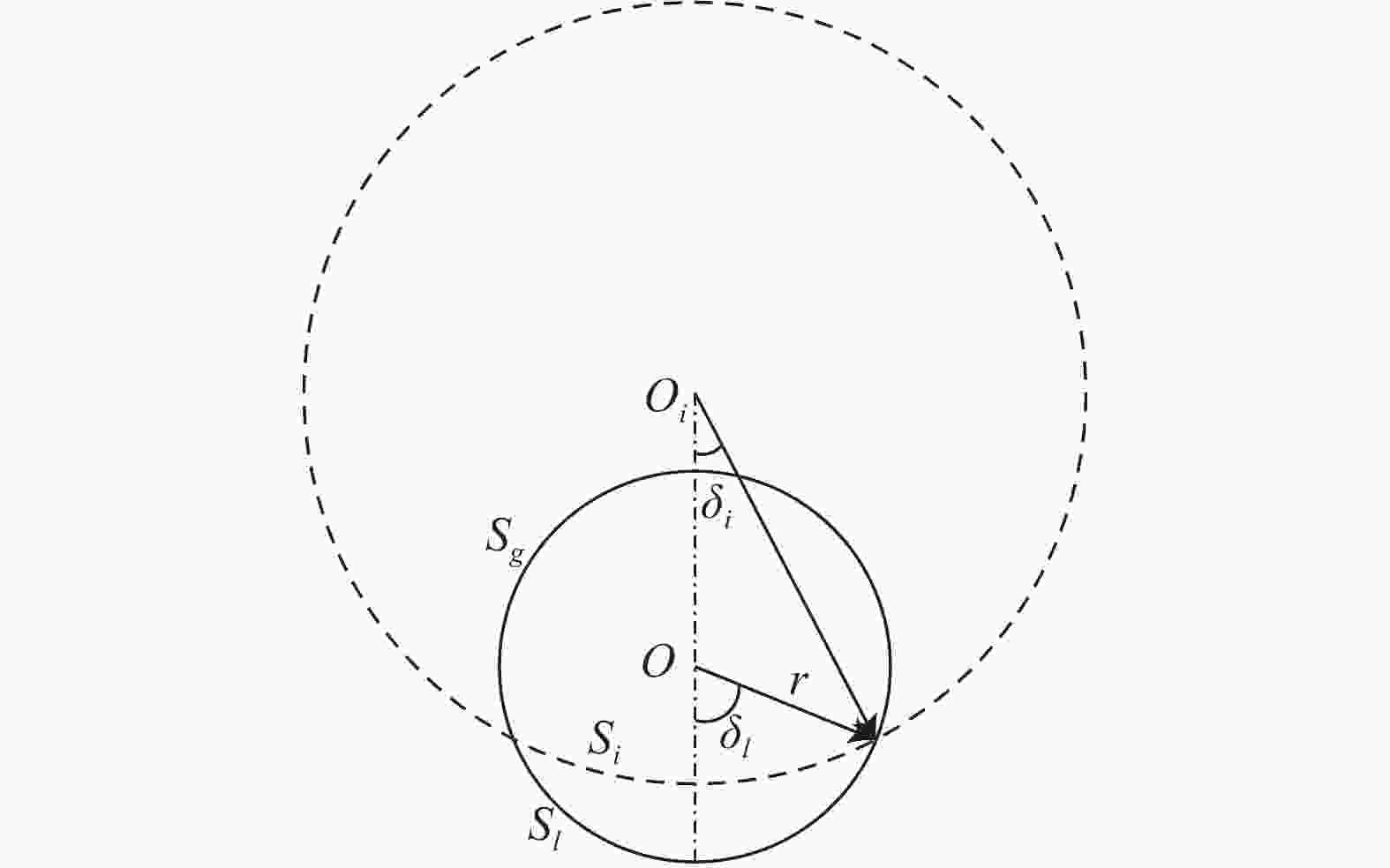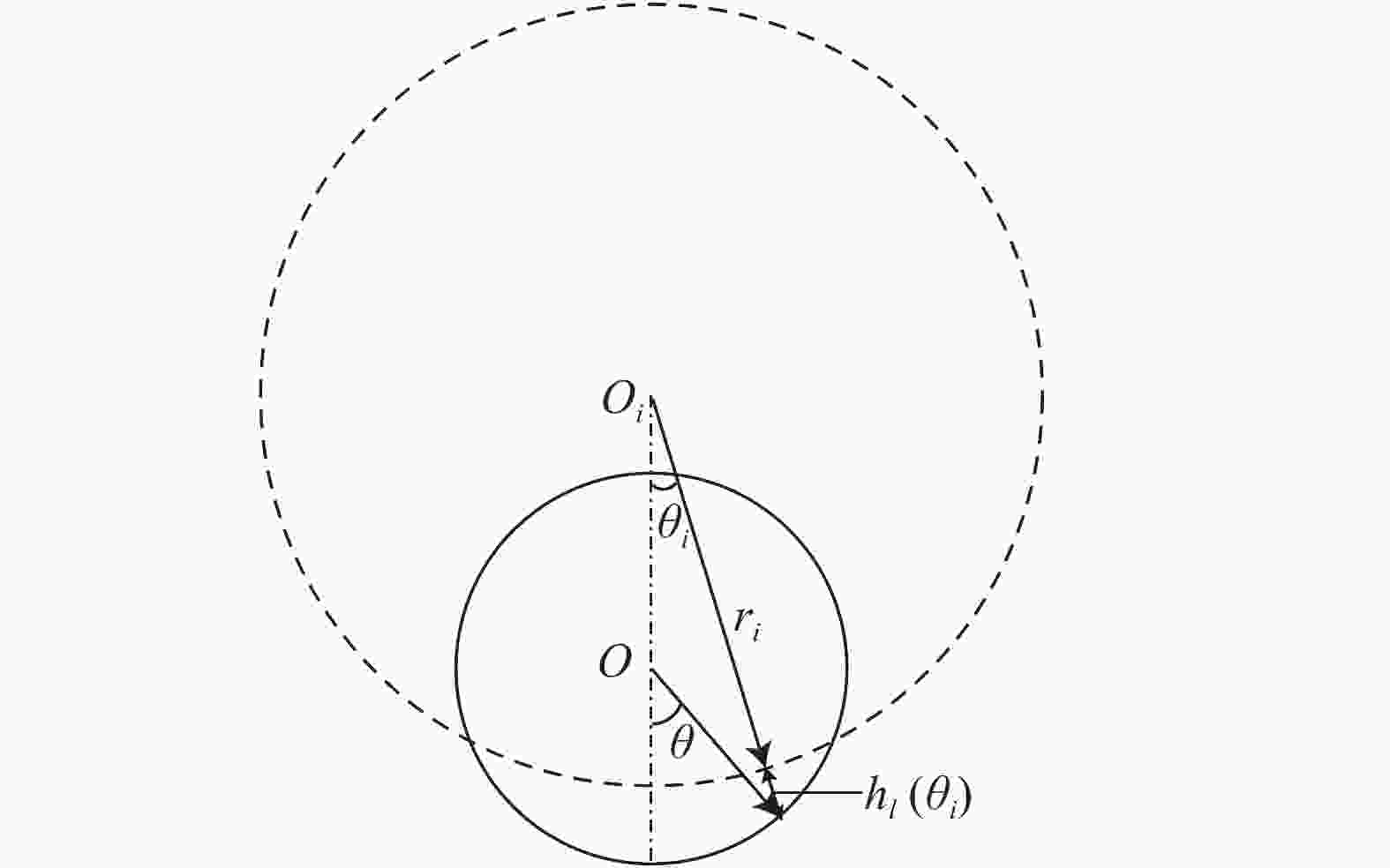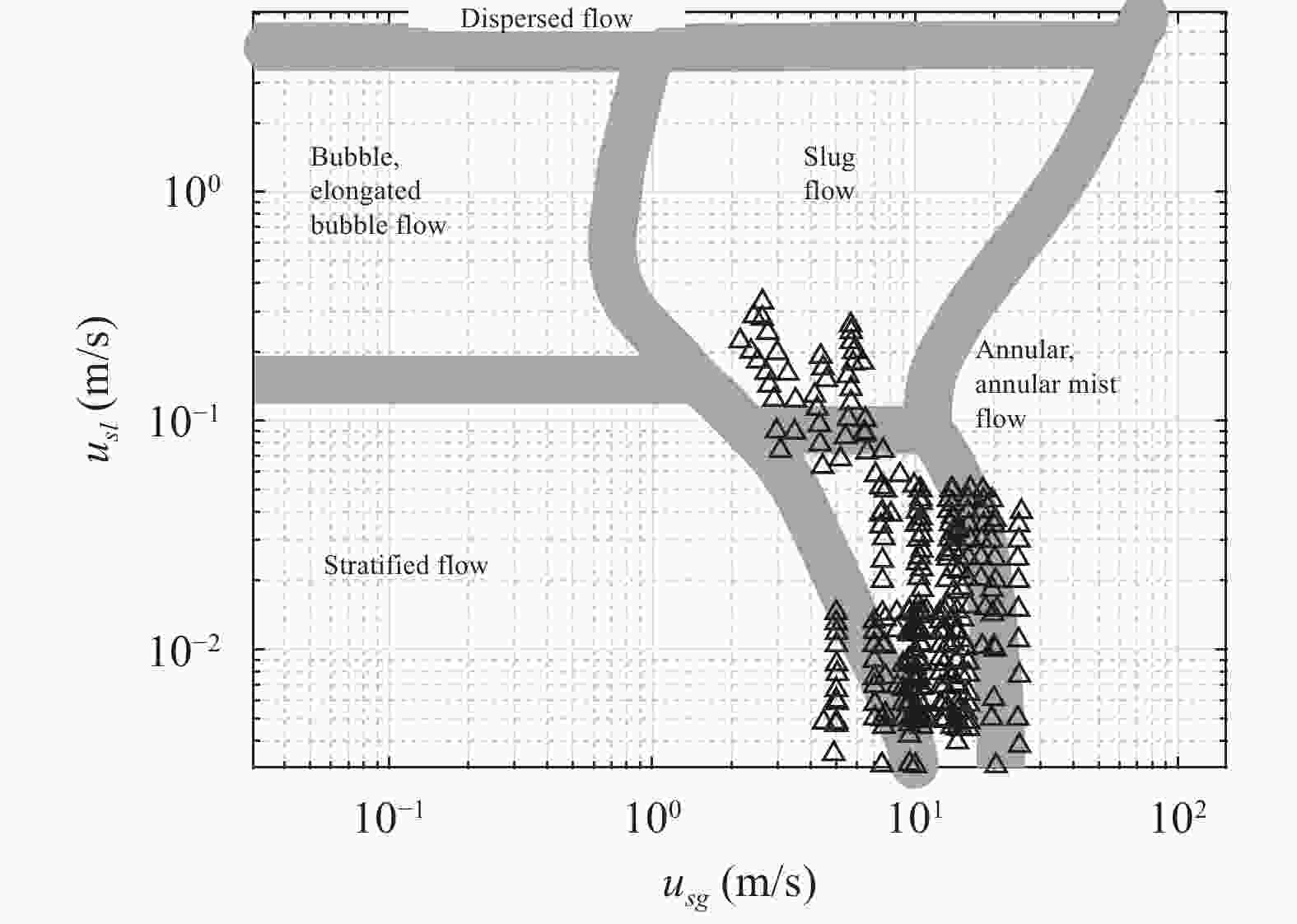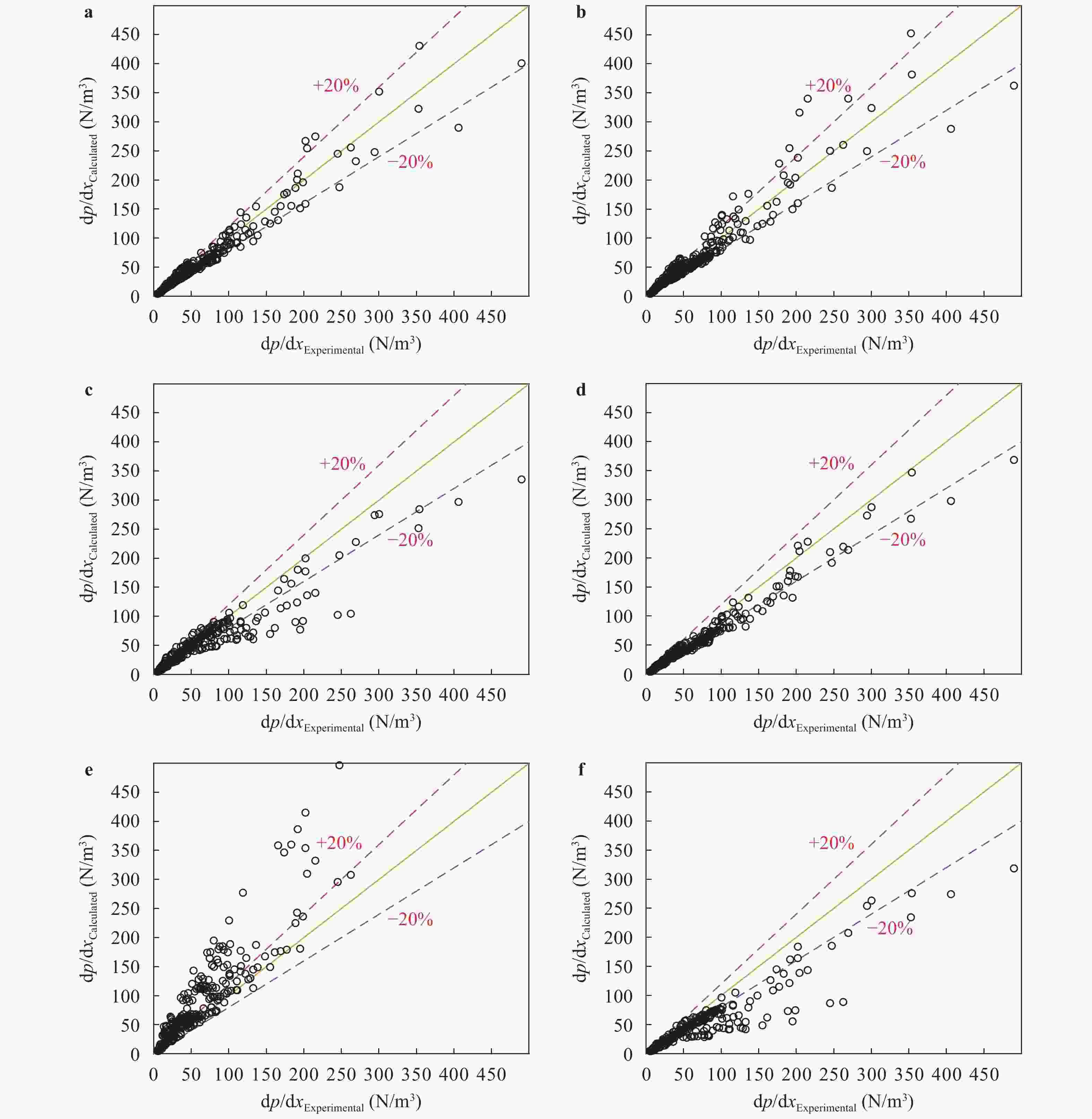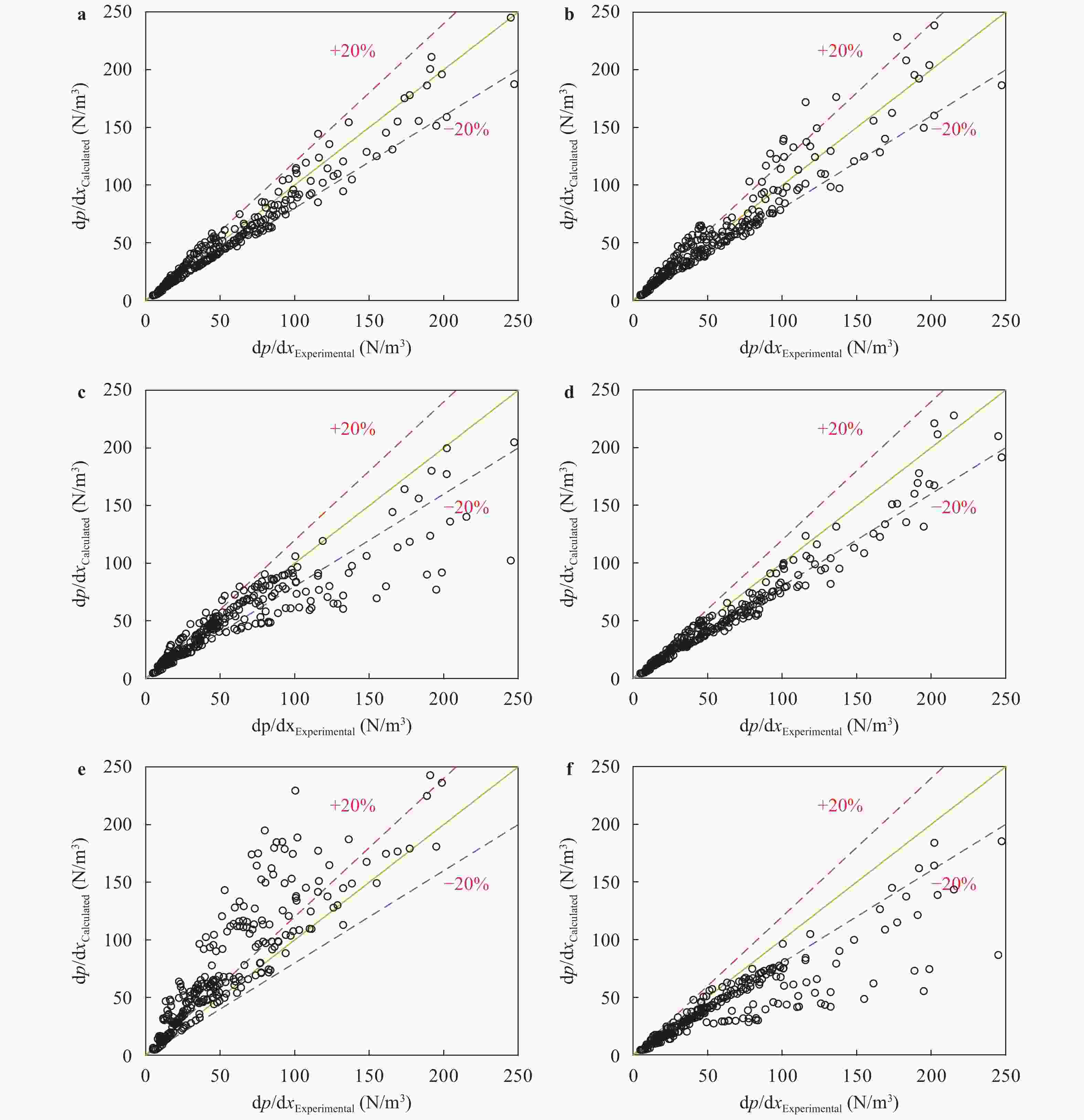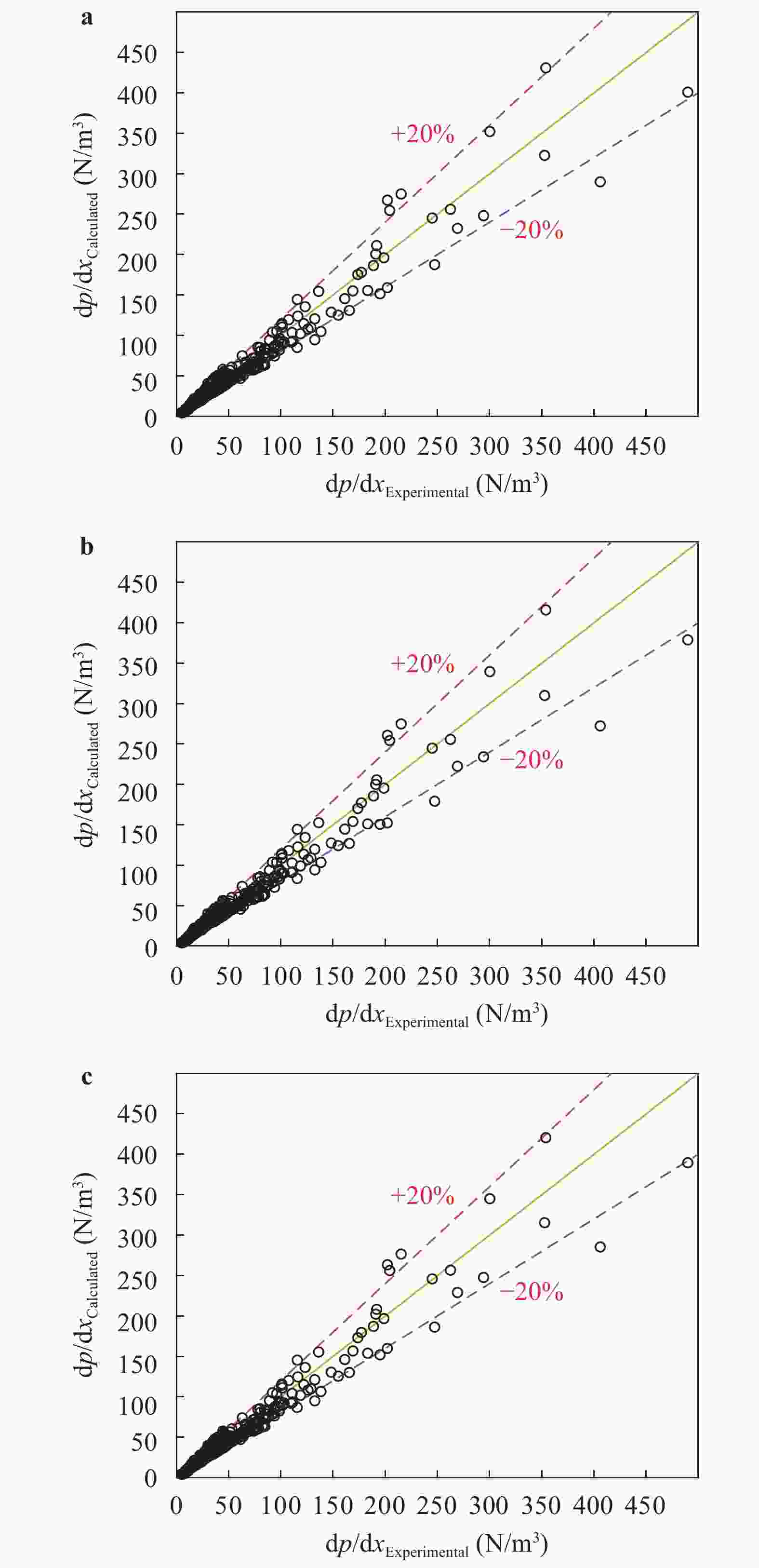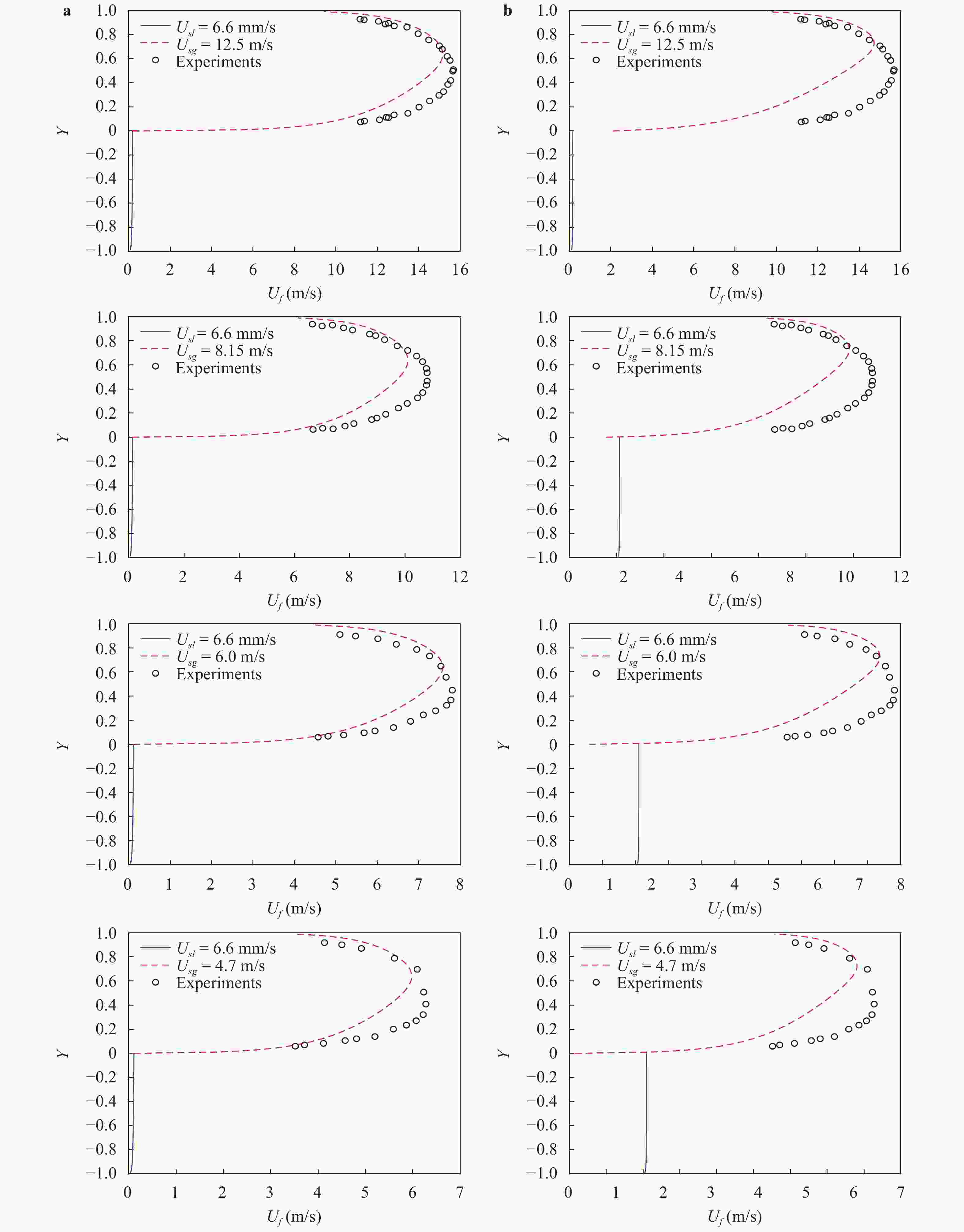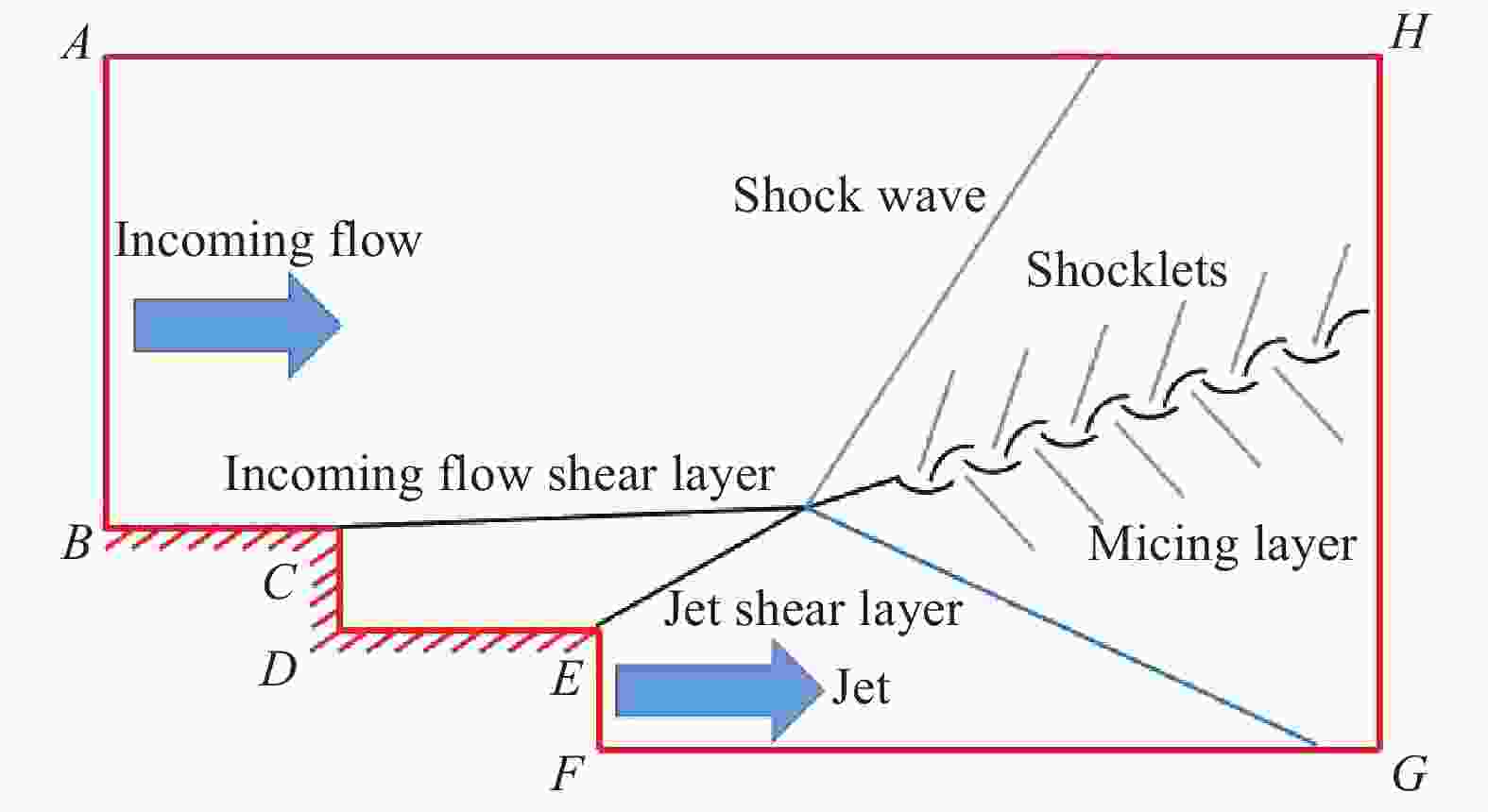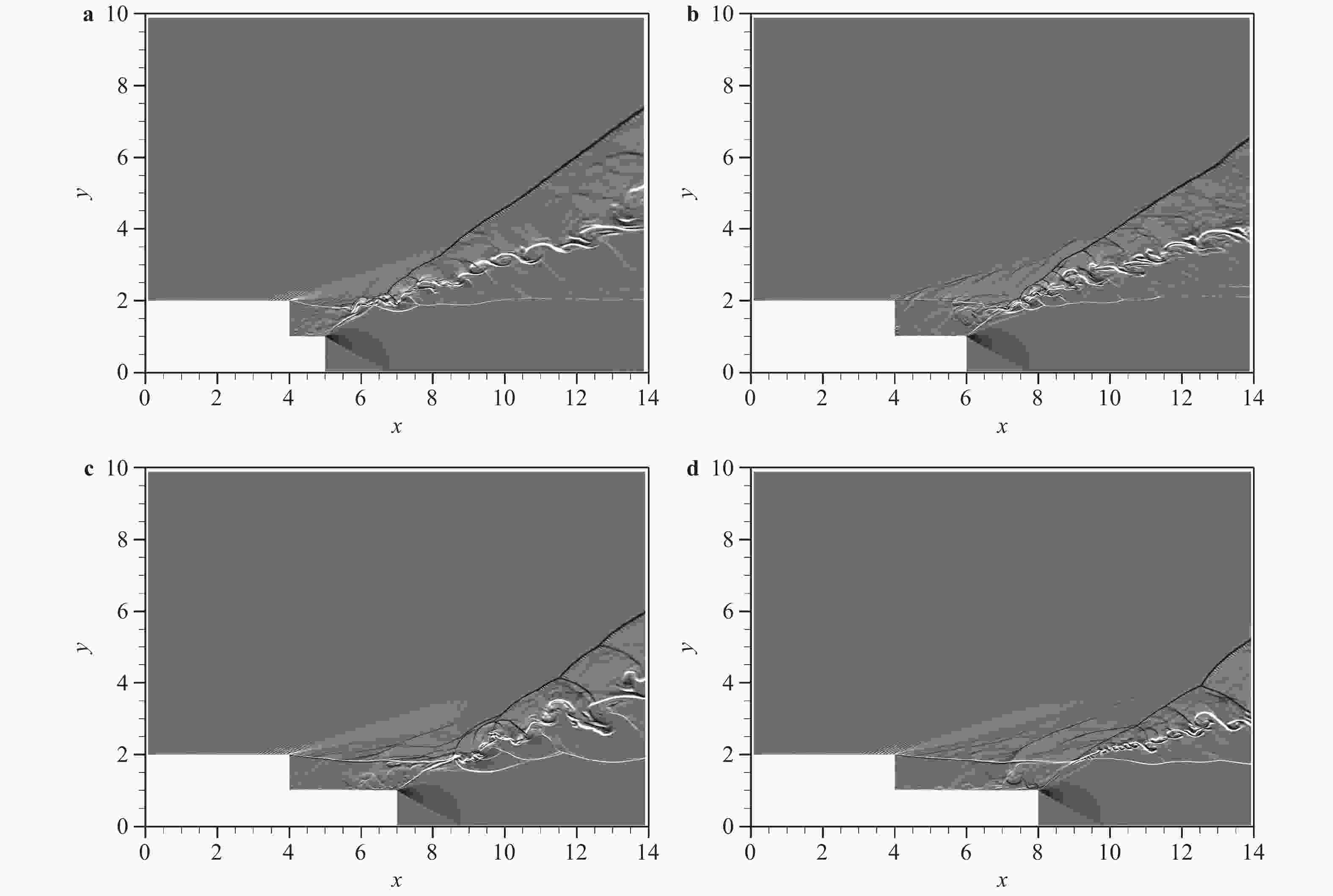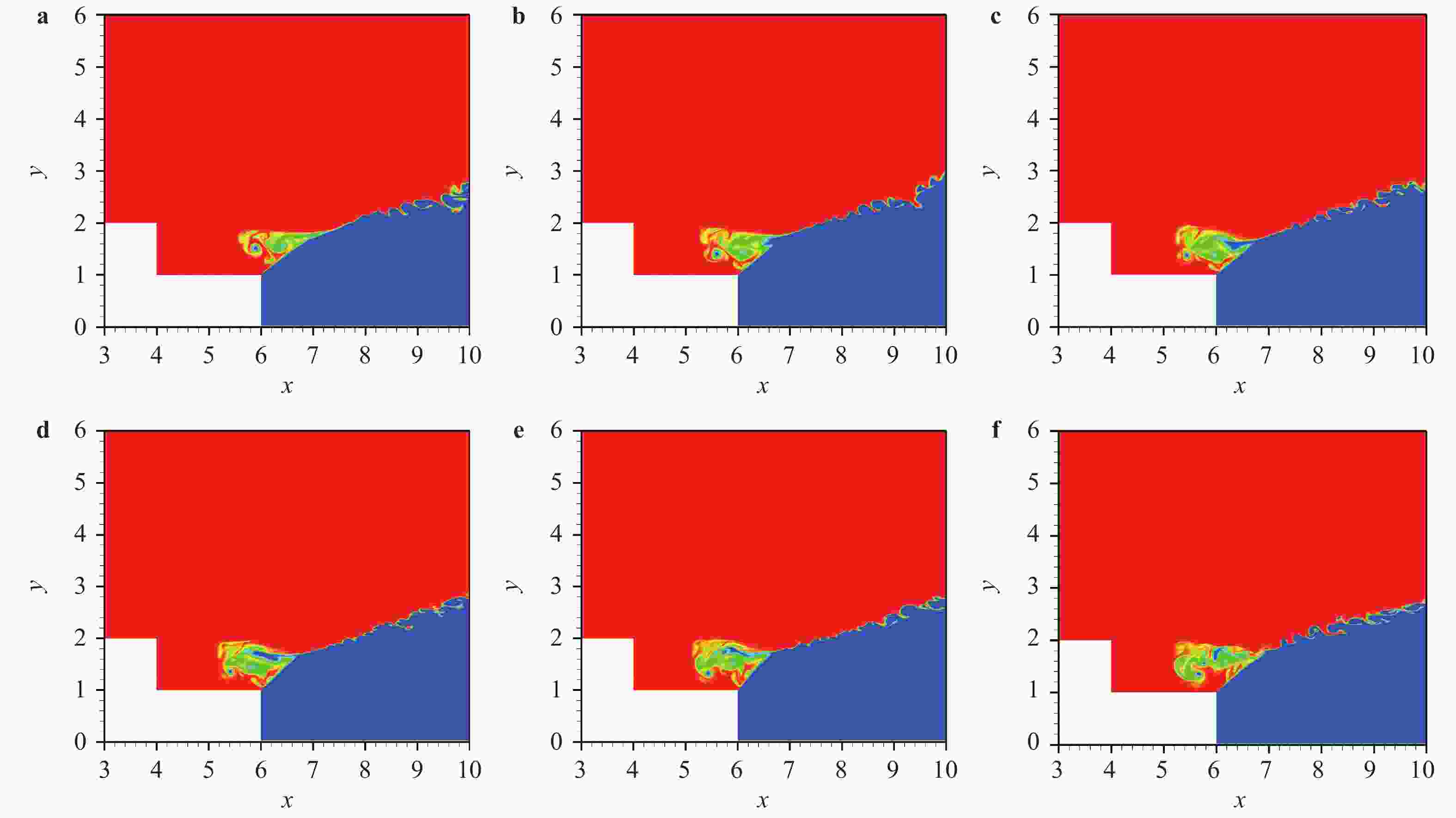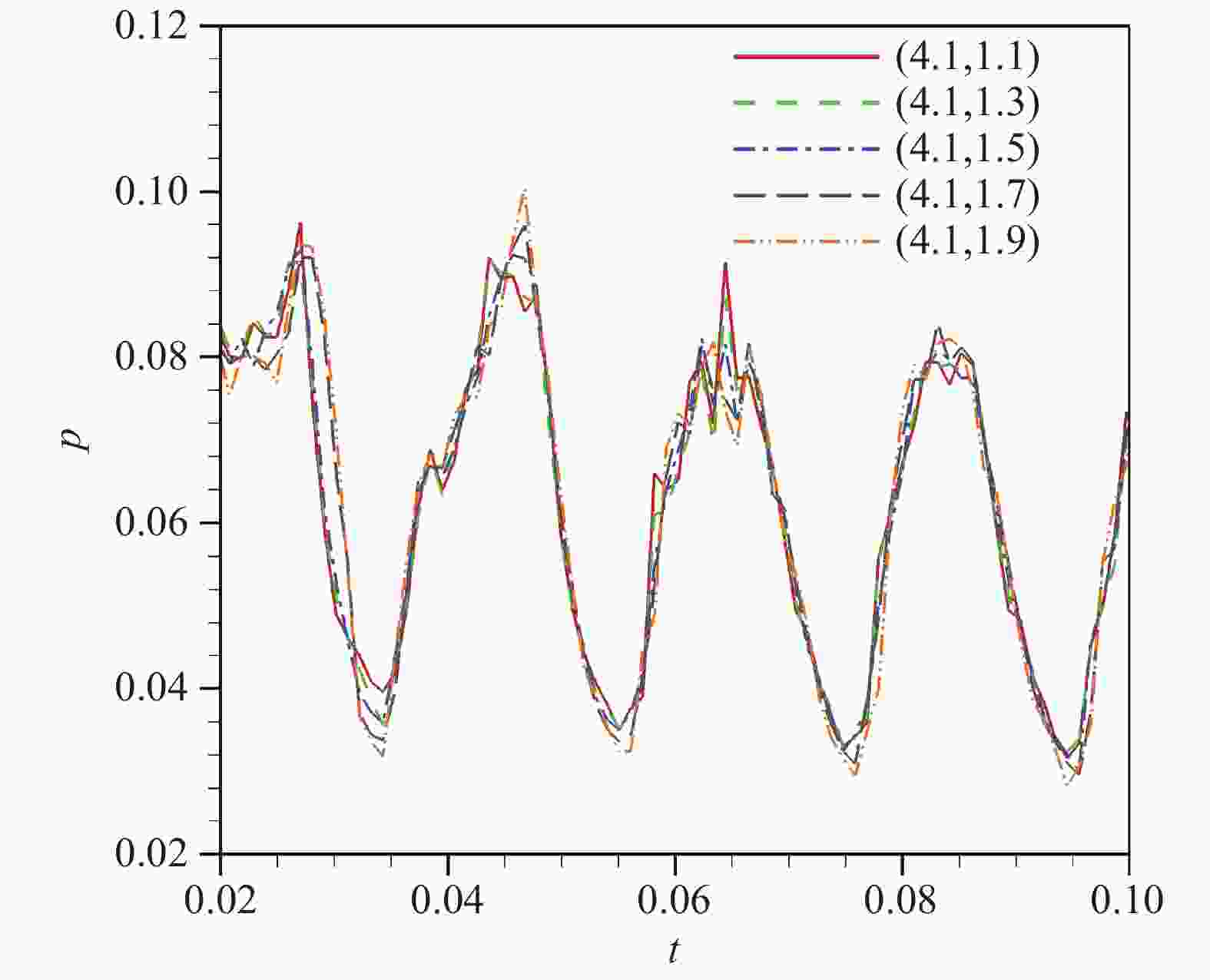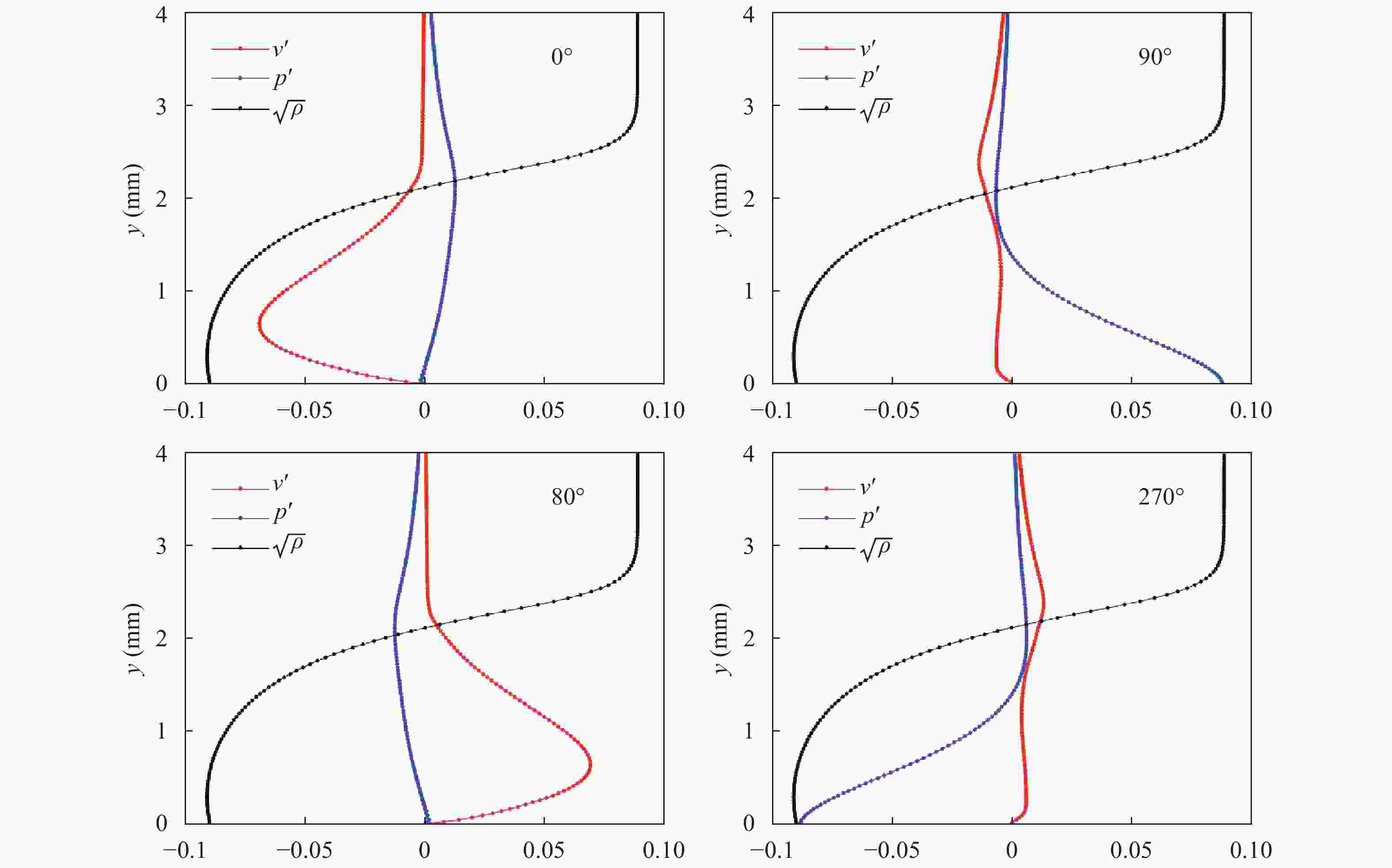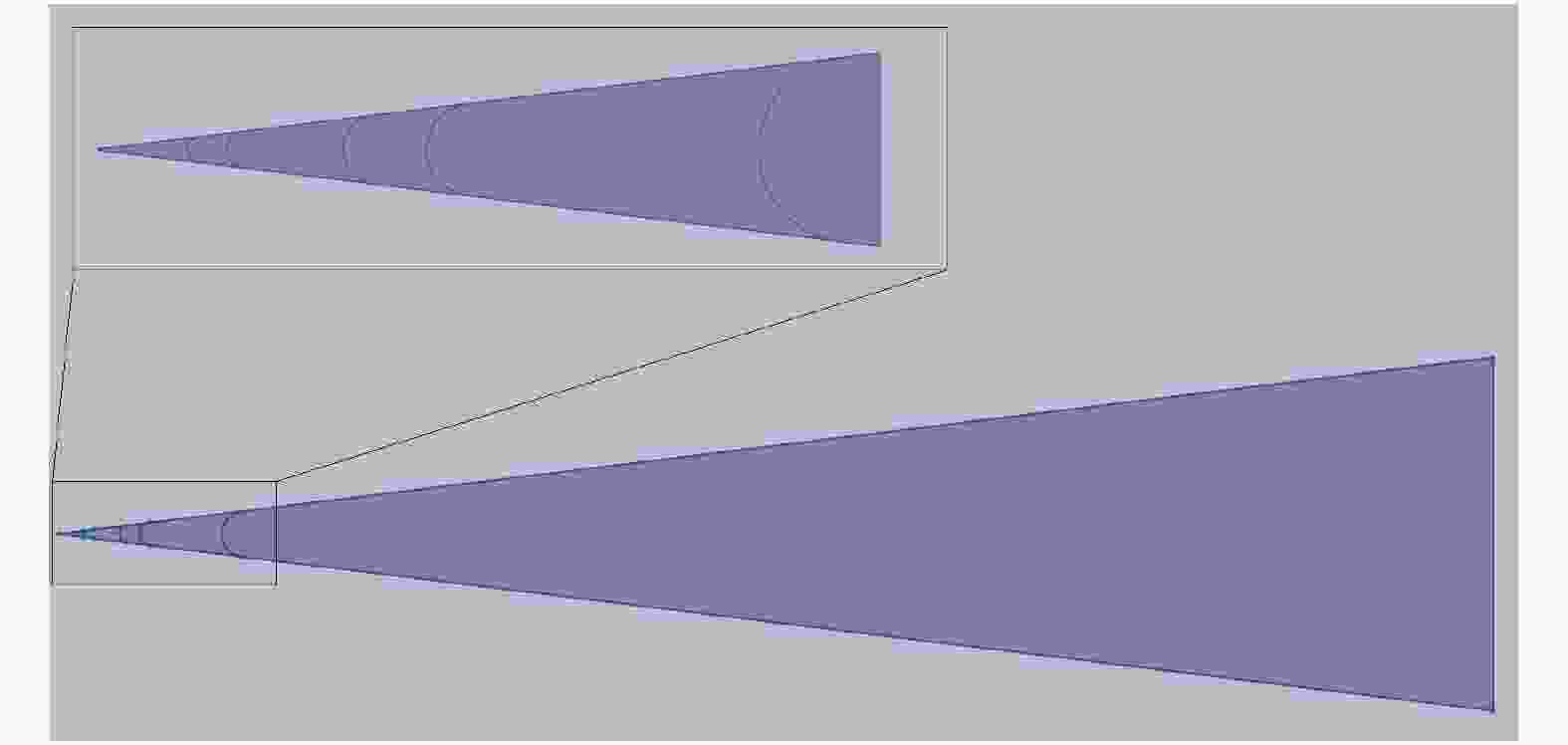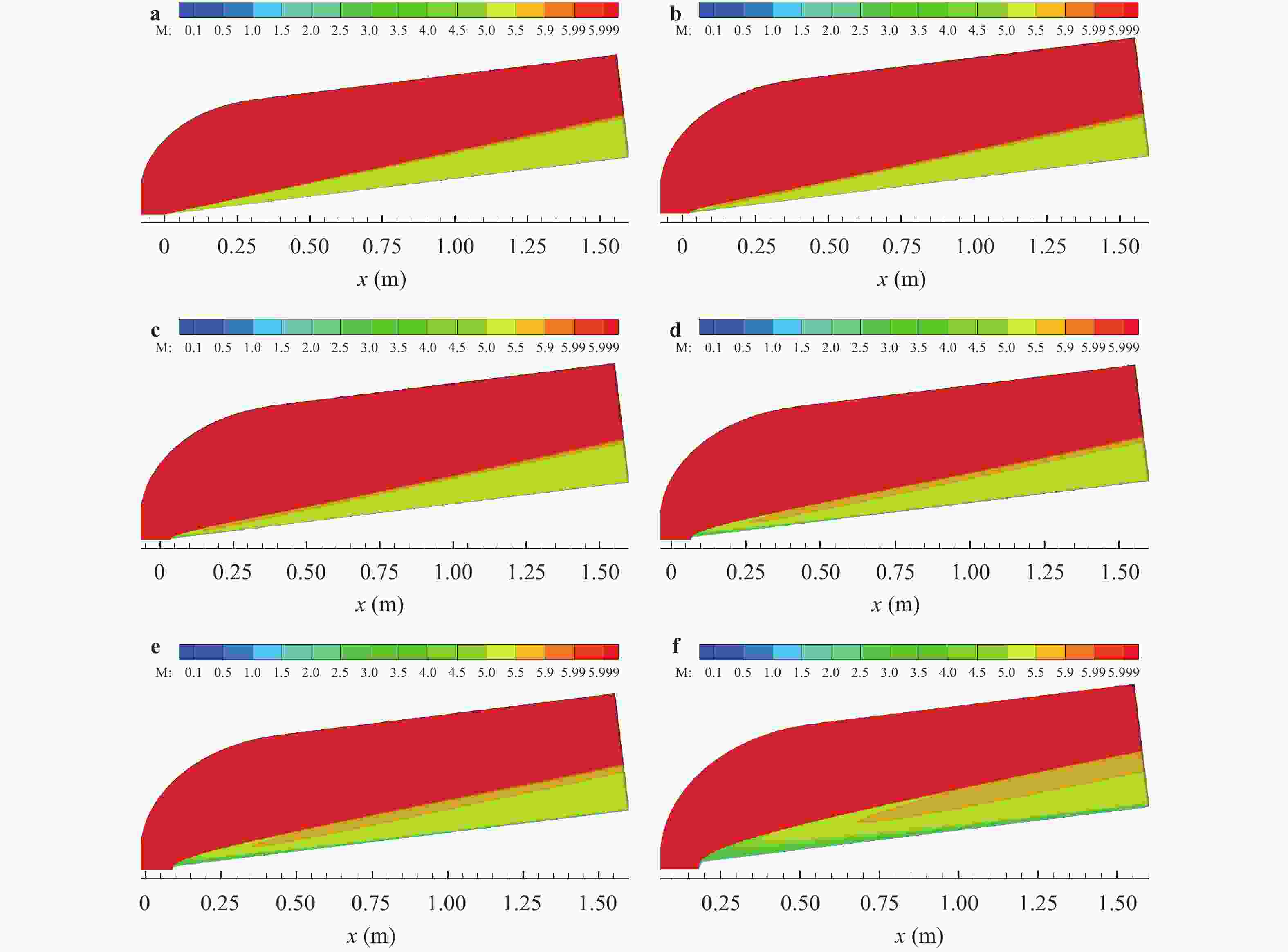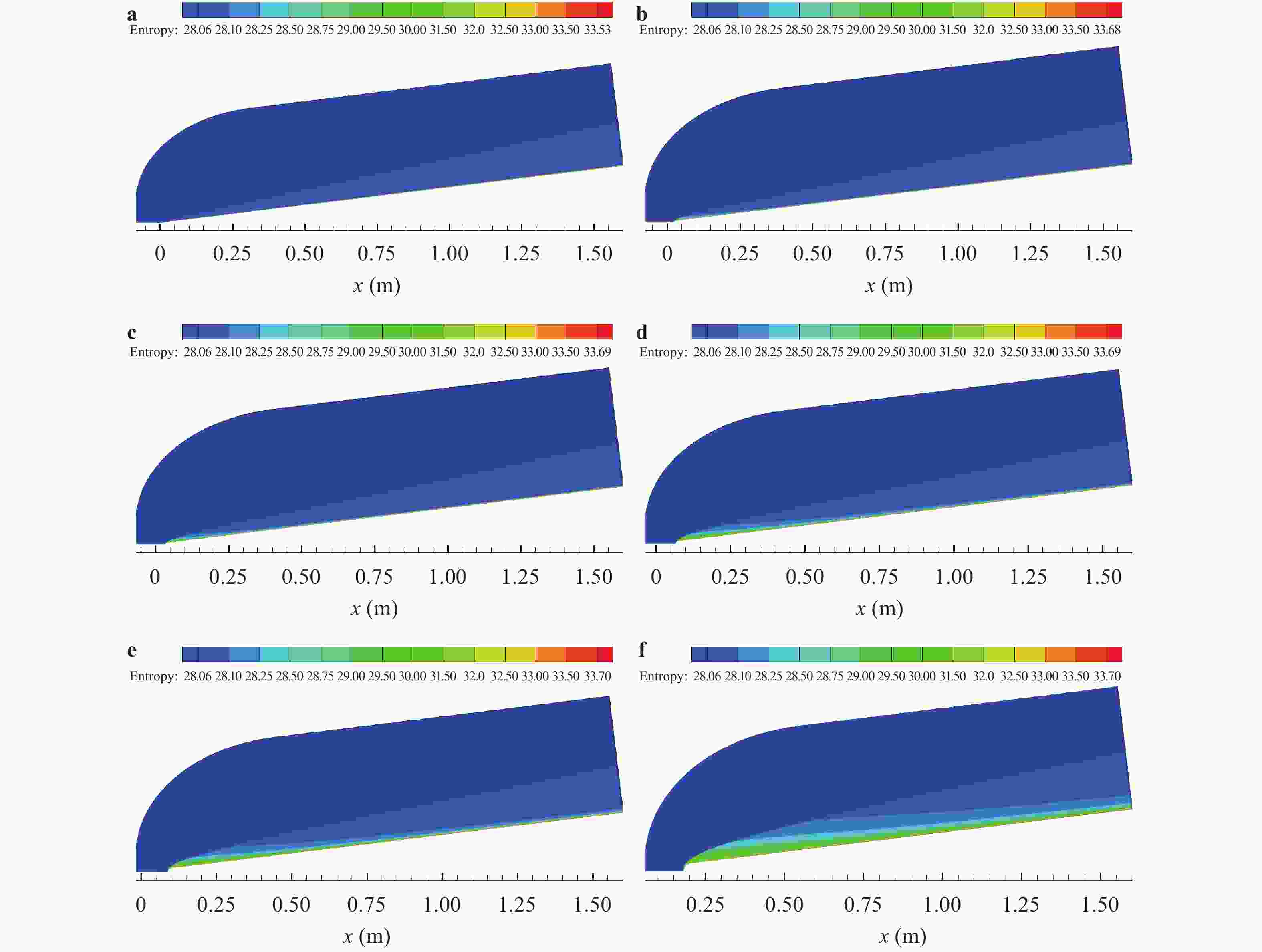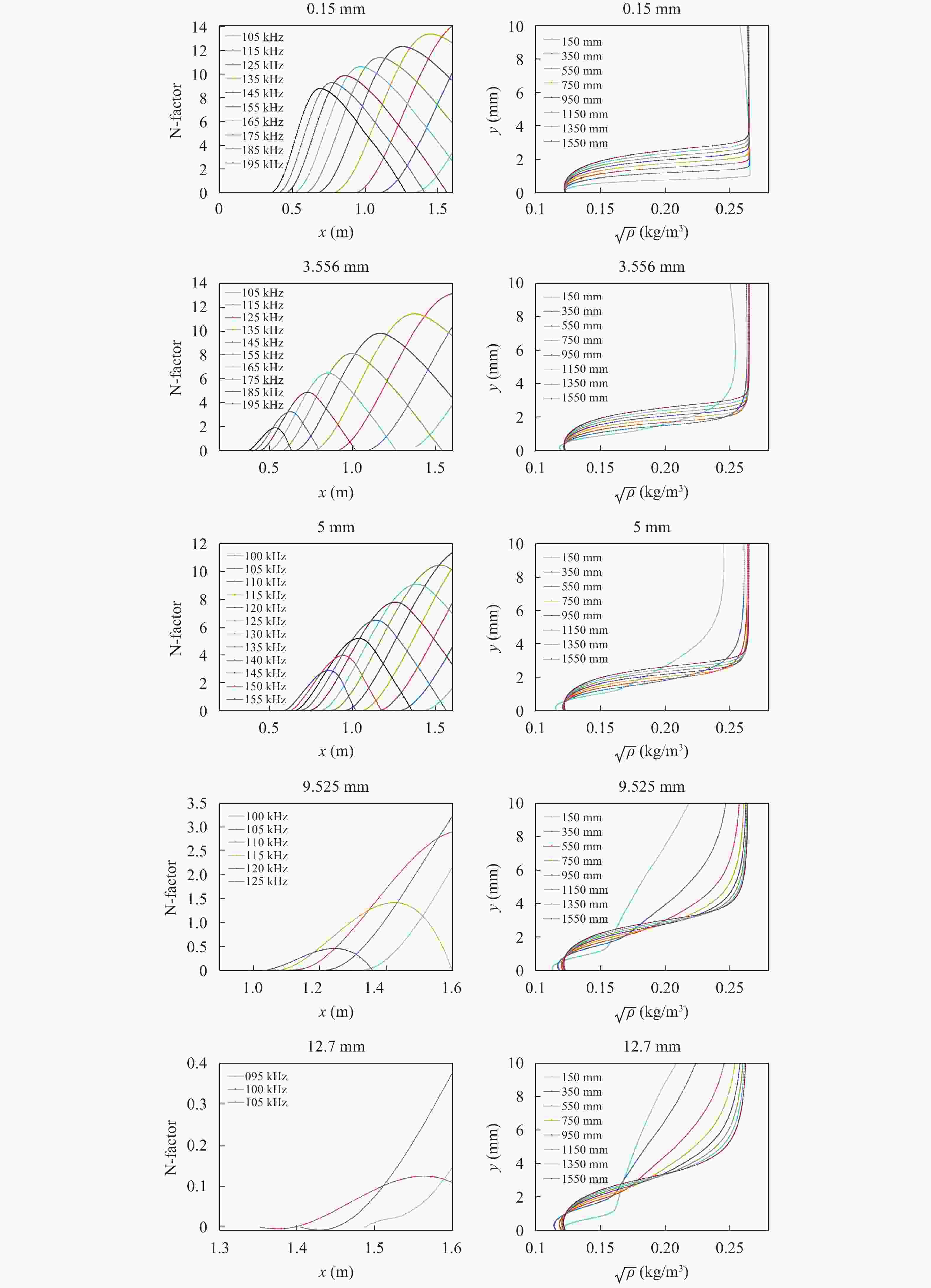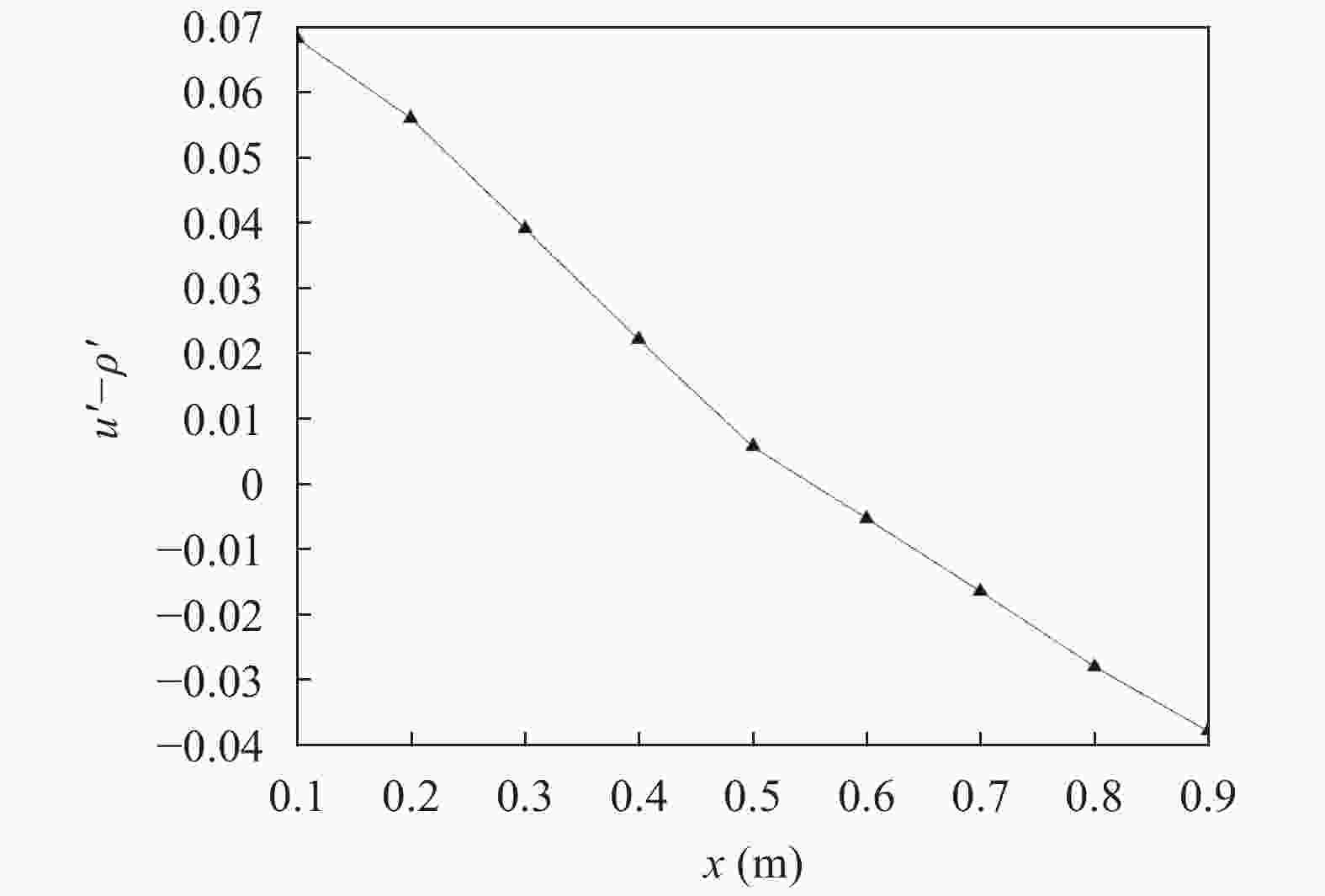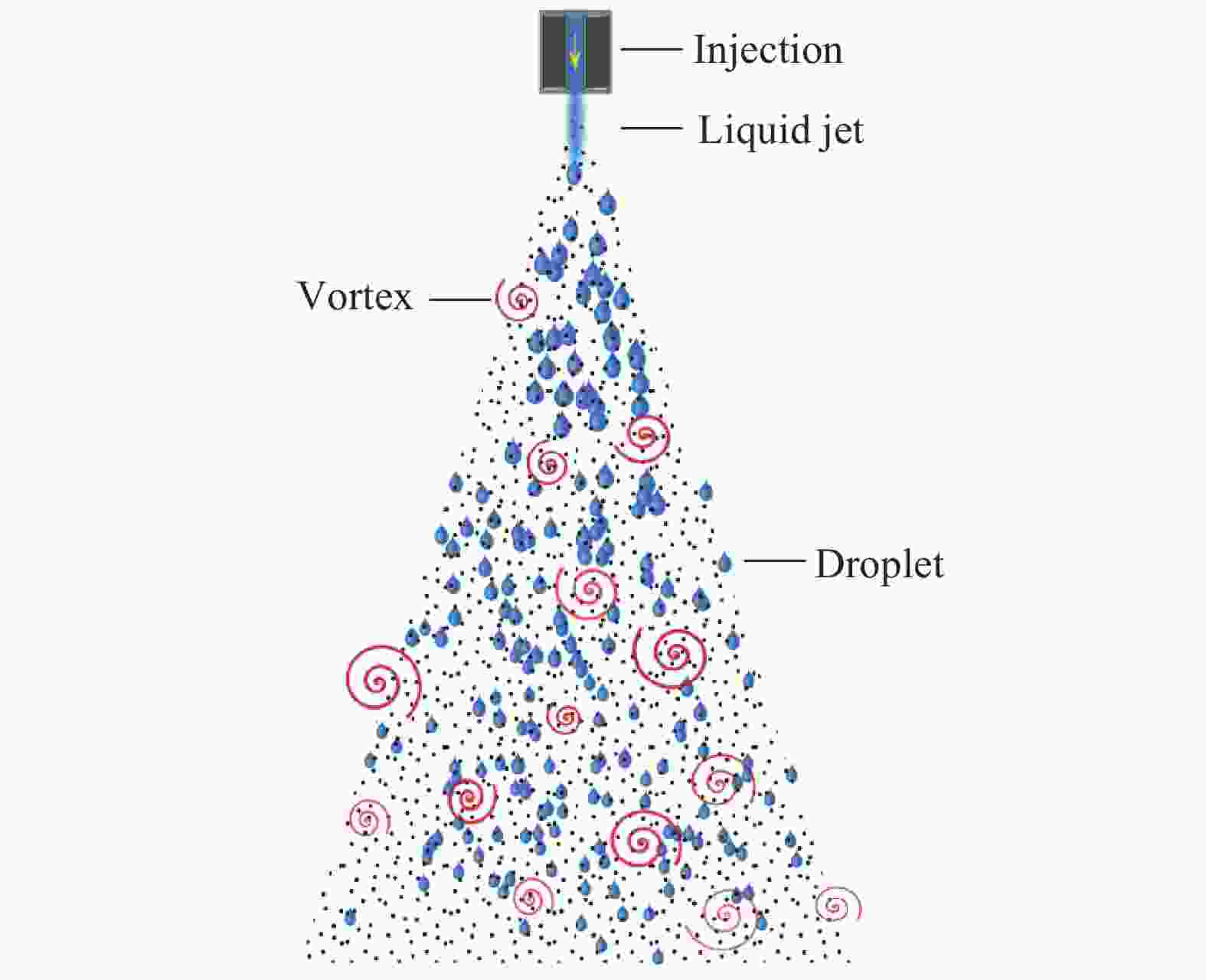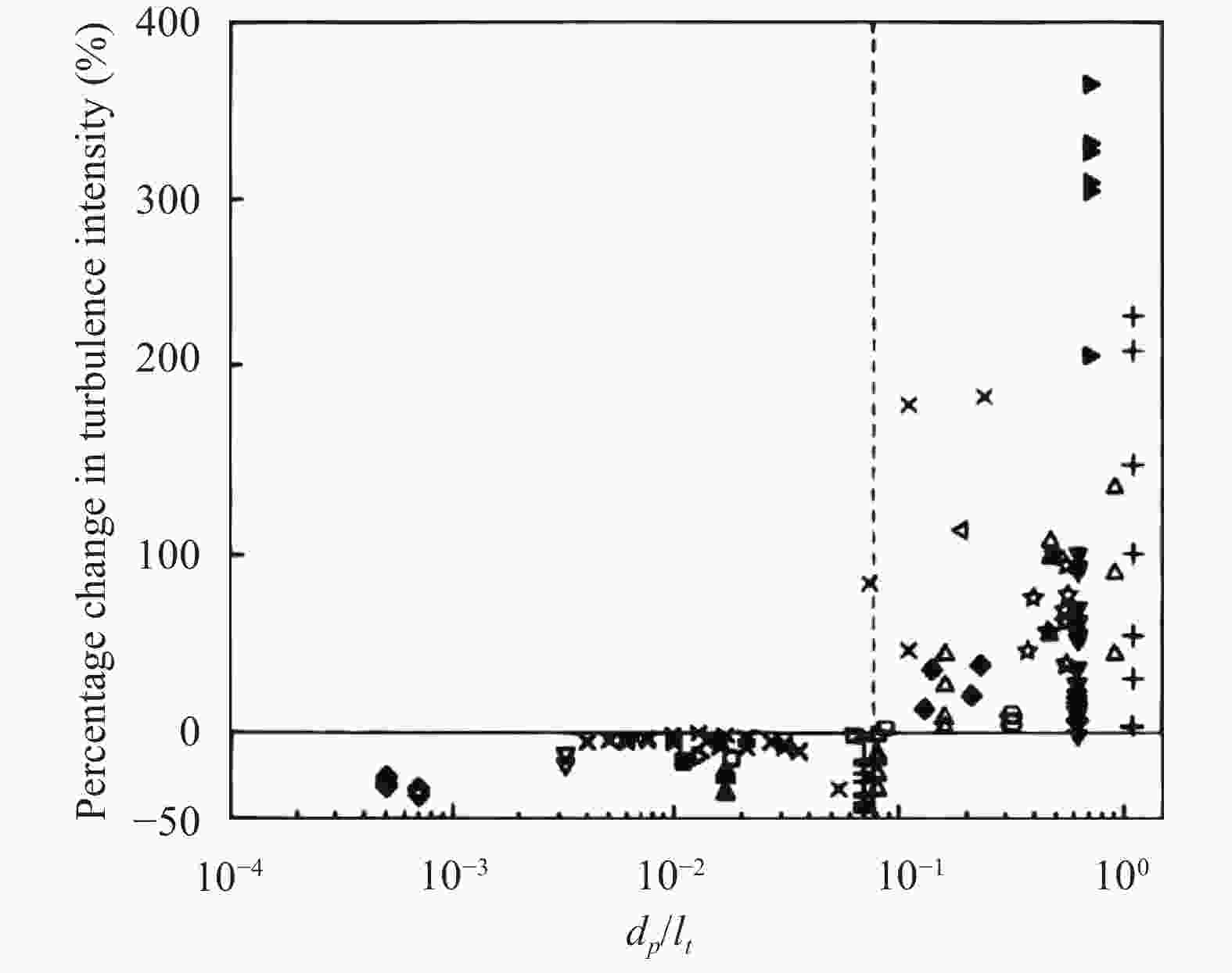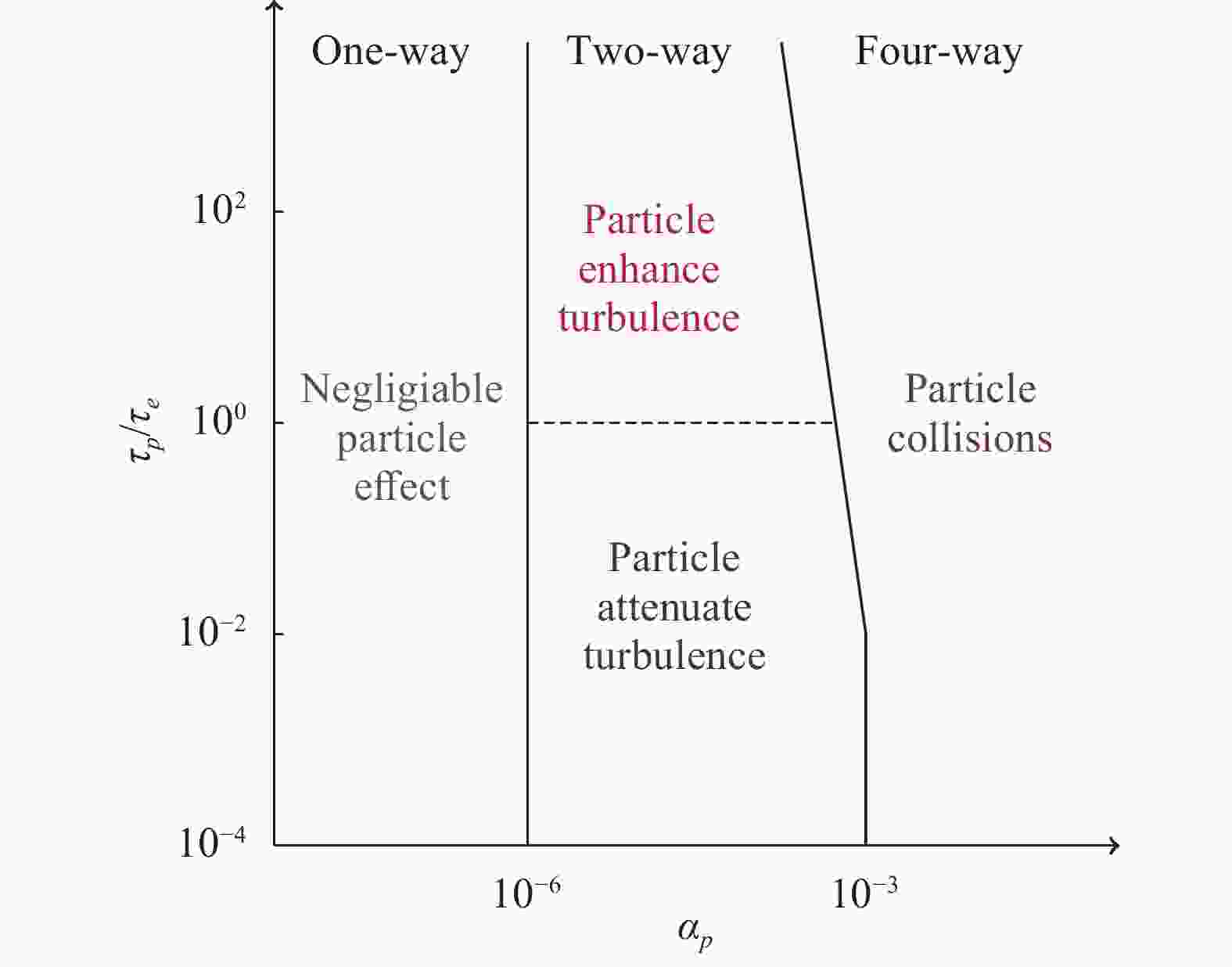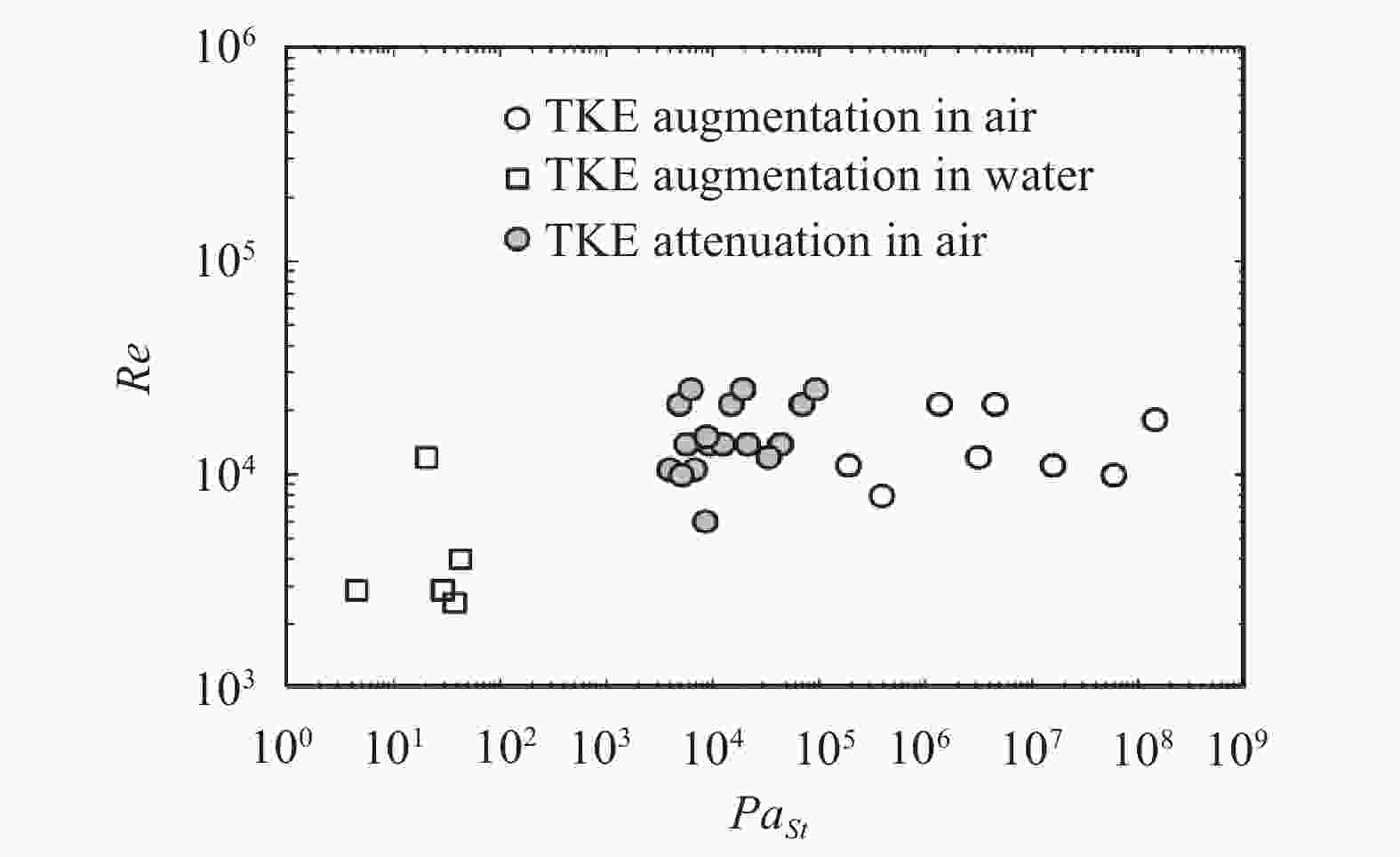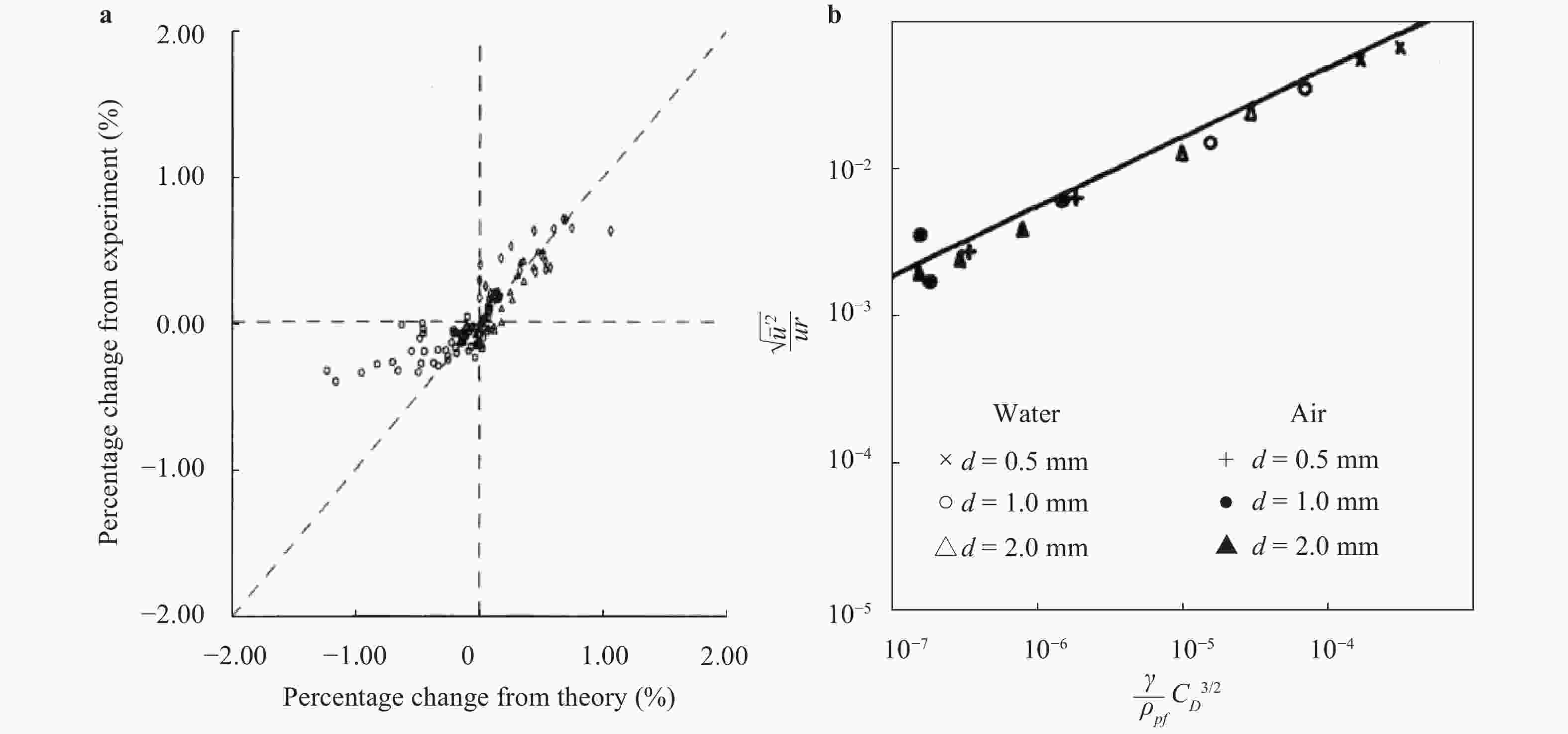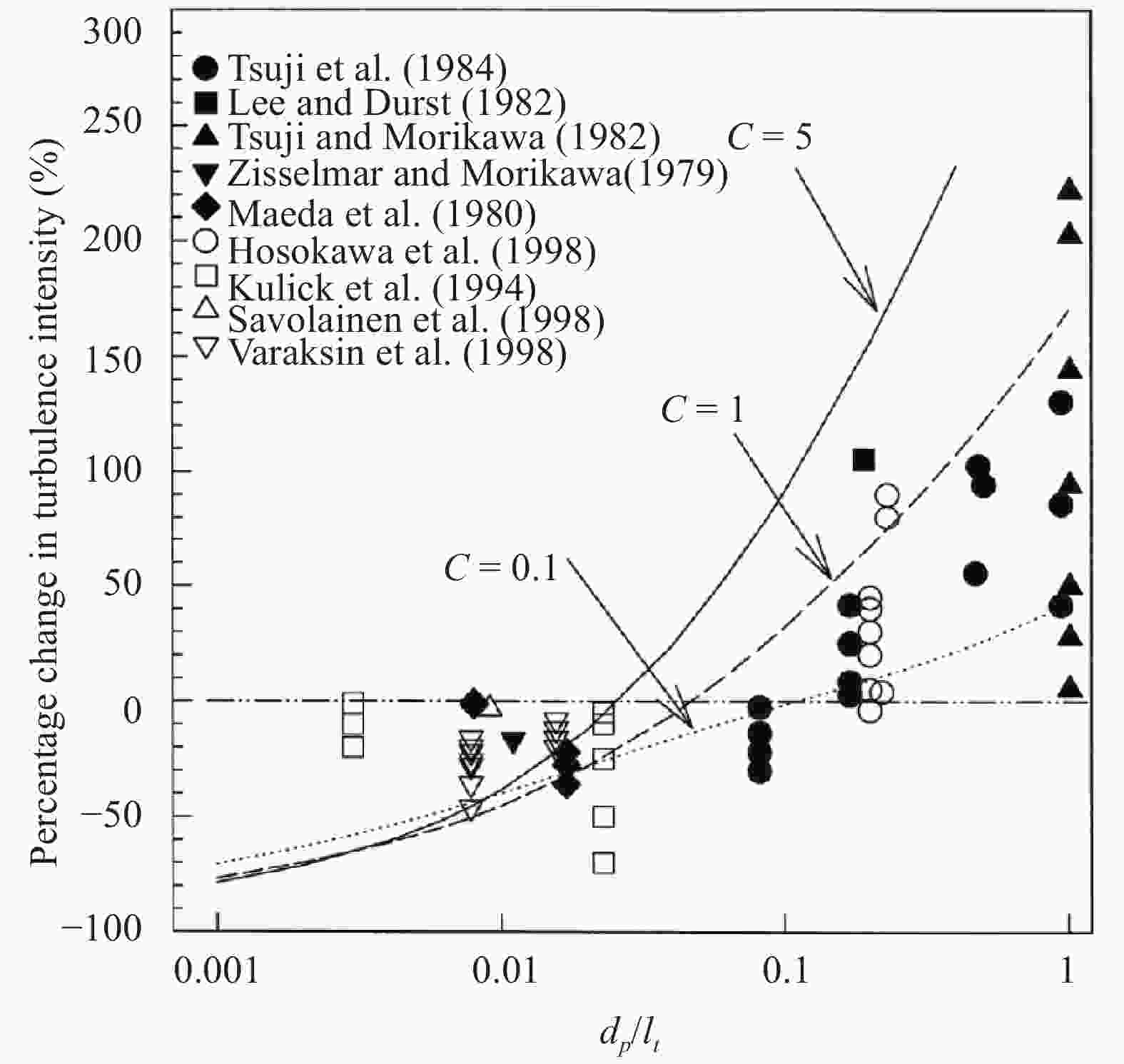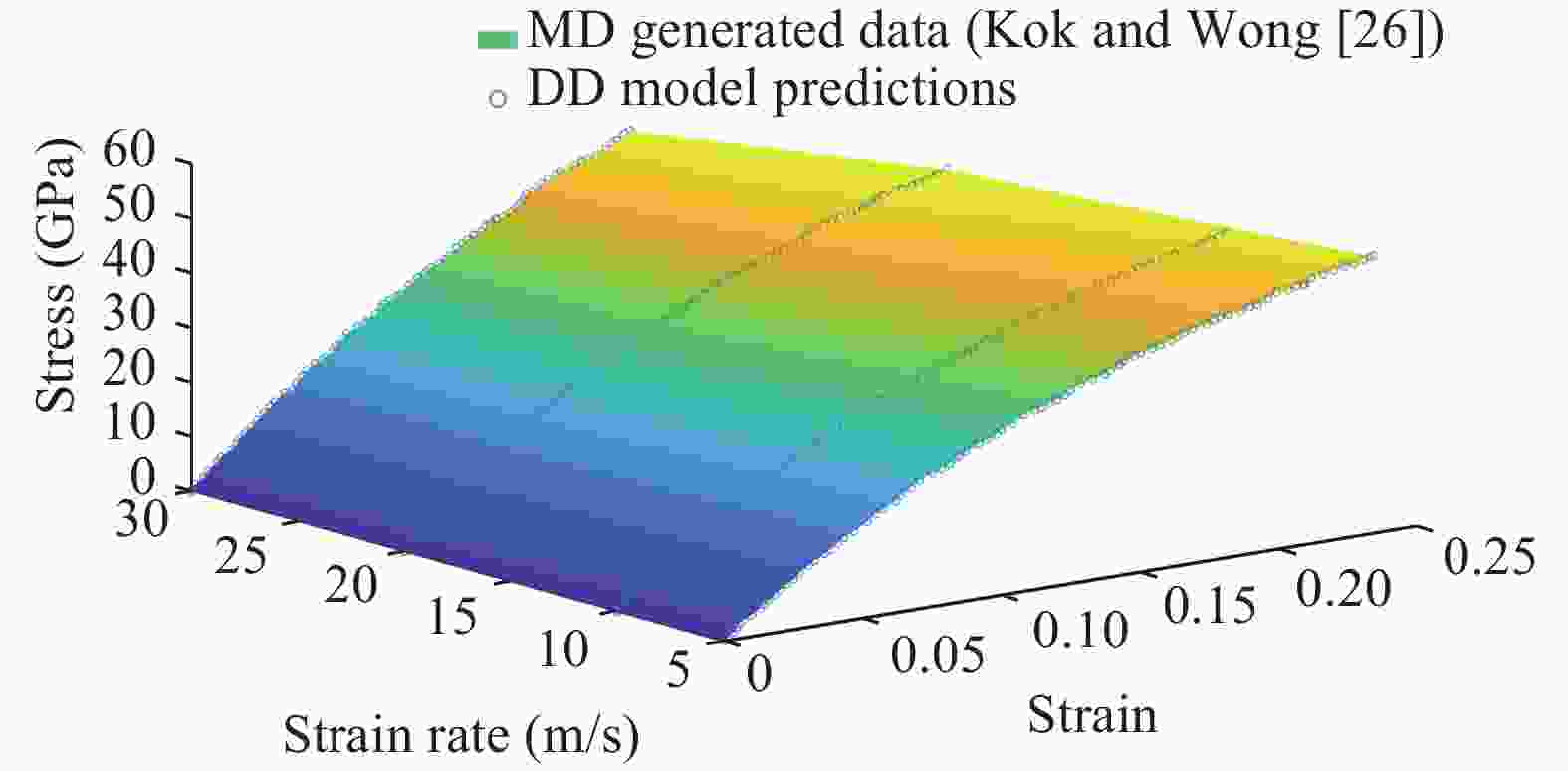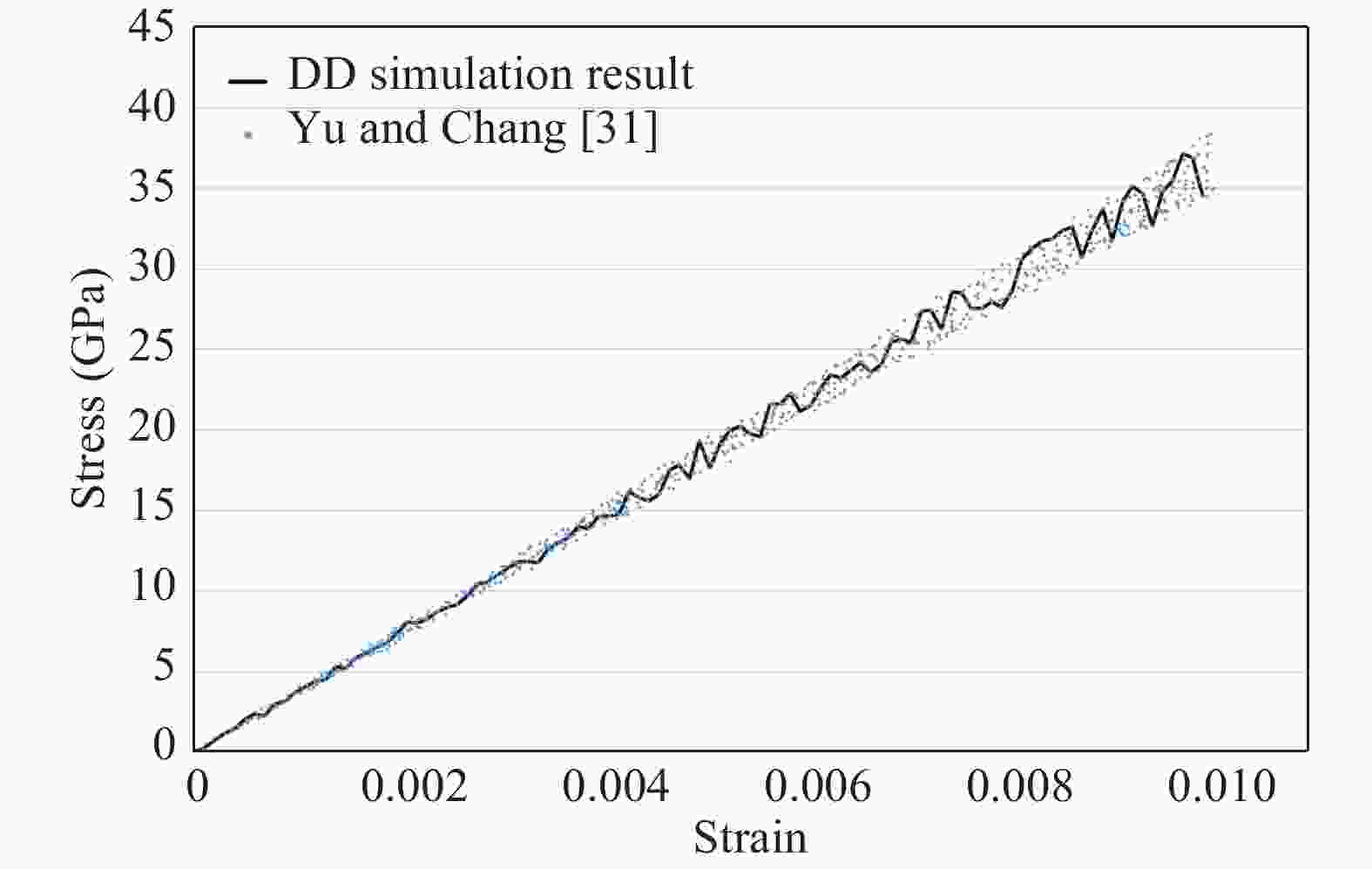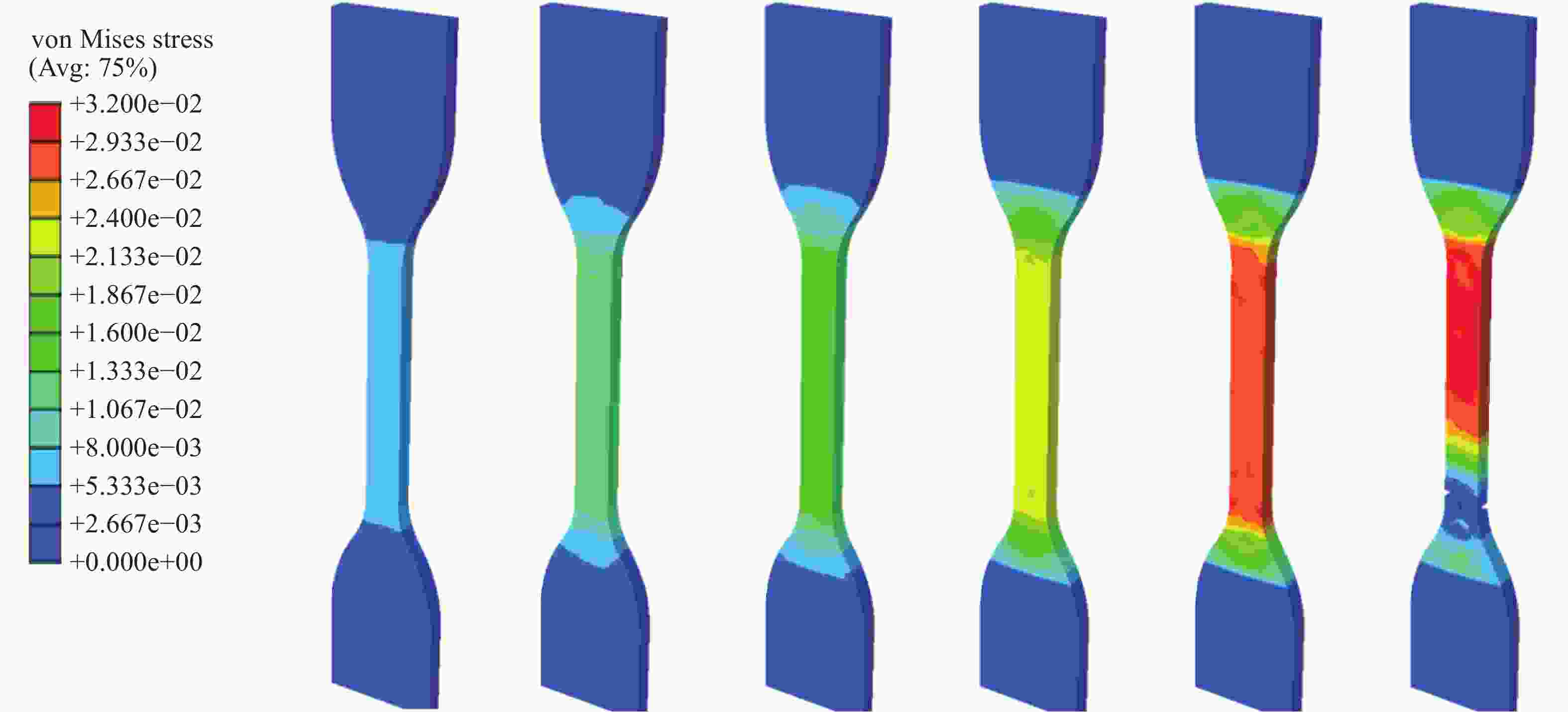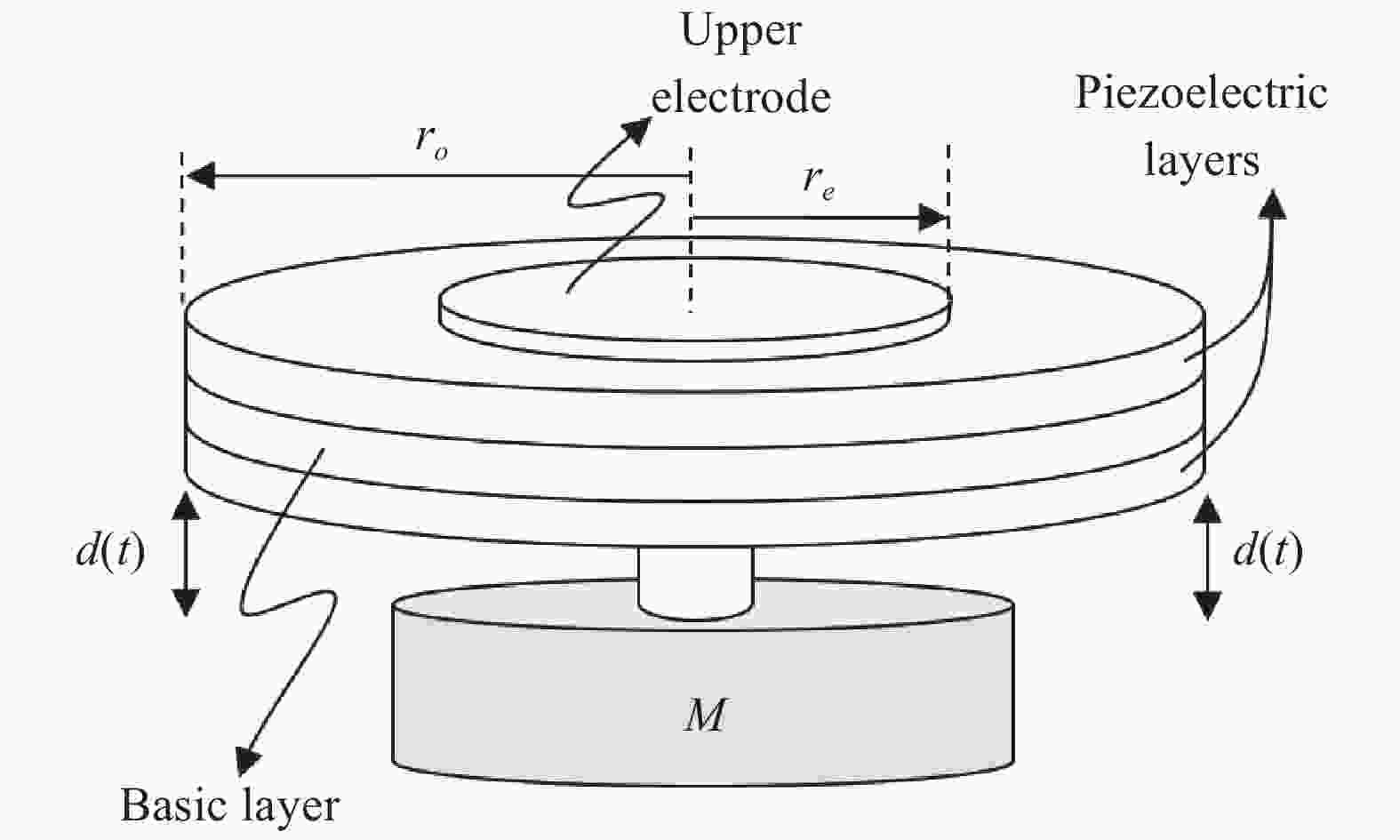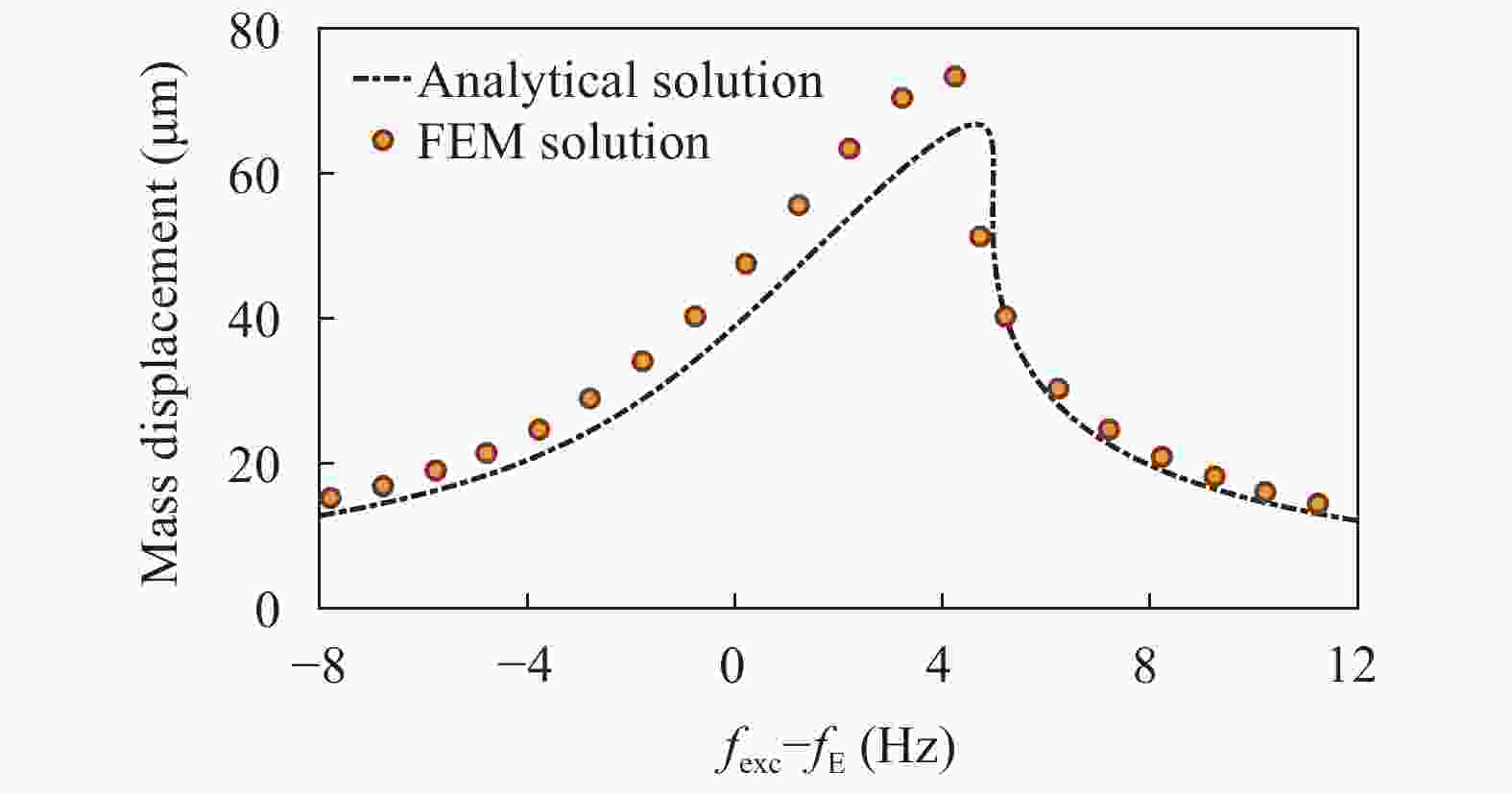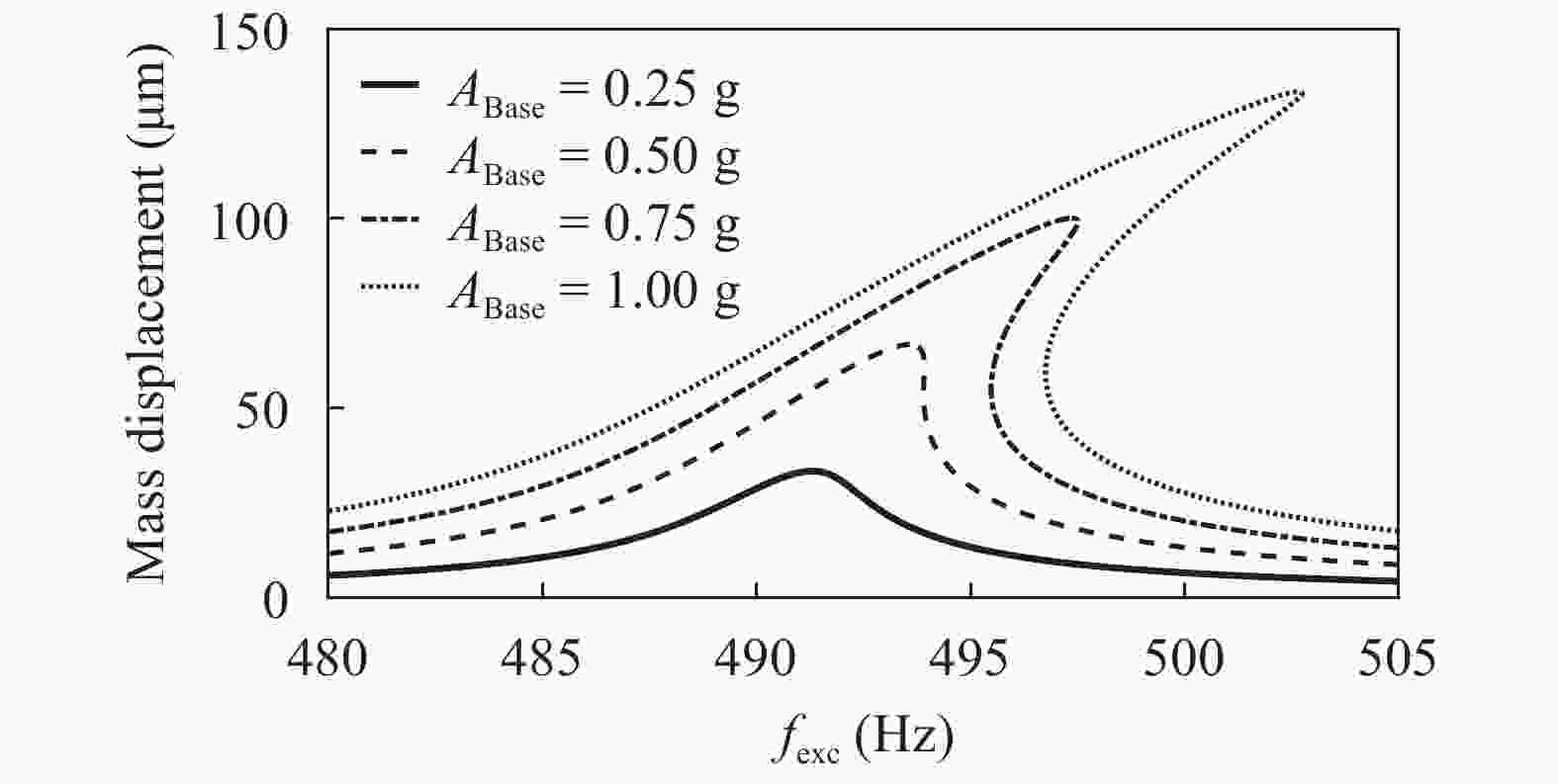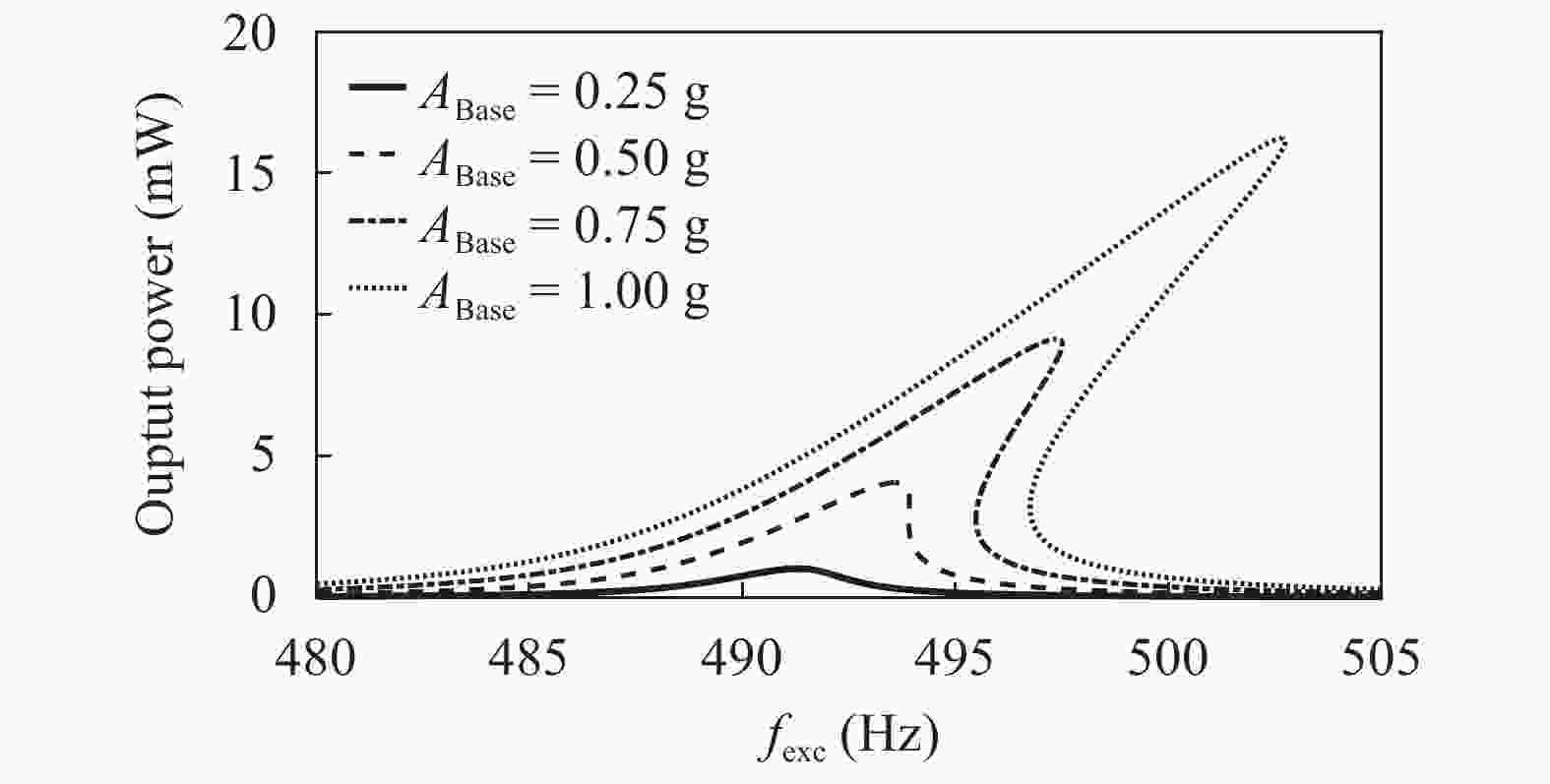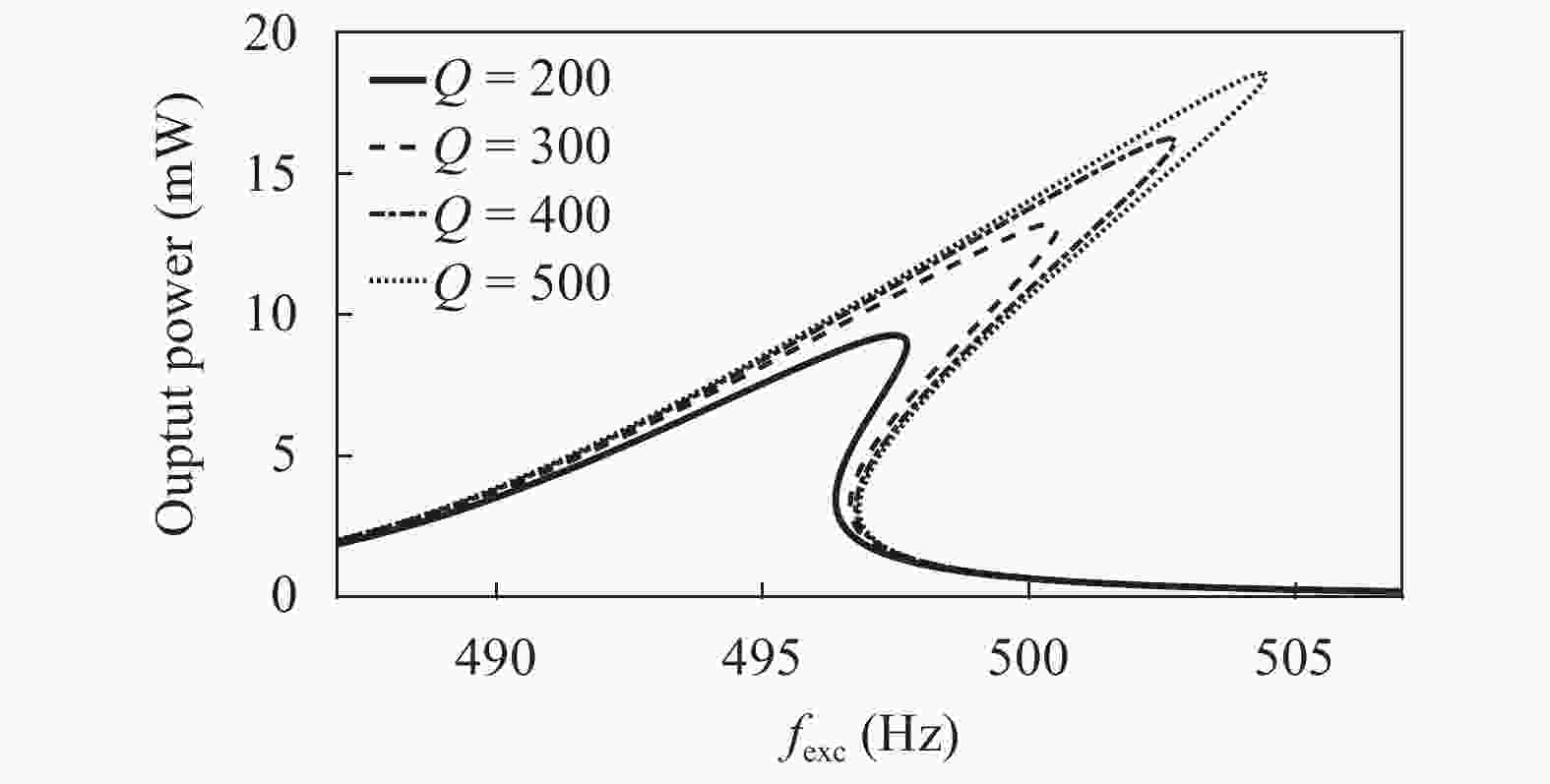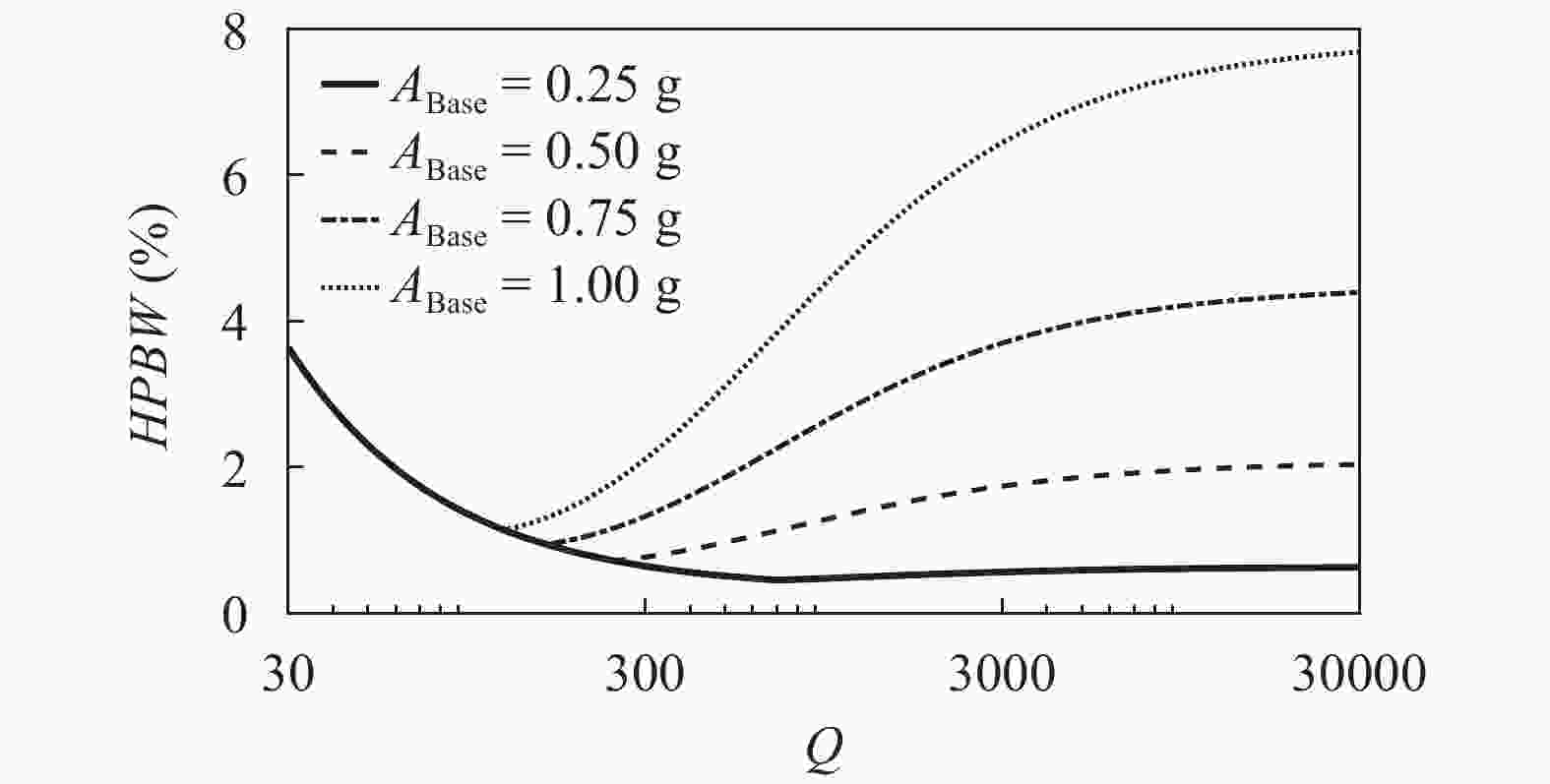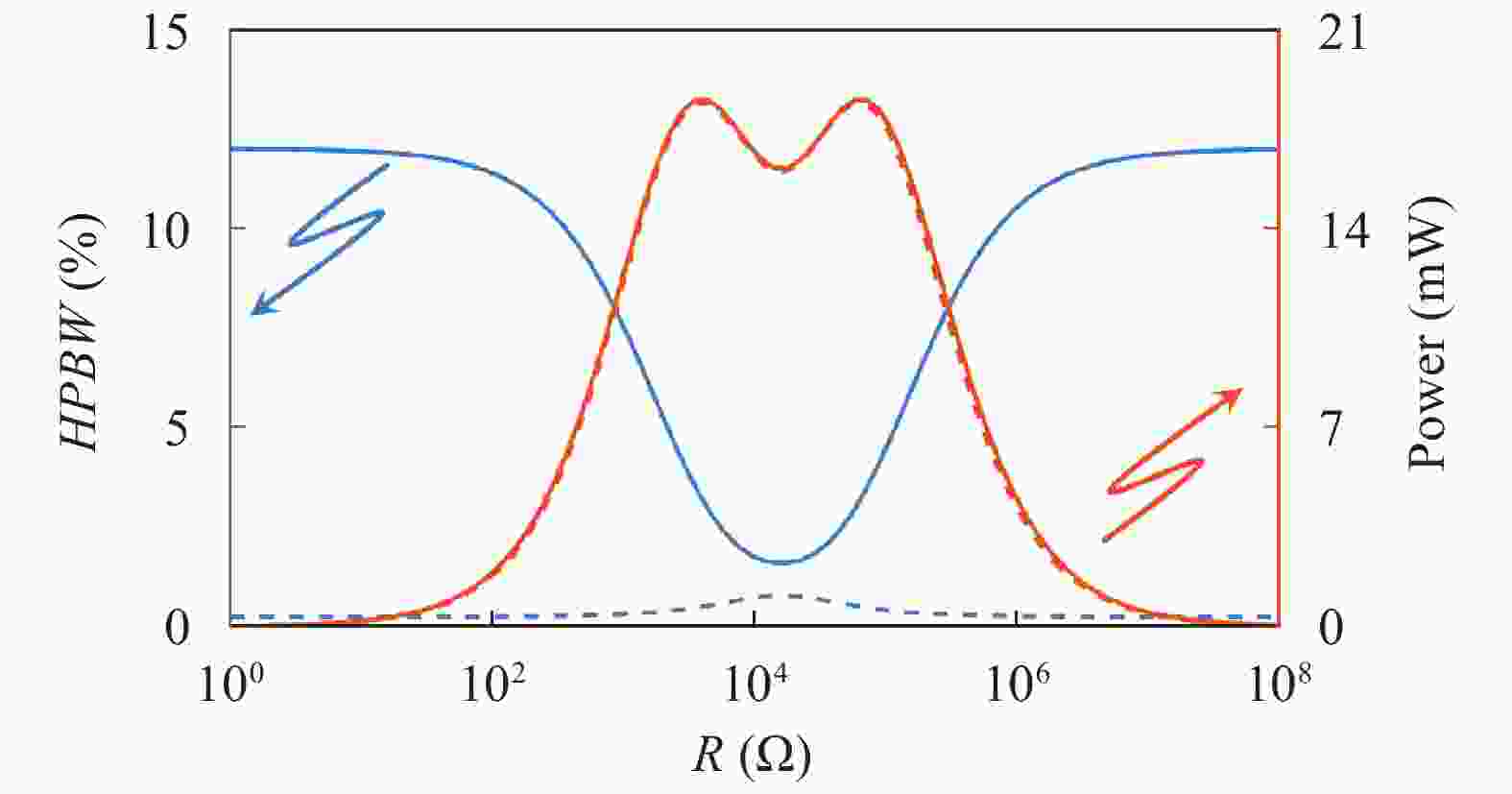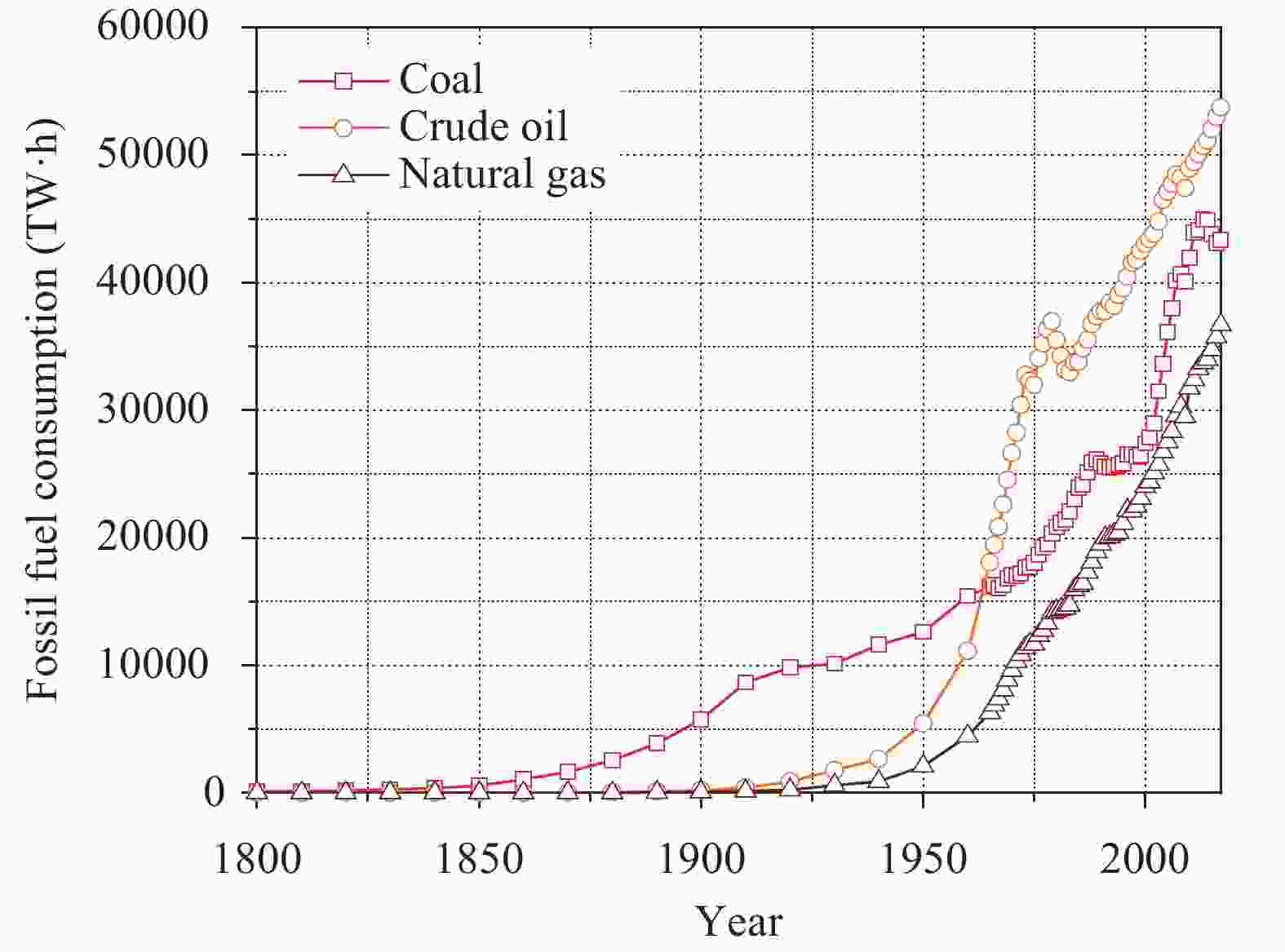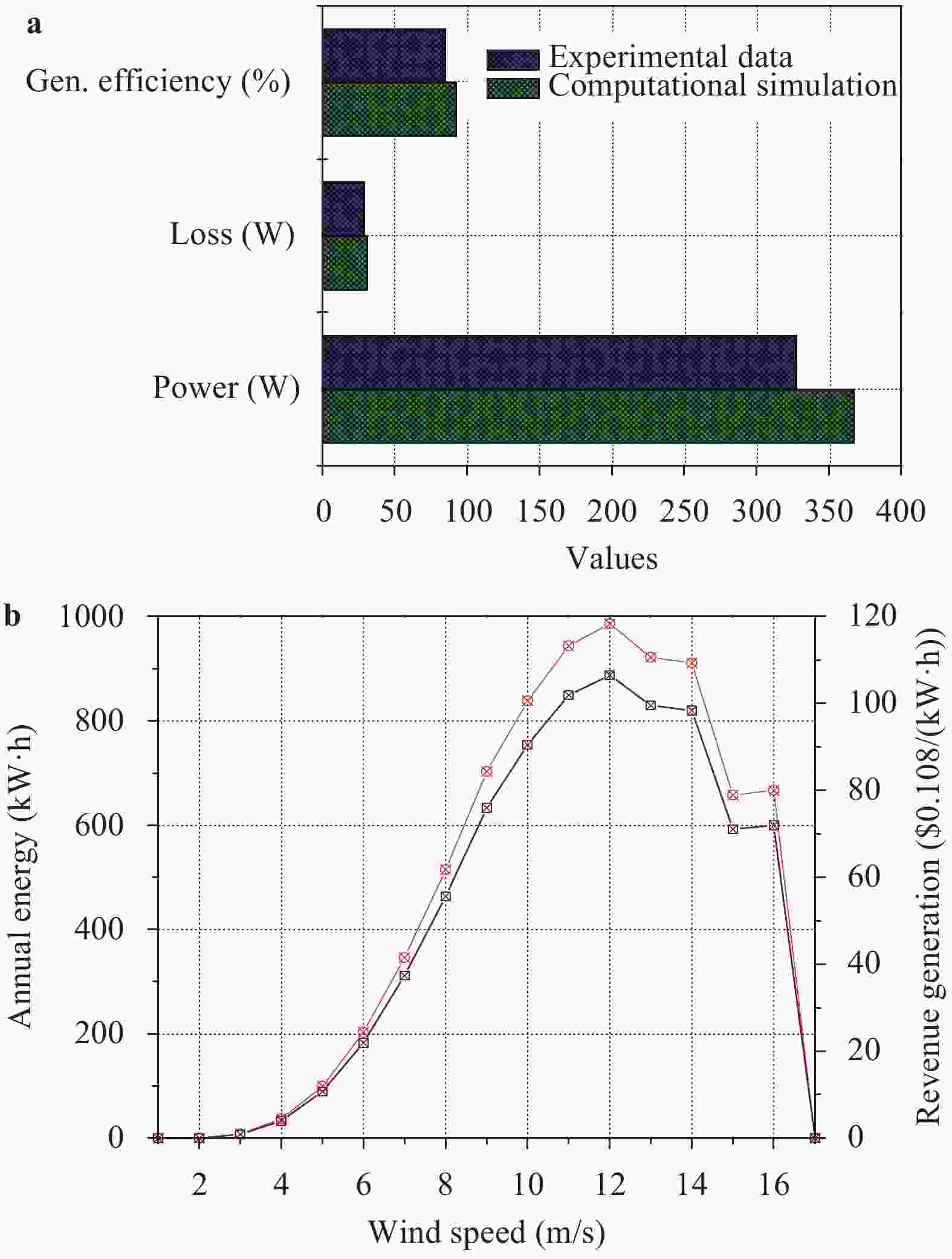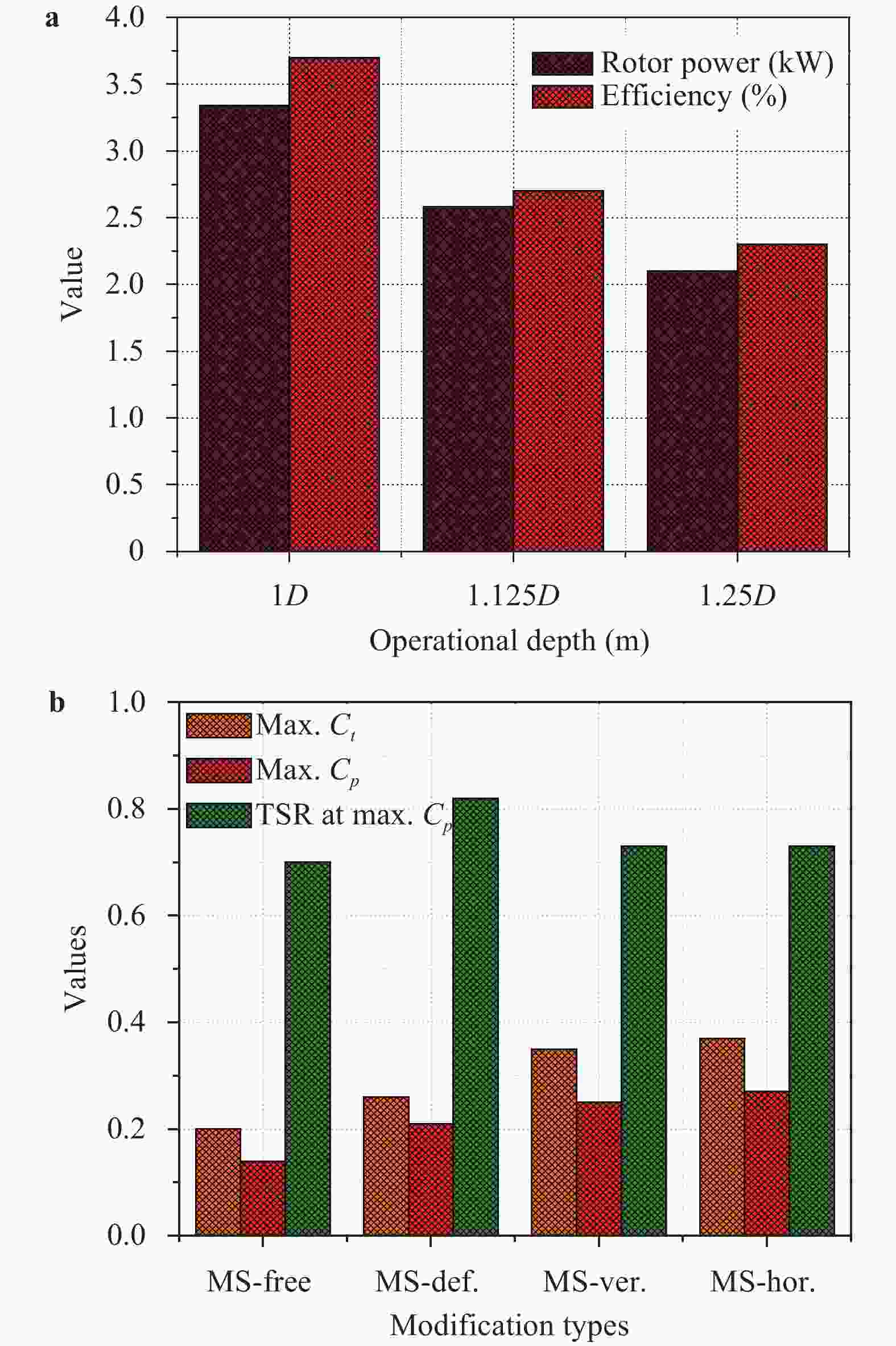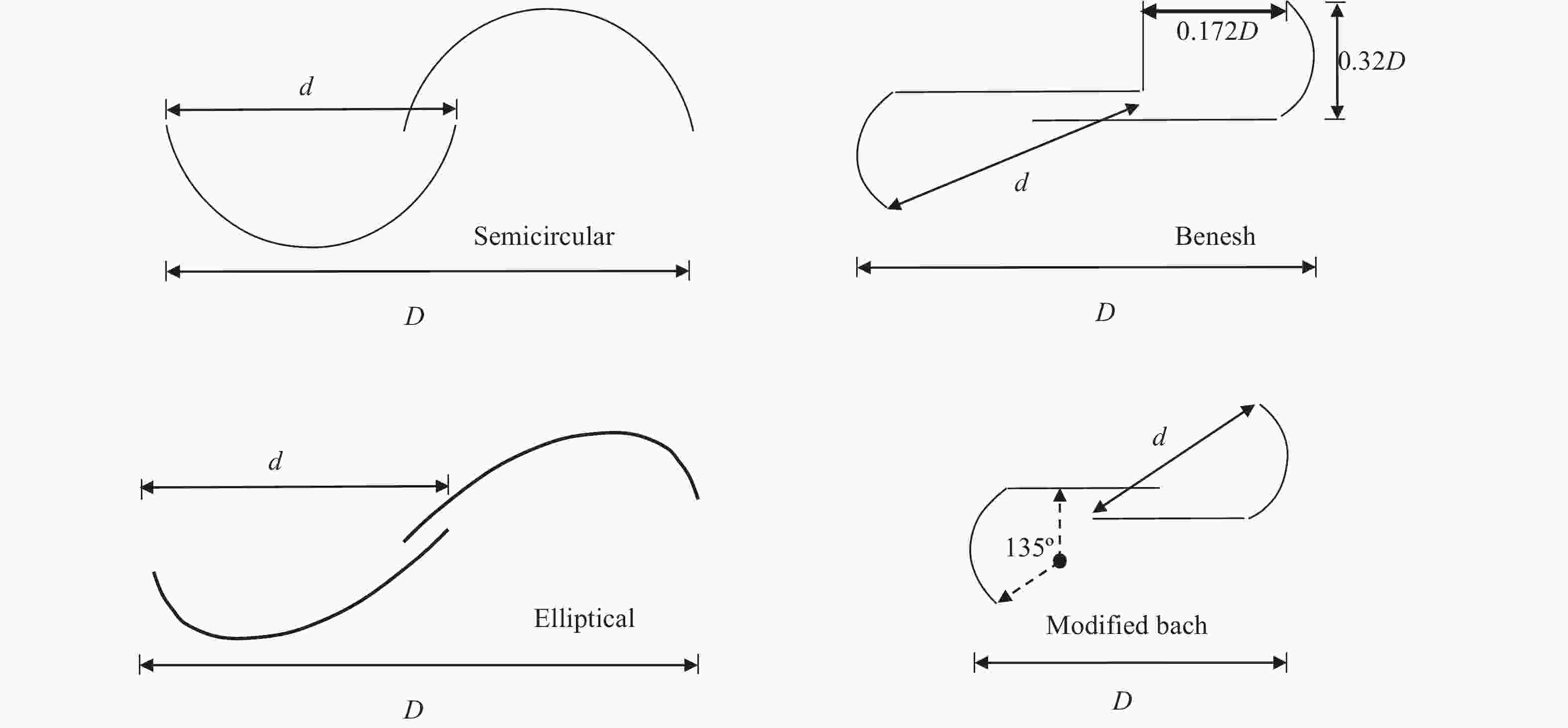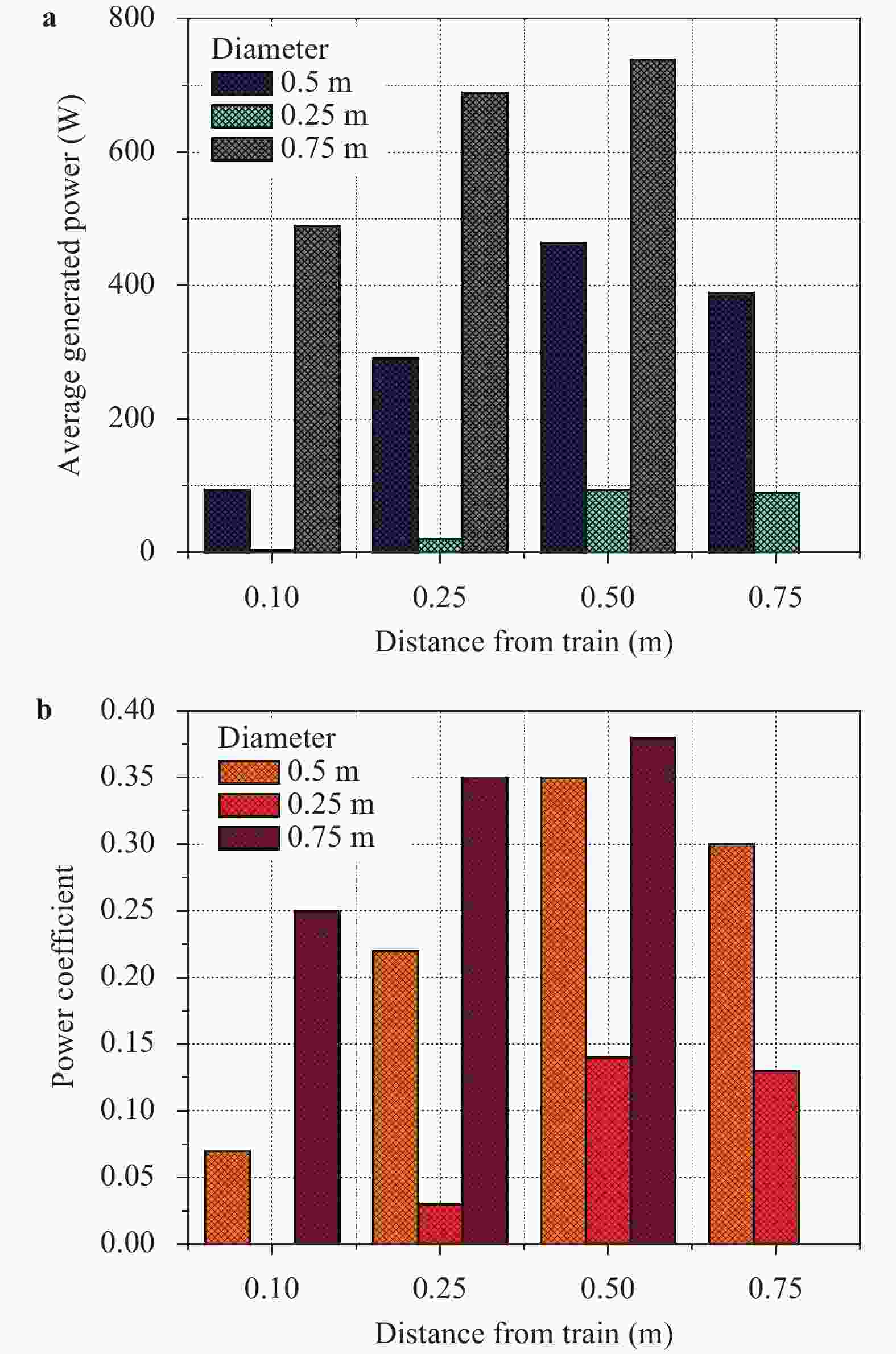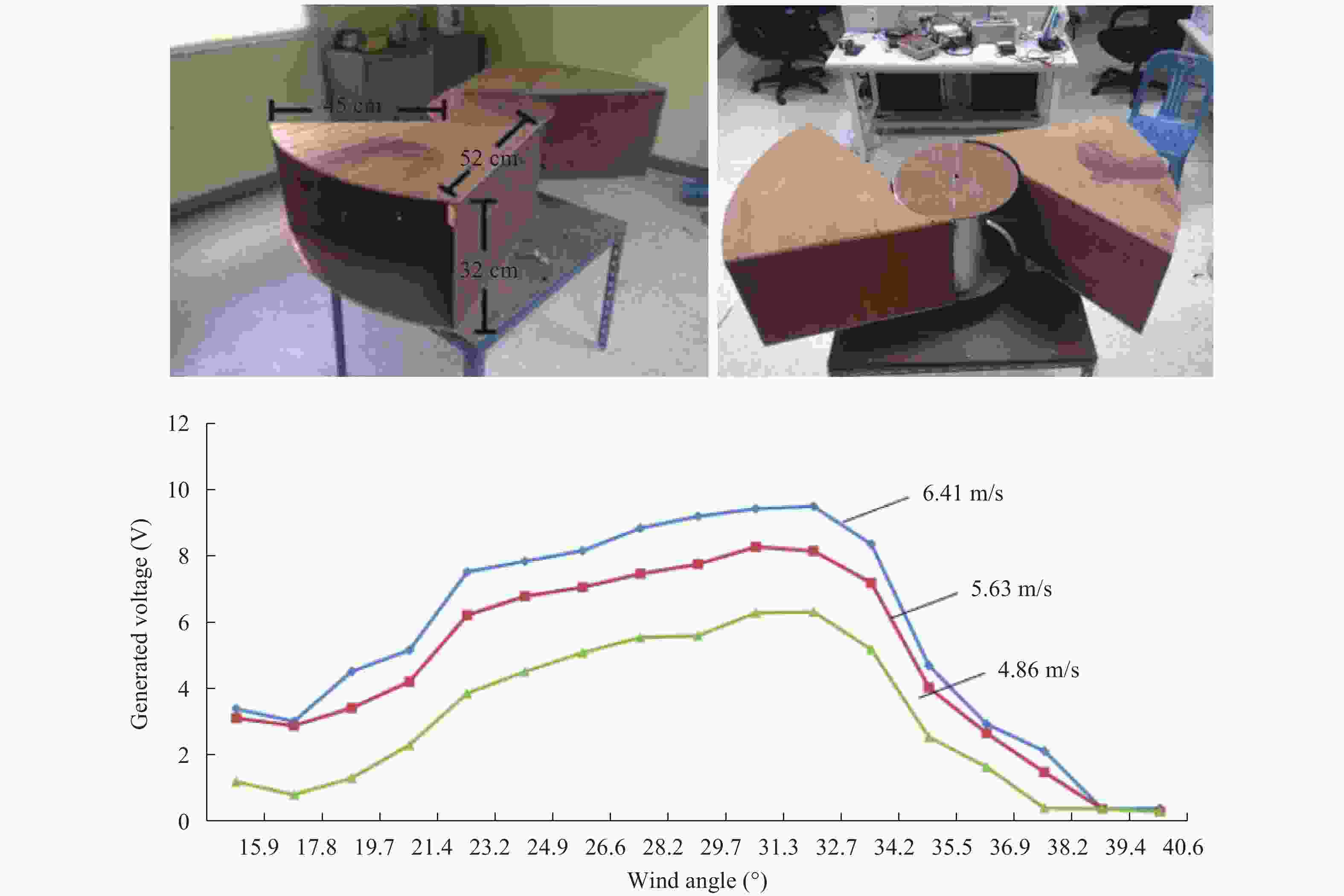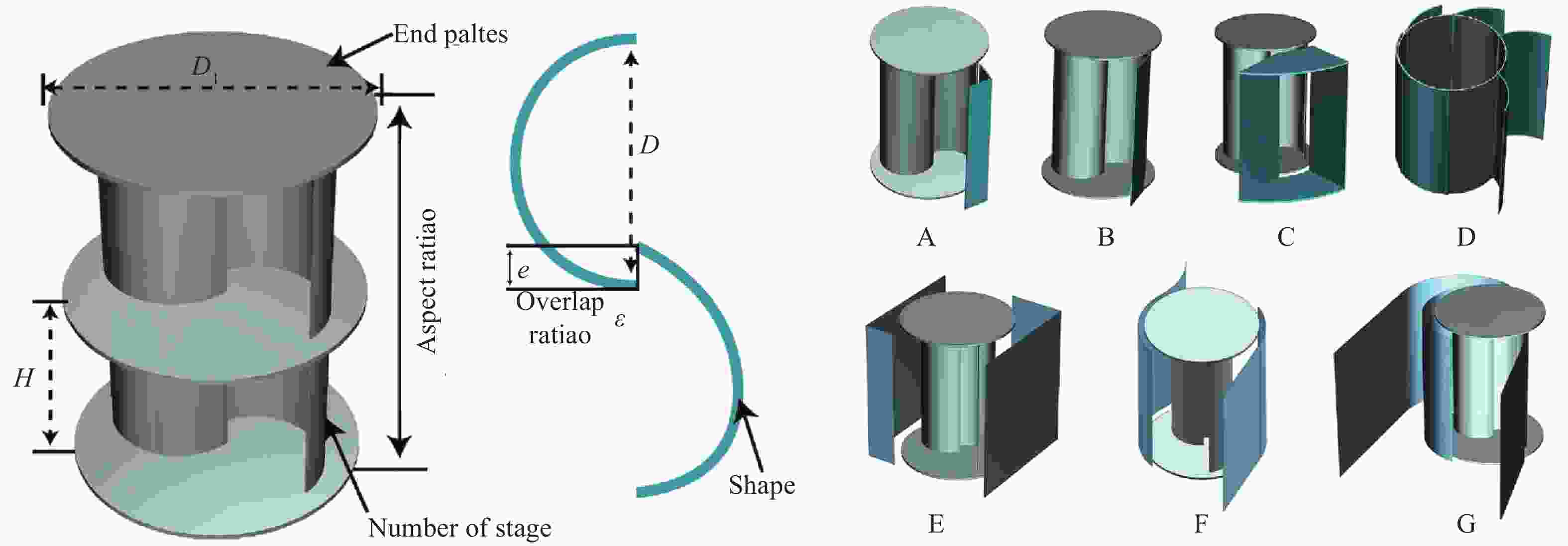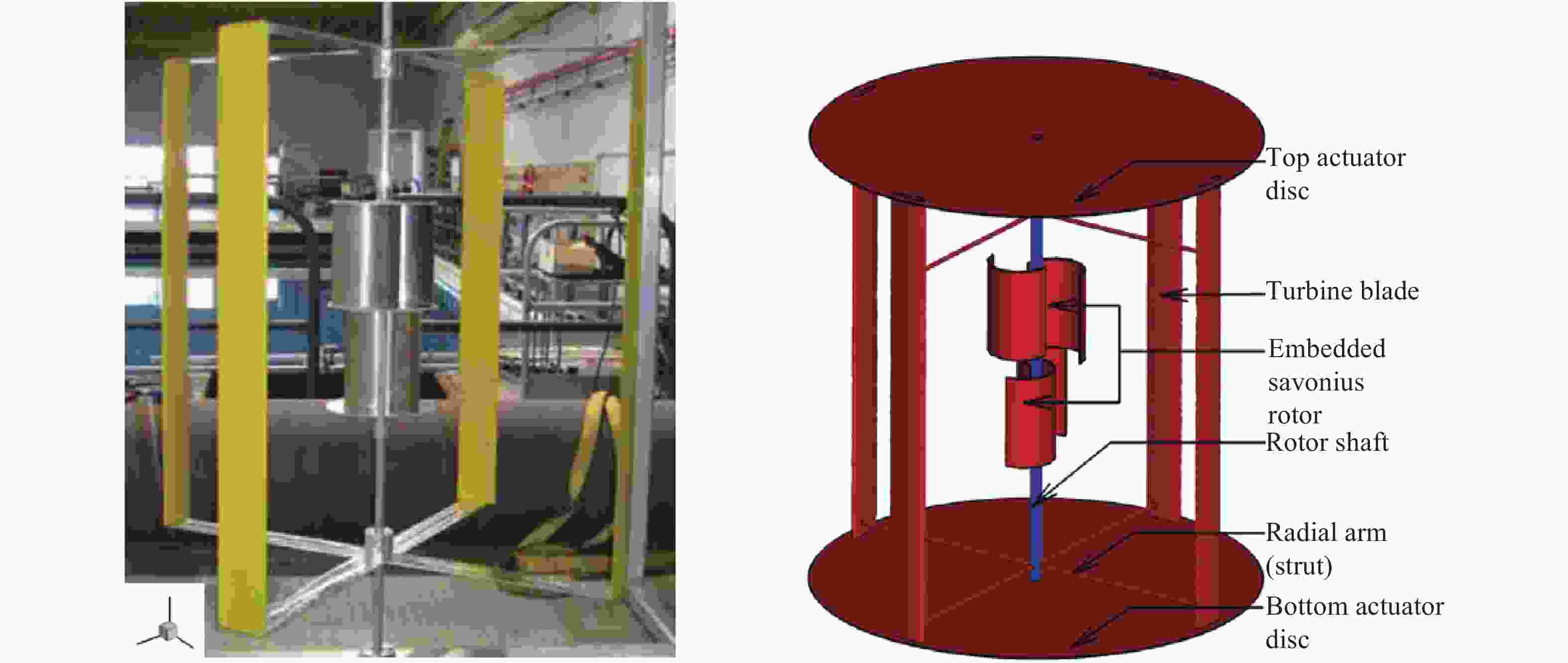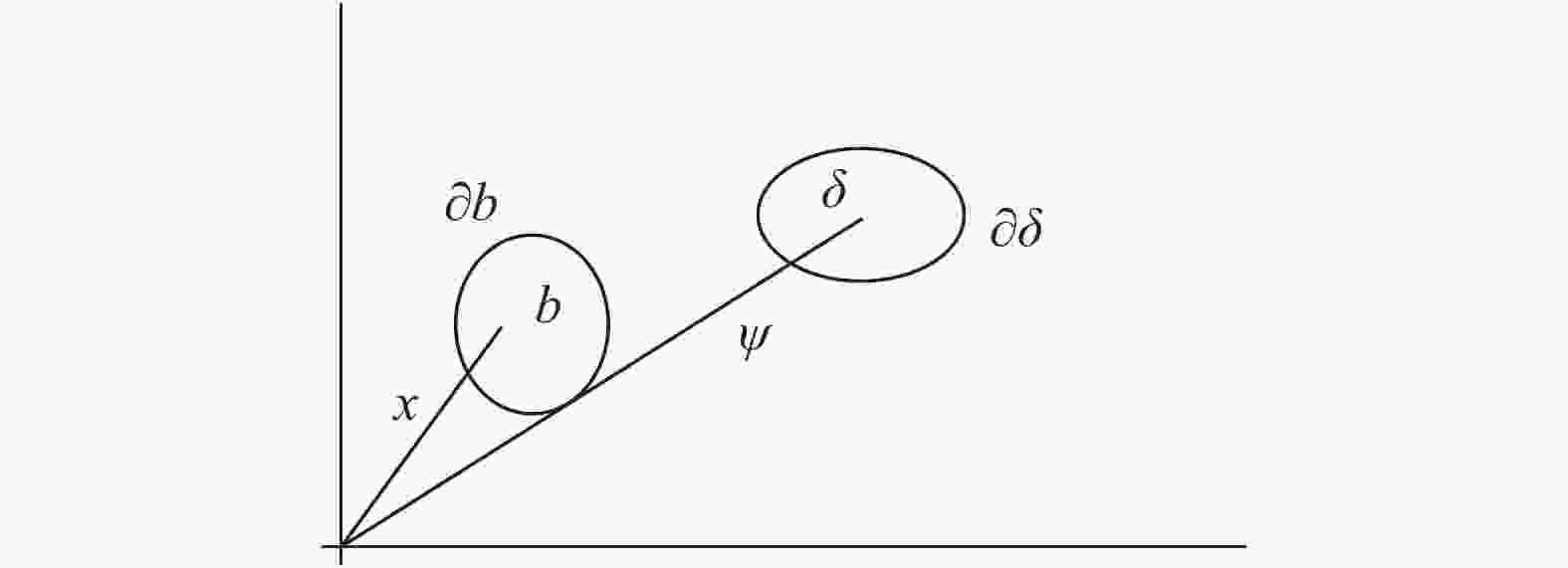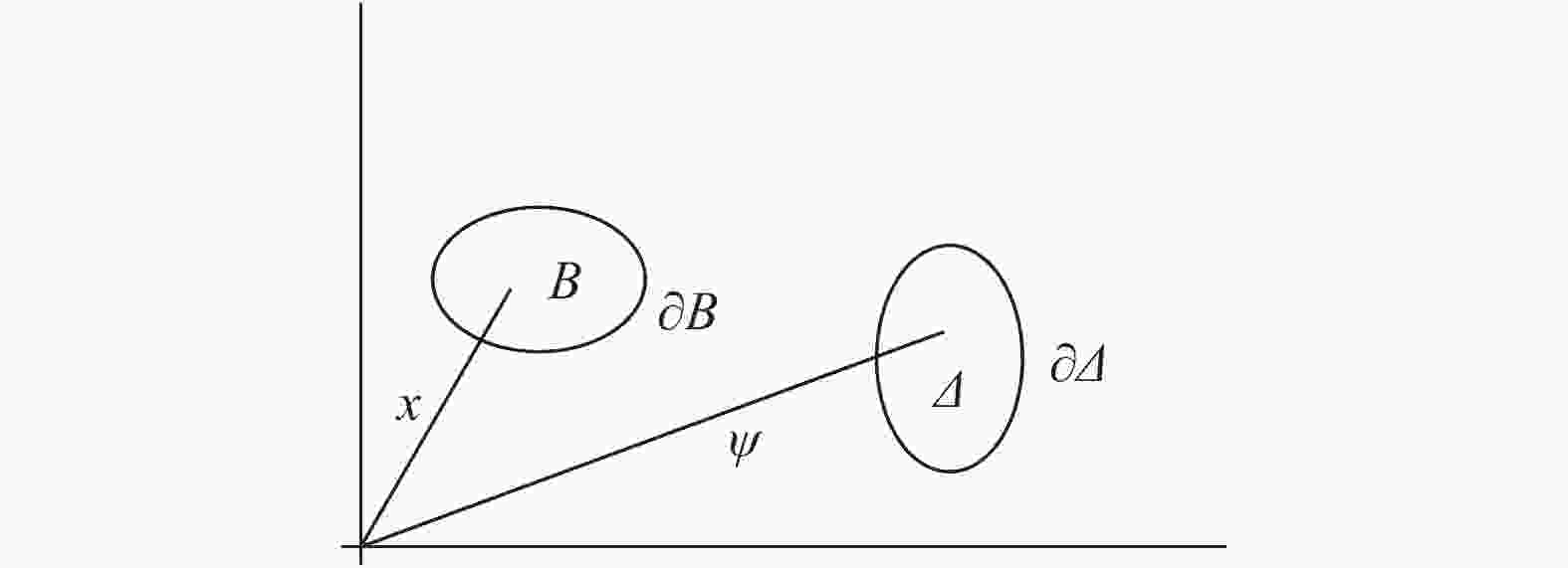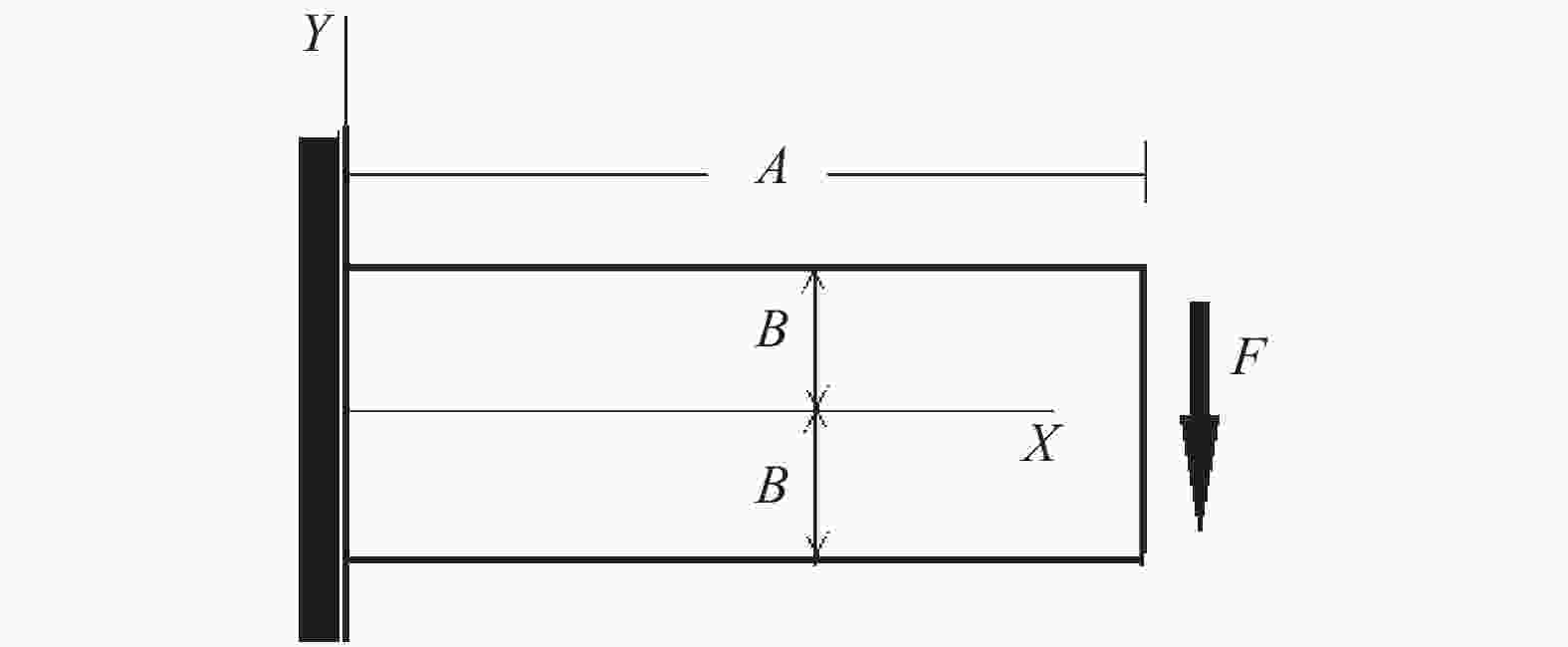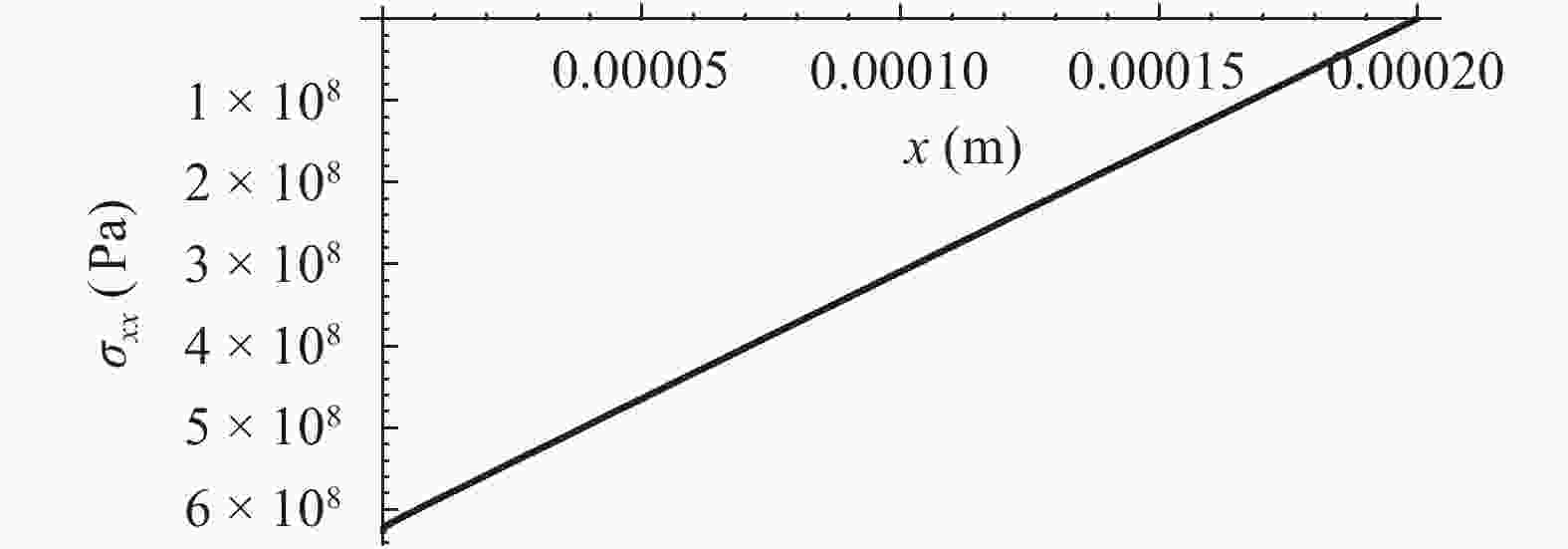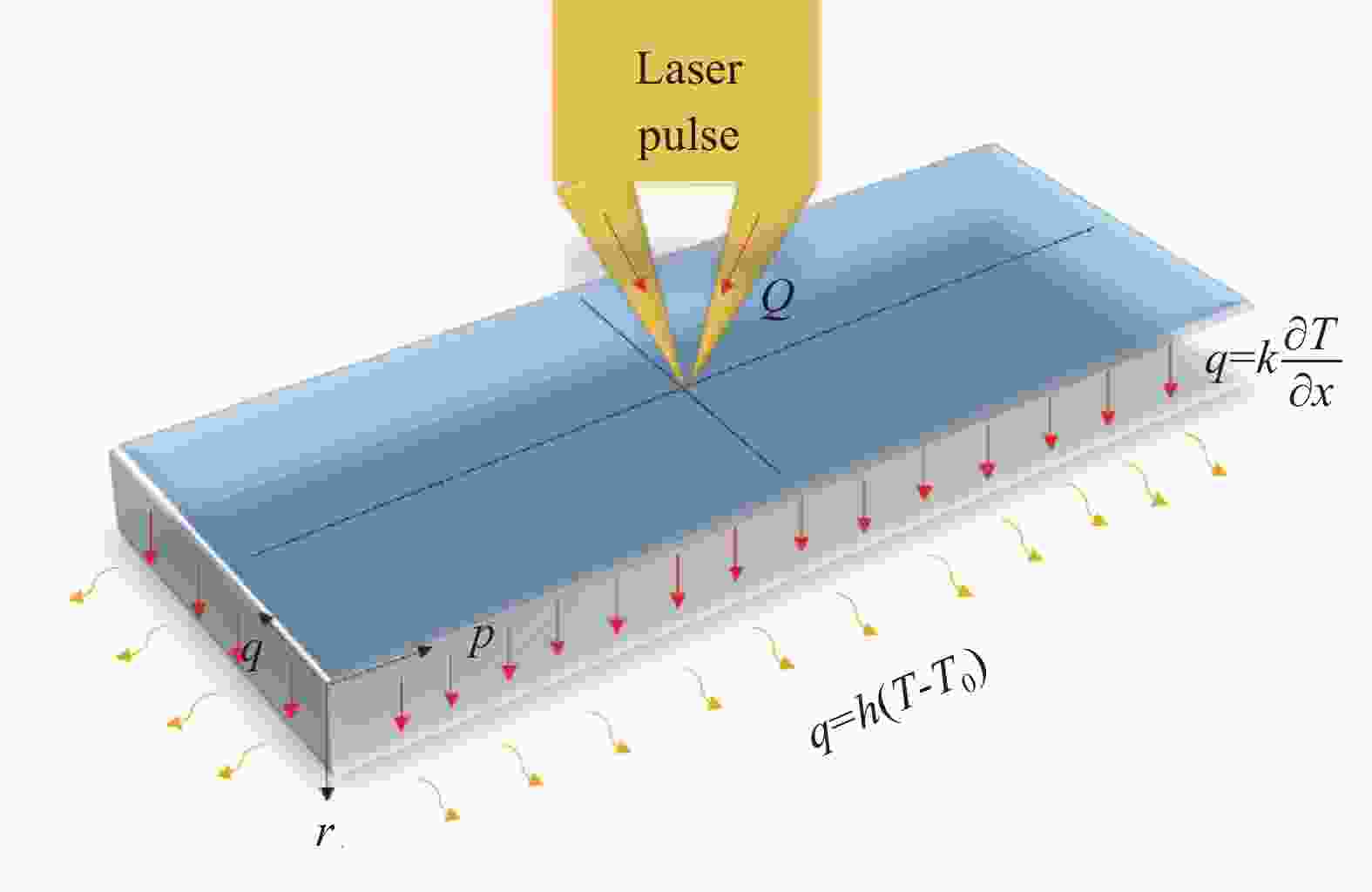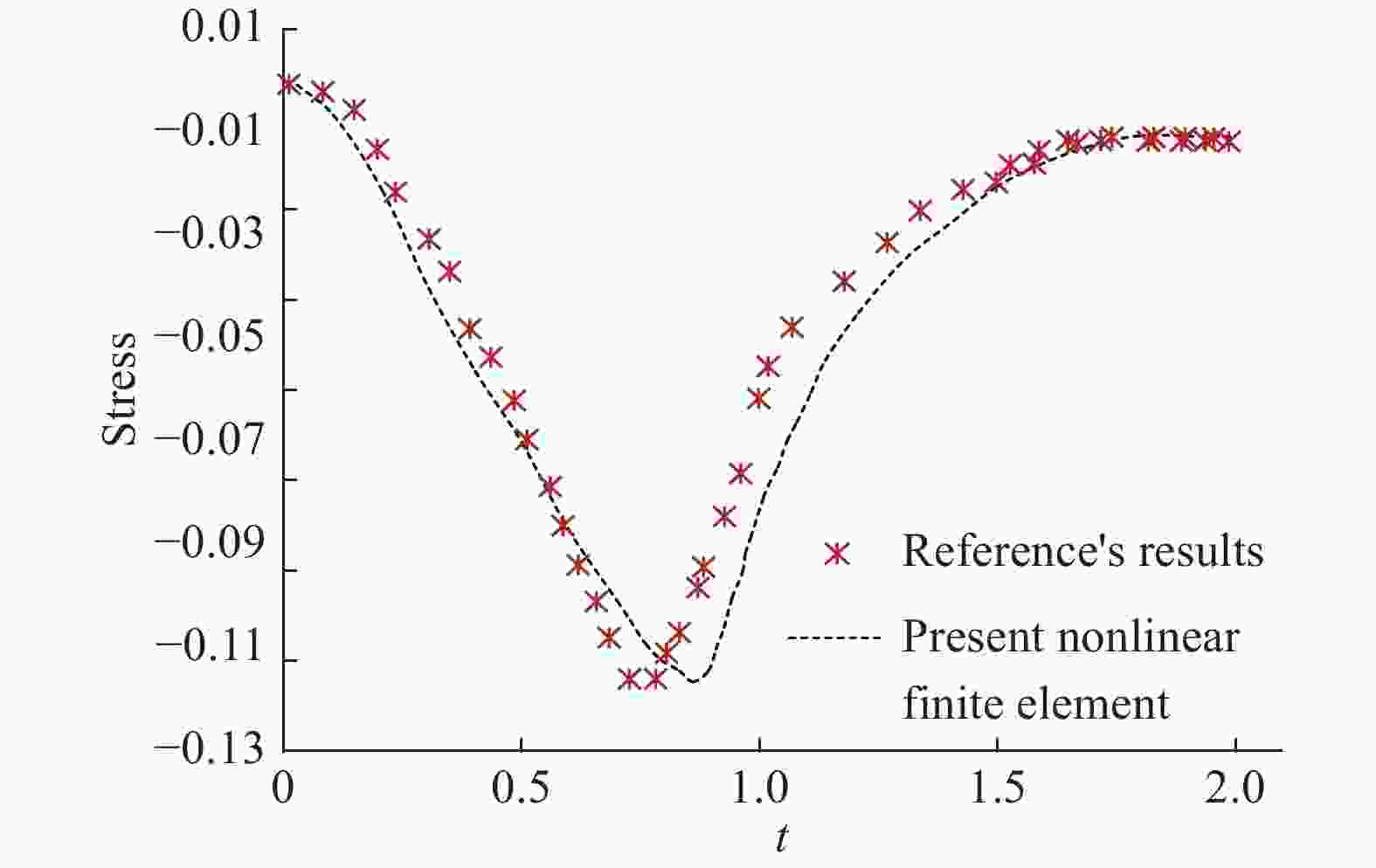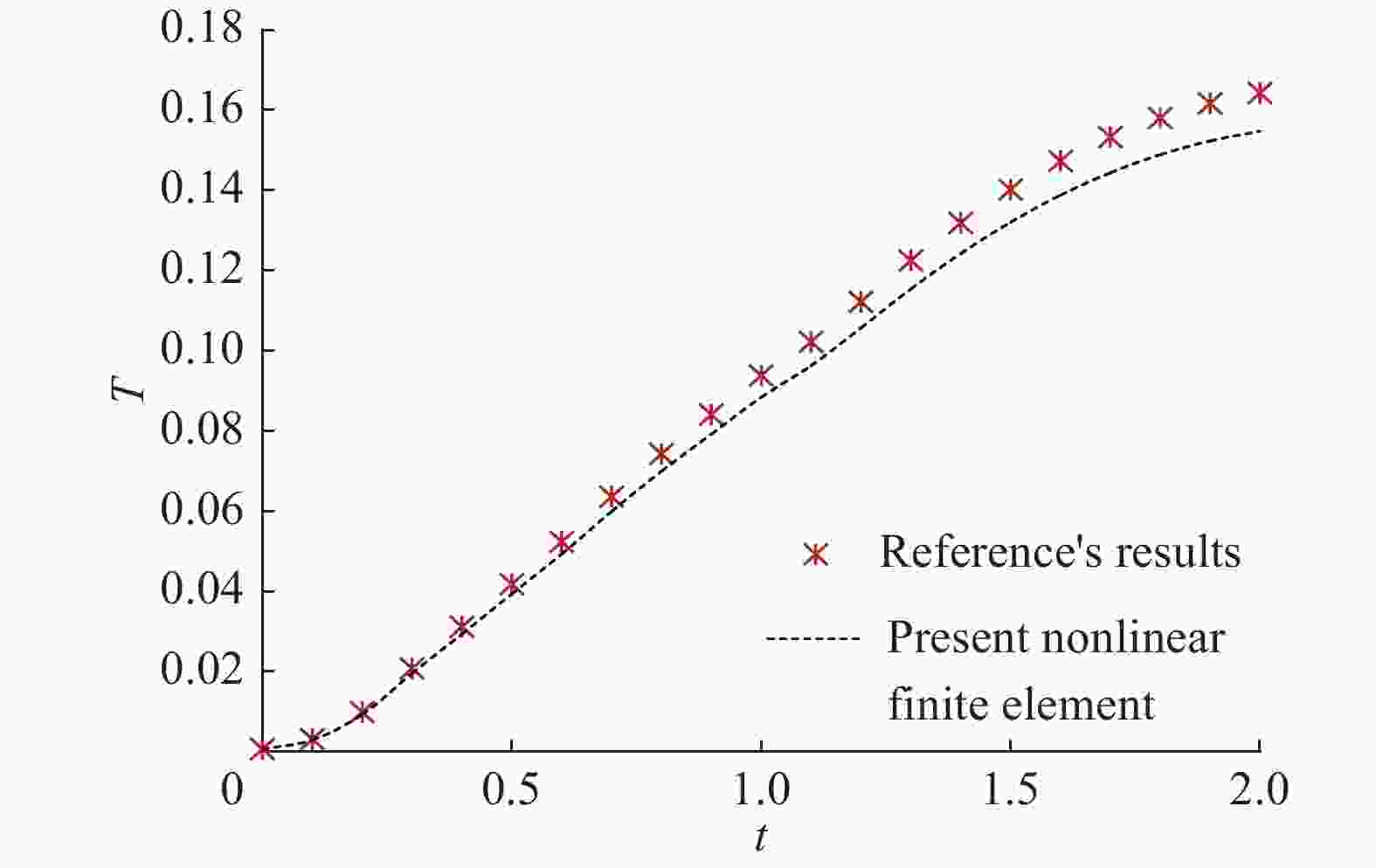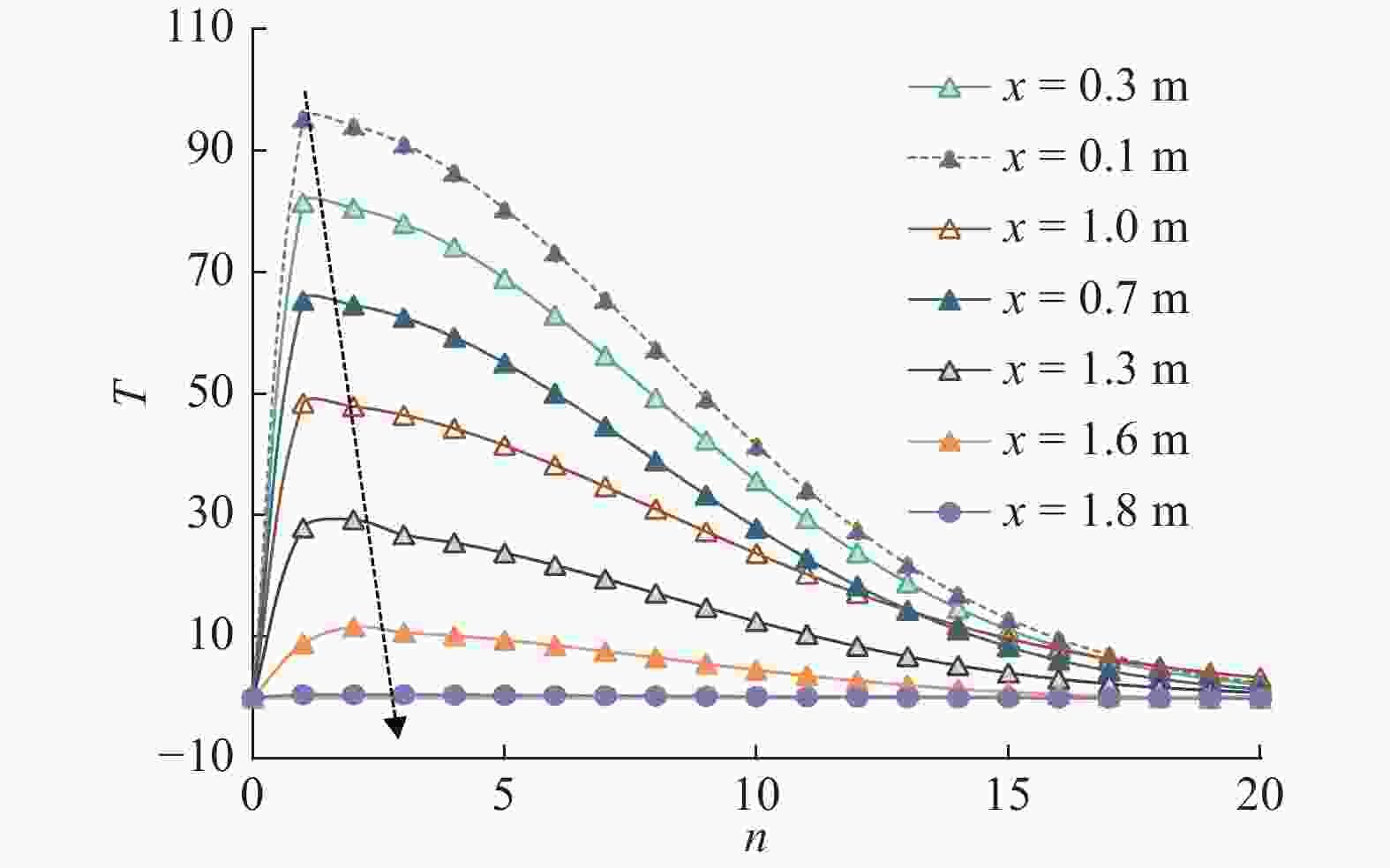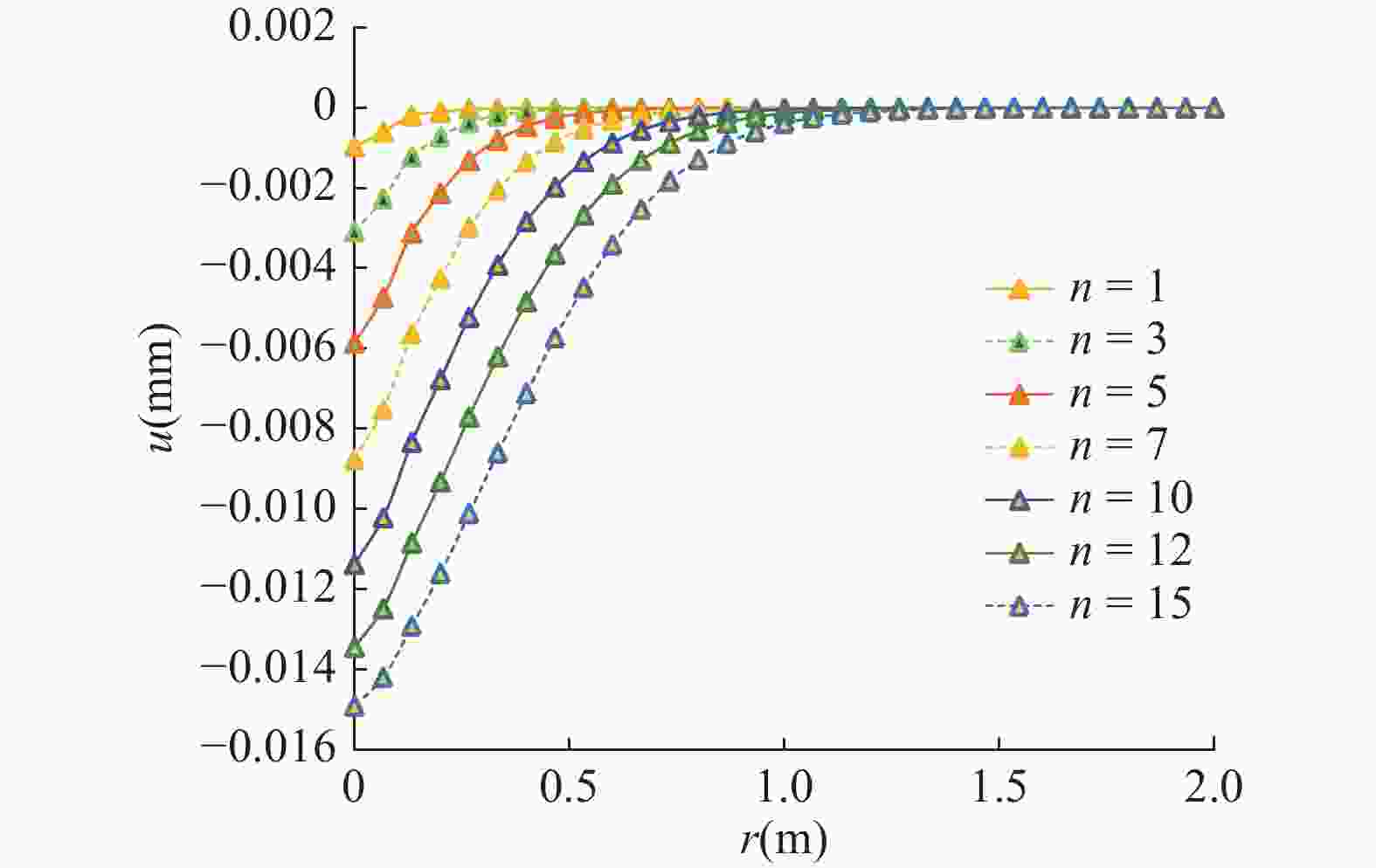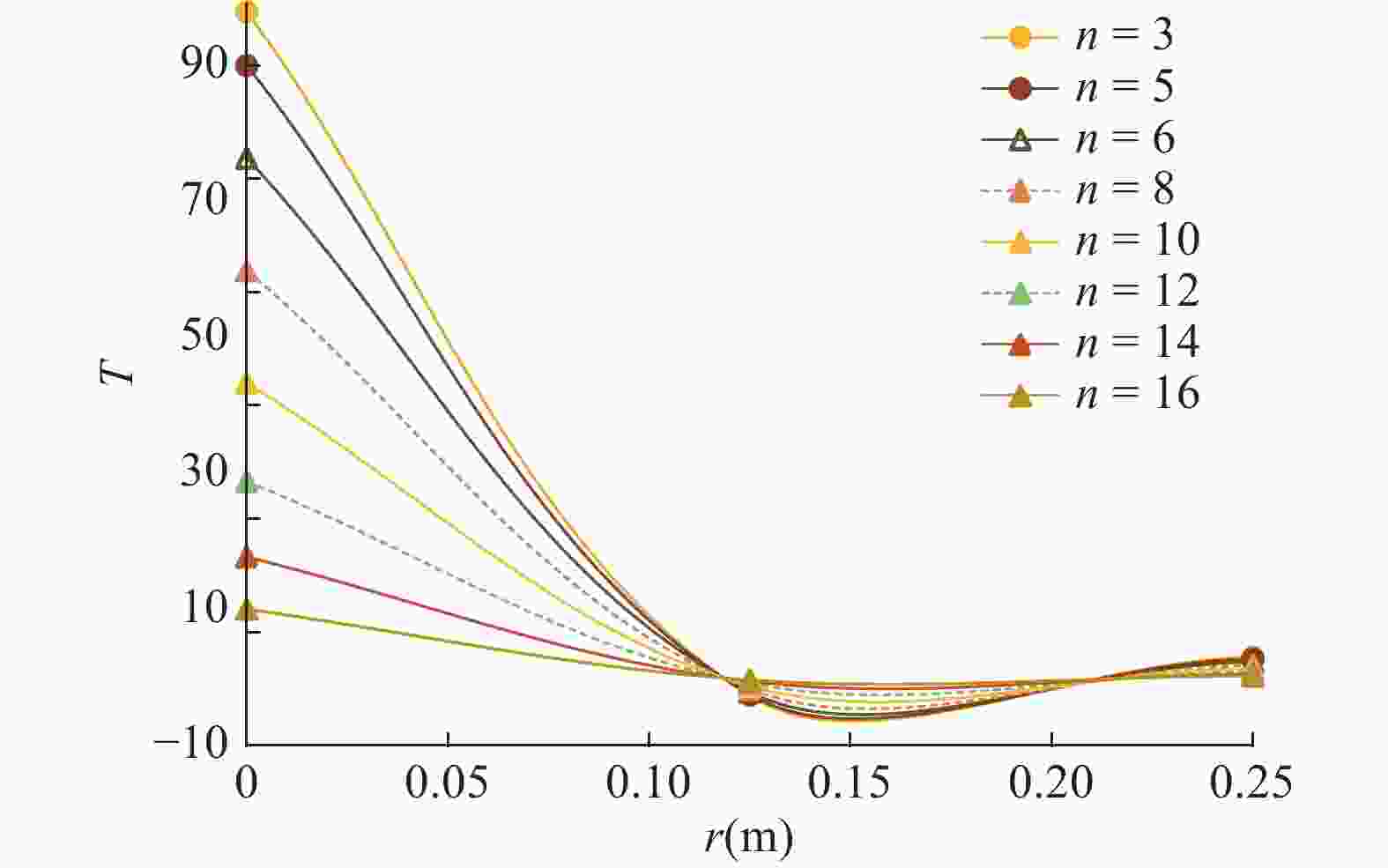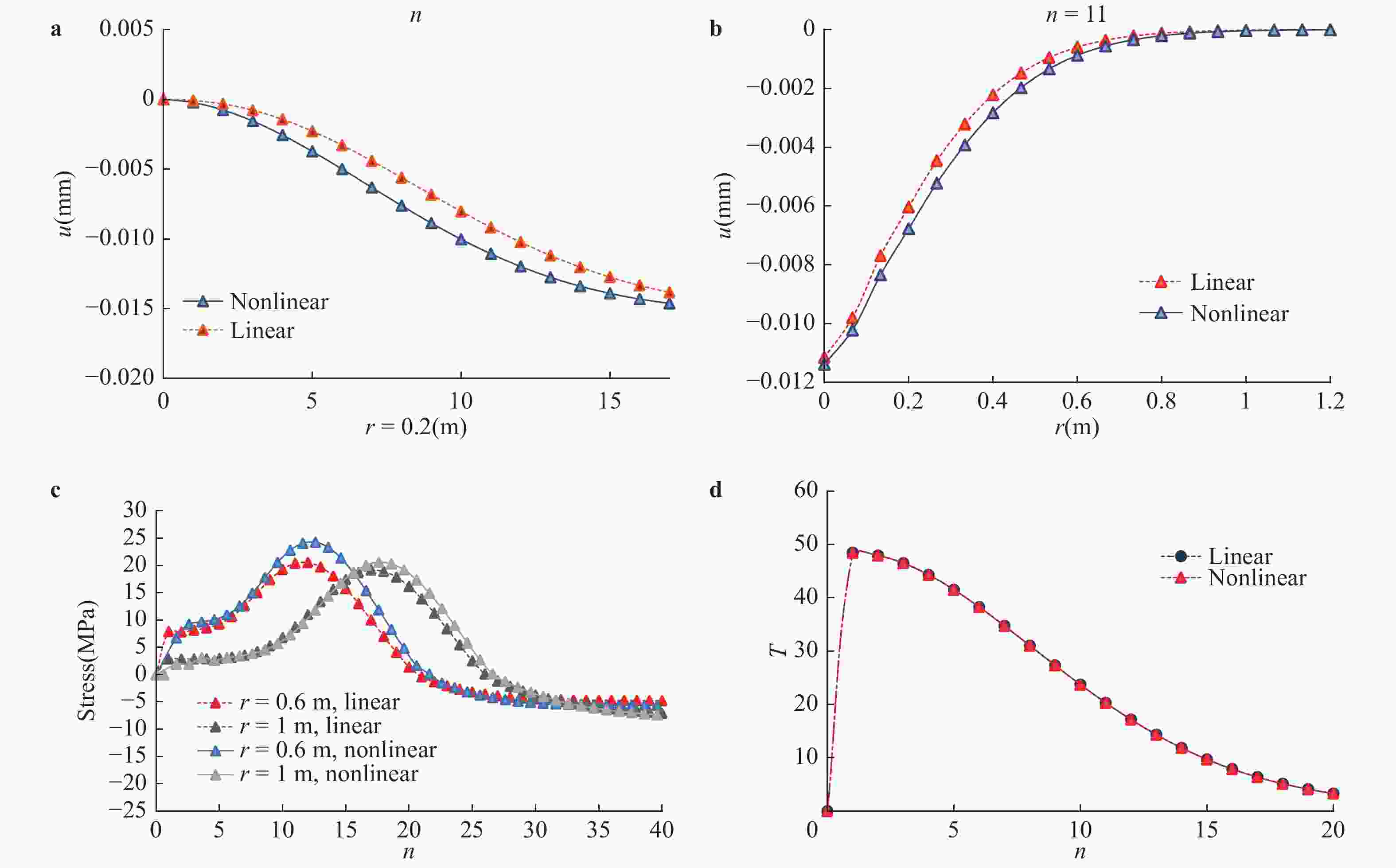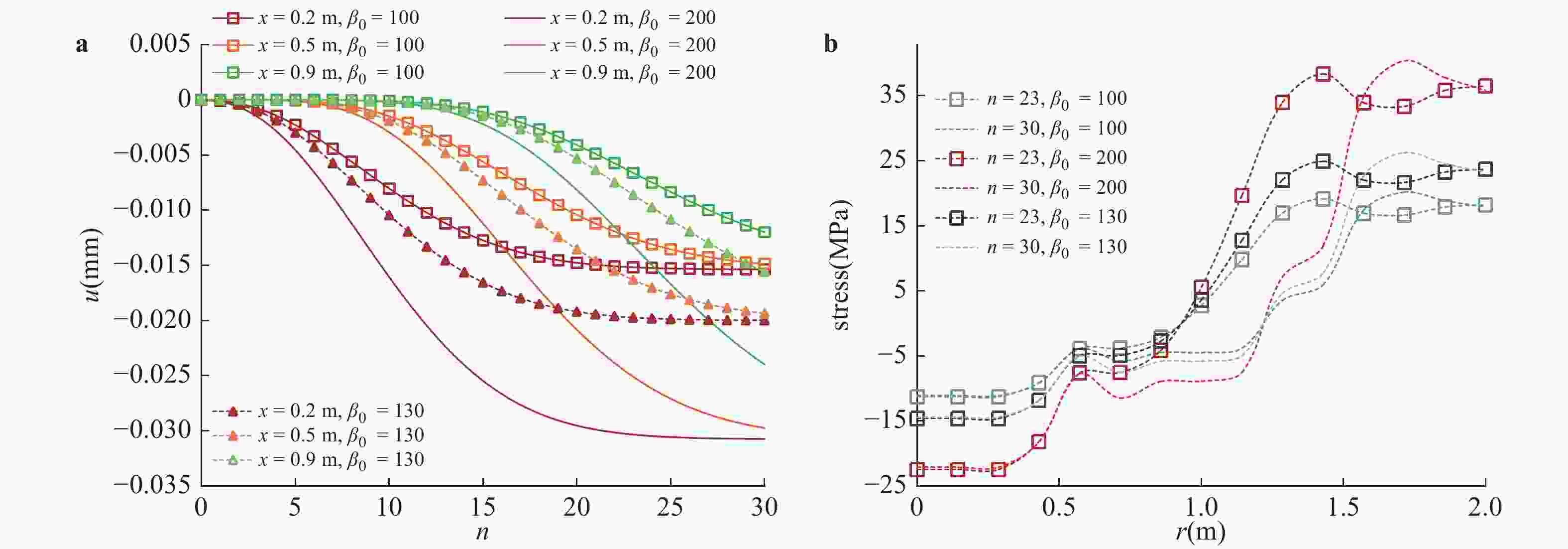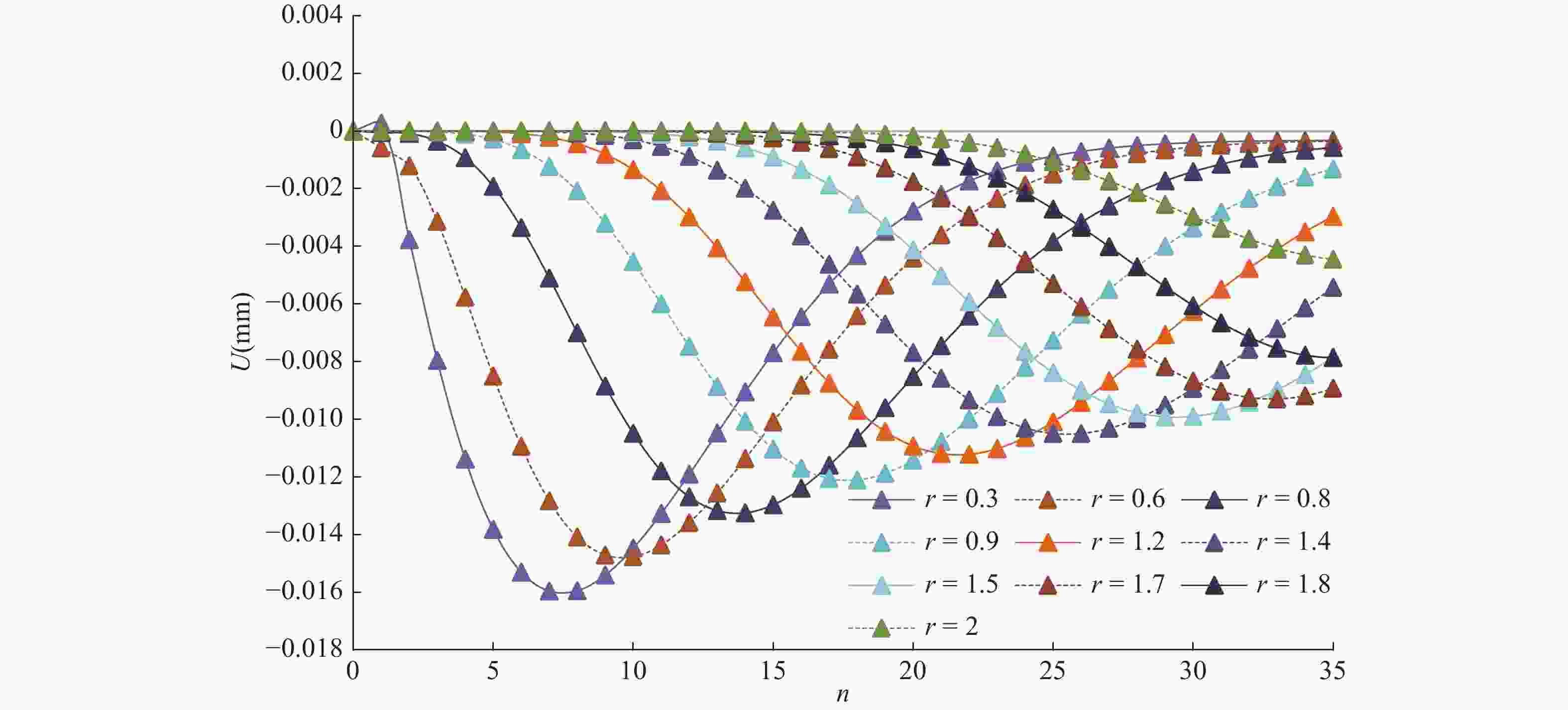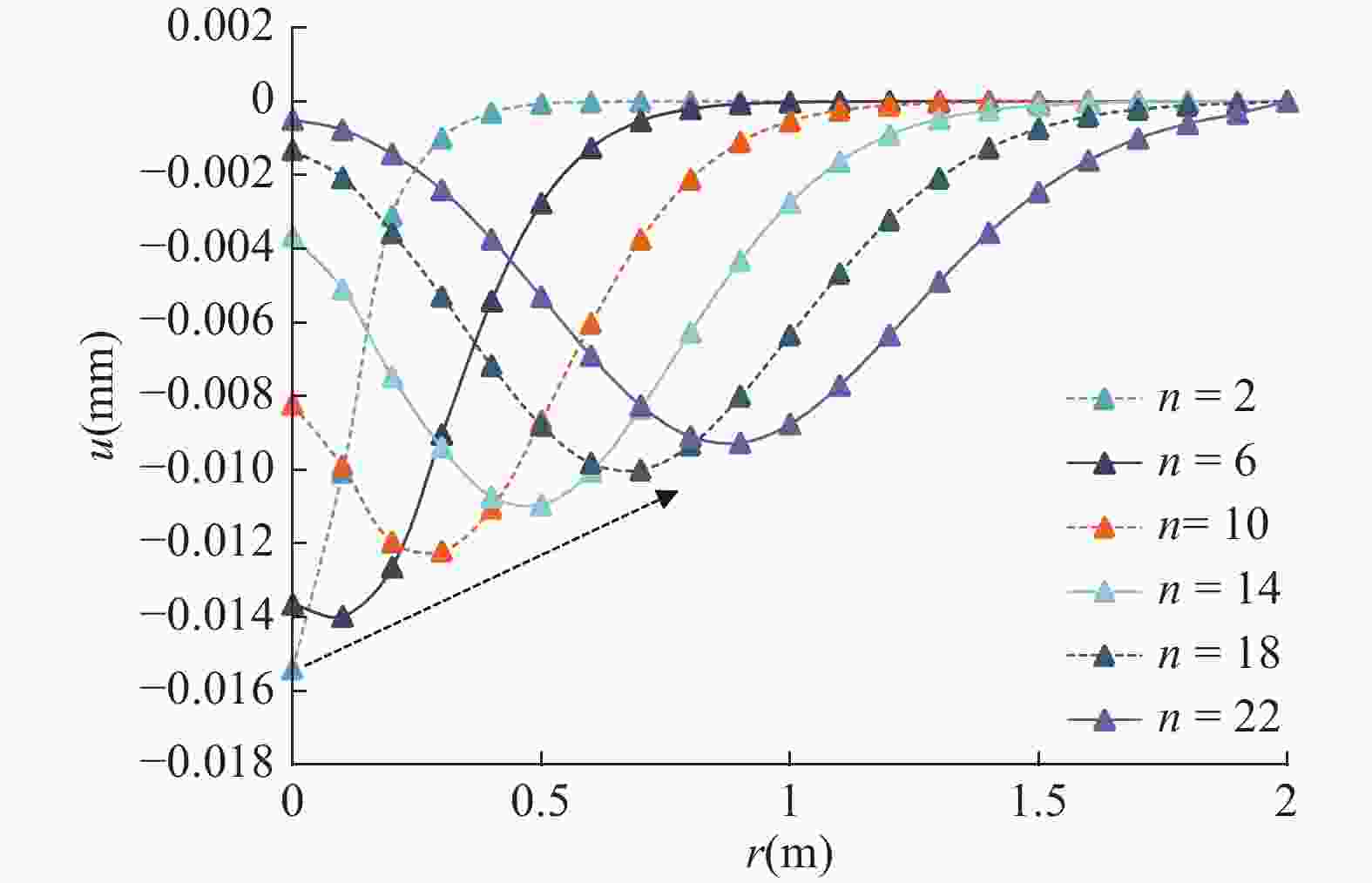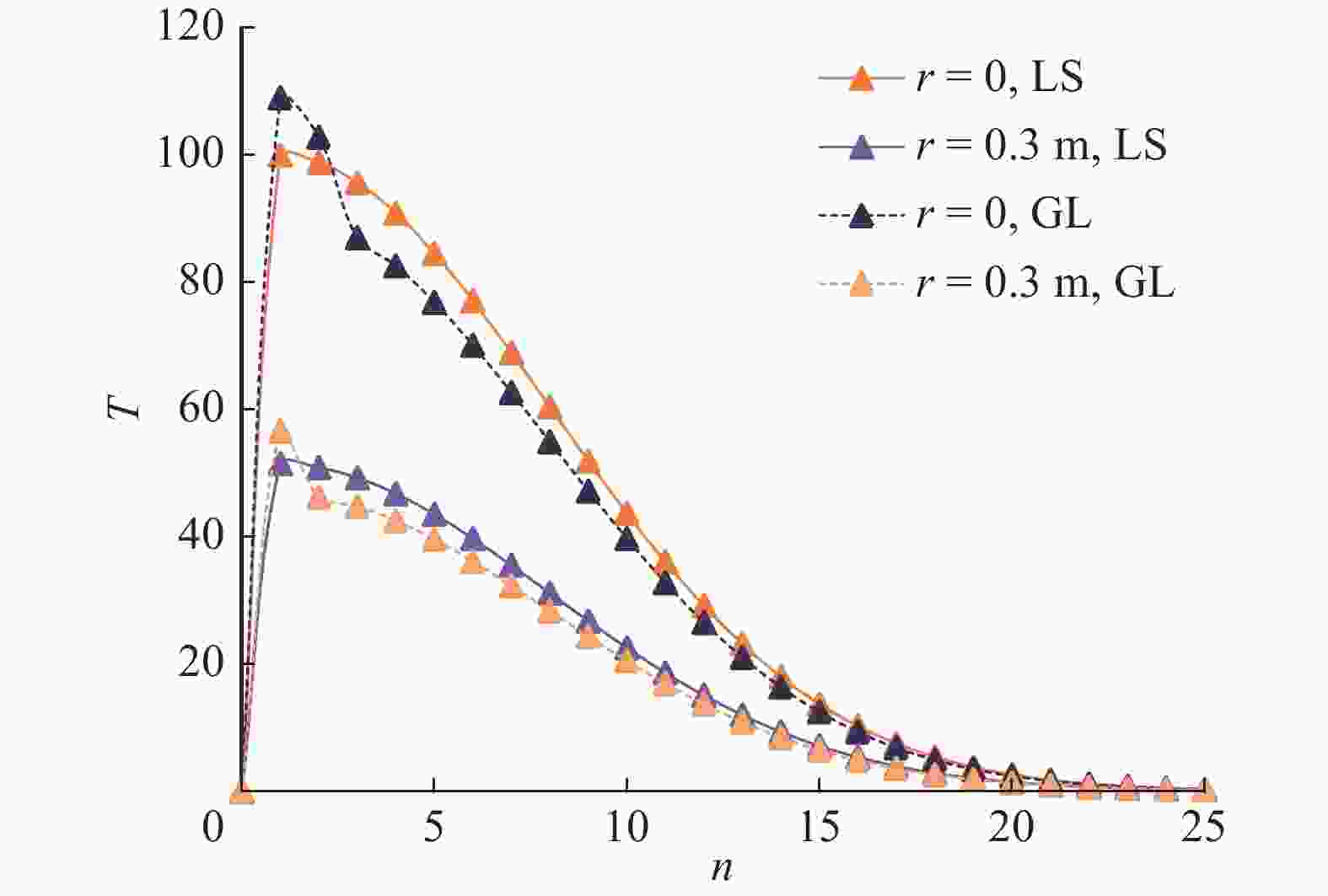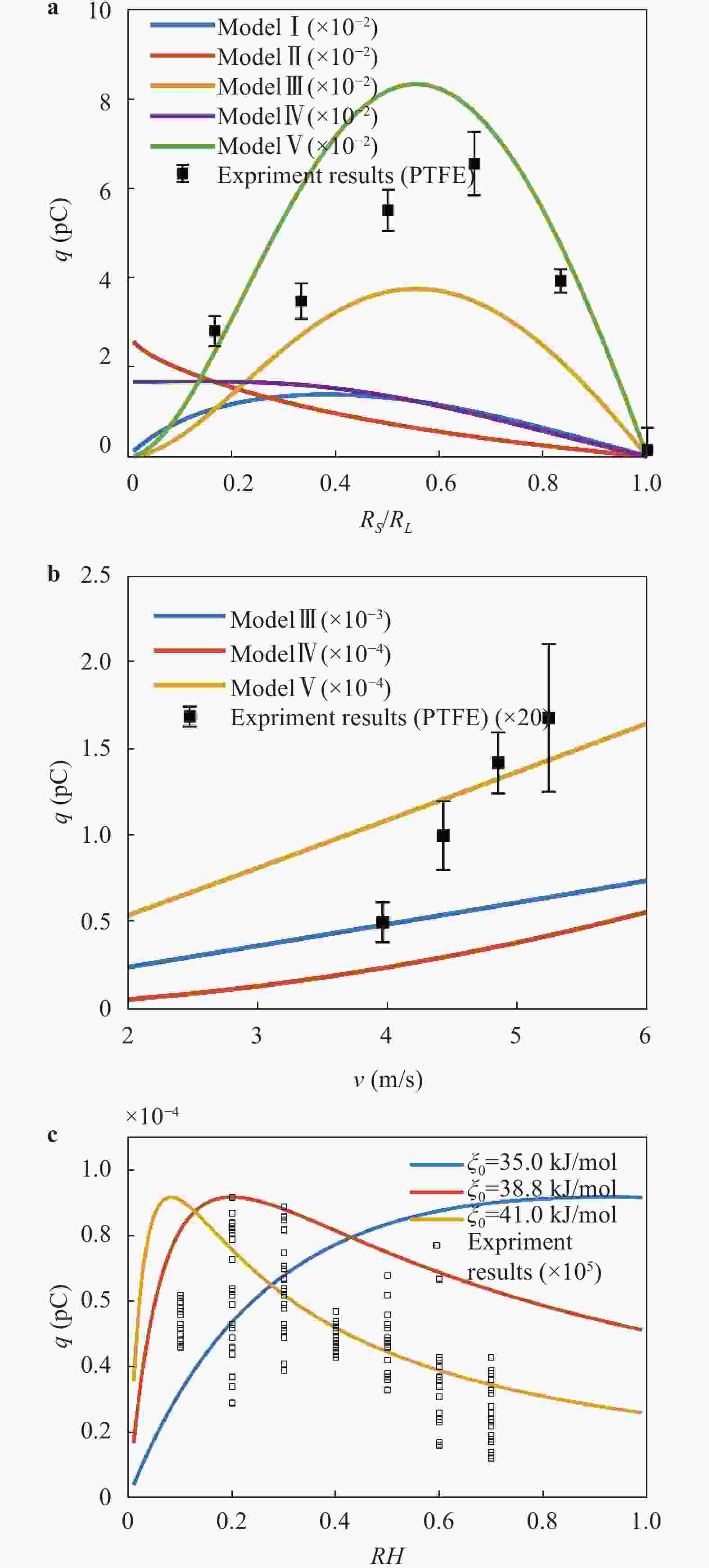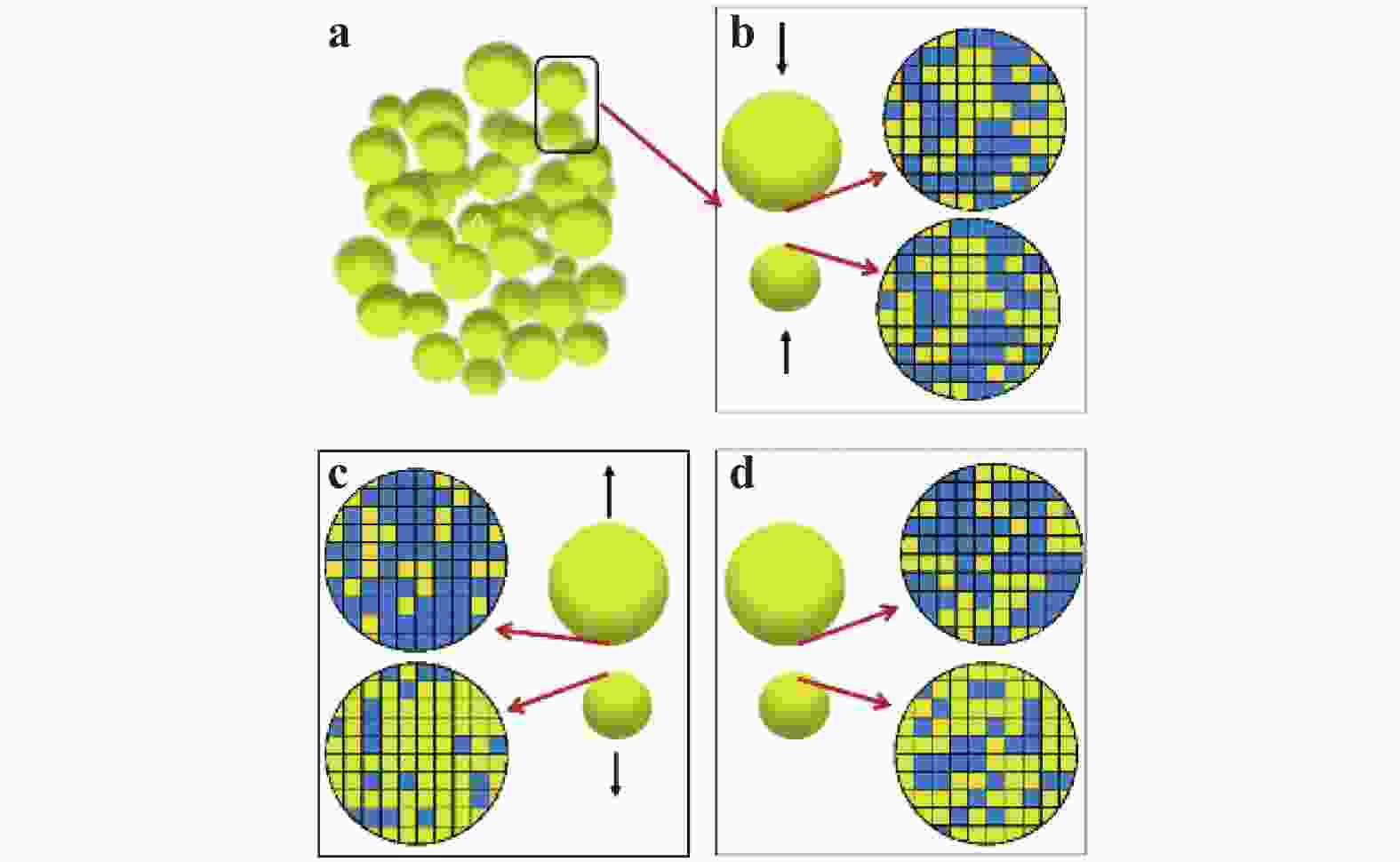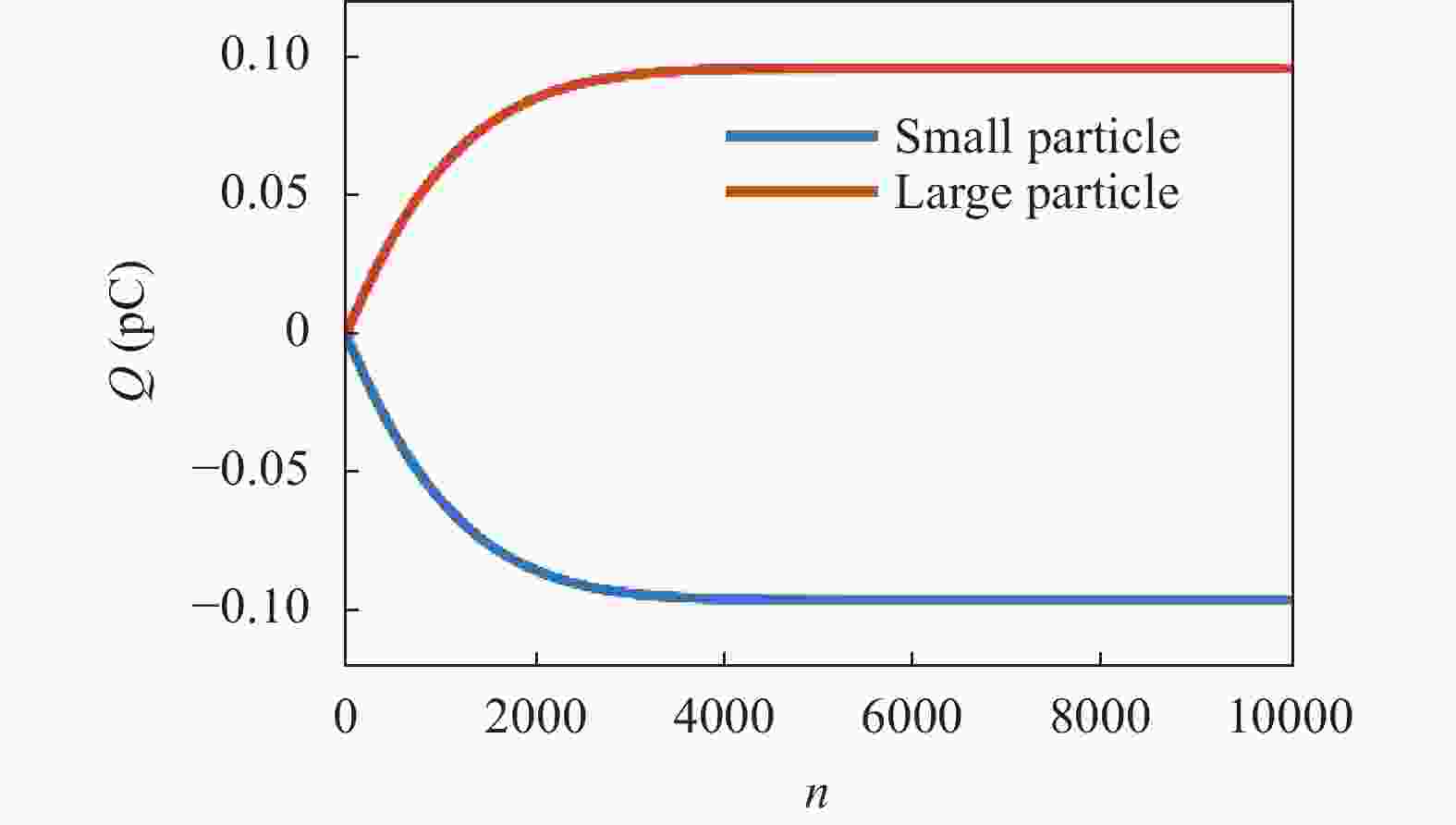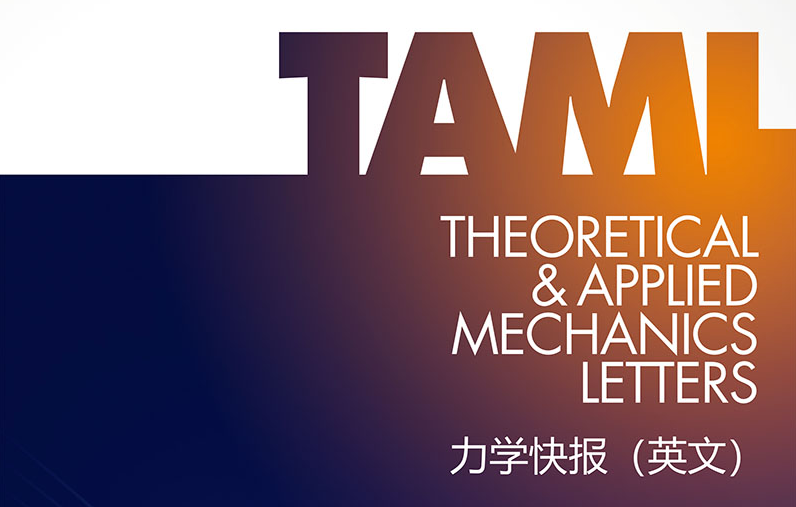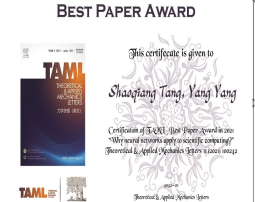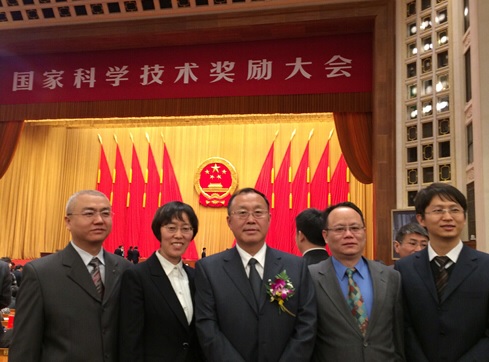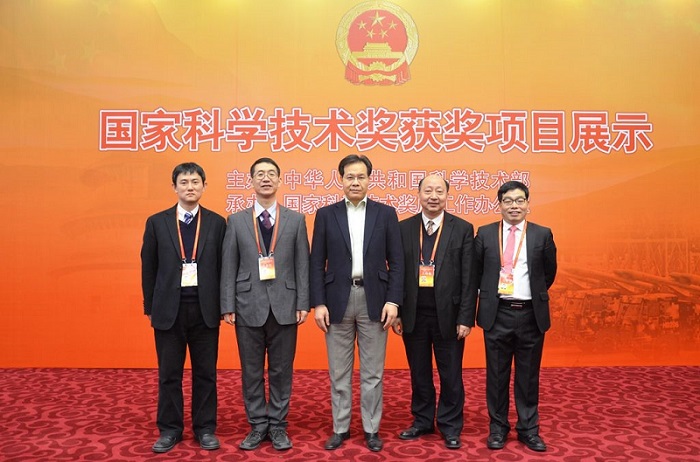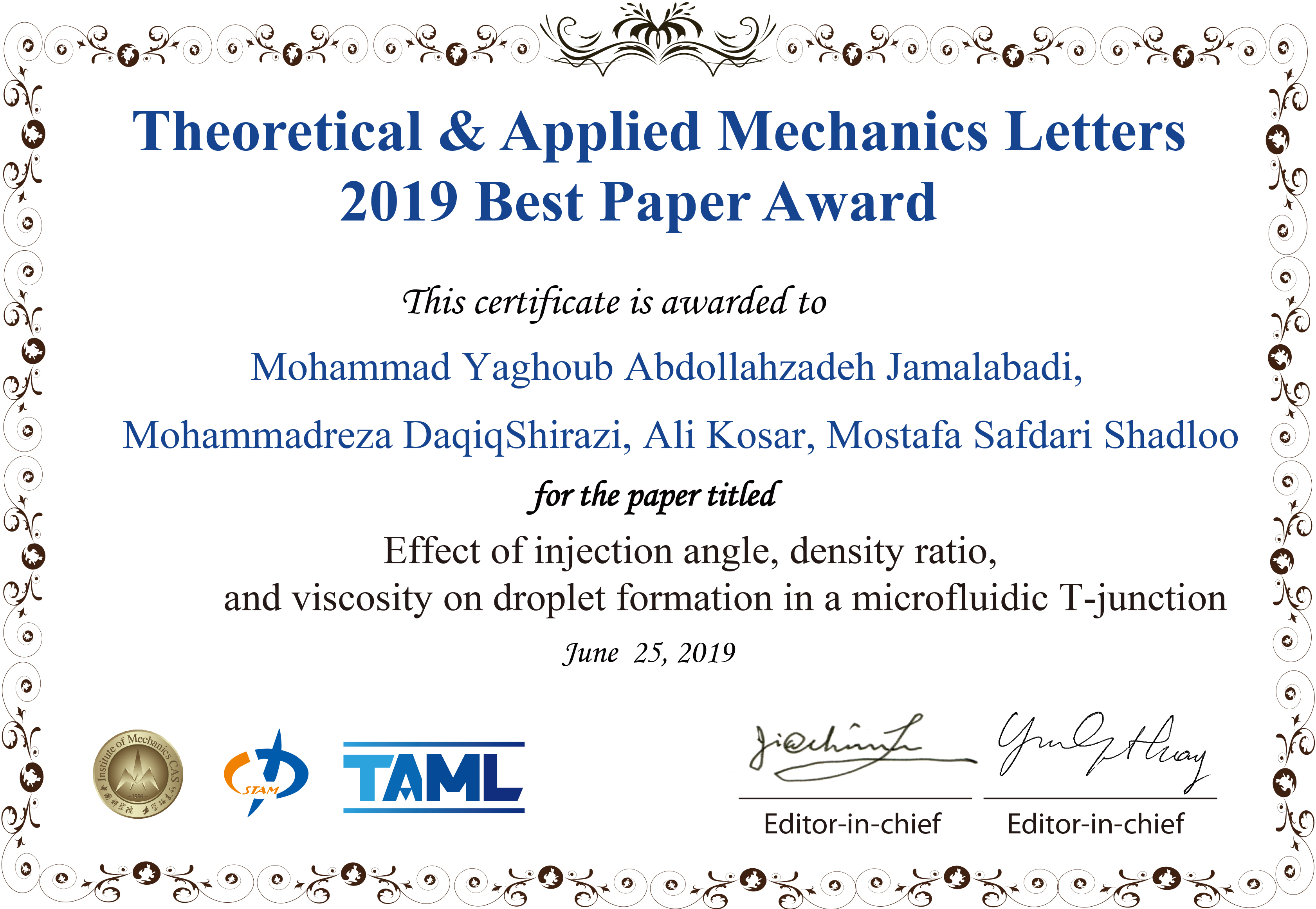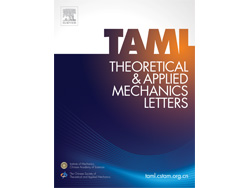Institute of Mechanics,
Chinese Academy of Sciences
2020 Vol.10(4)
Theoretical and Applied Mechanics Letters 2020, 10(4): 213-223.
doi: 10.1016/j.taml.2020.01.013
Abstract:
Pressure drop and liquid hold-up are two very important fluid flow parameters in design and control of multiphase flow pipelines. Friction factors play an important role in the accurate calculation of pressure drop. Various empirical and semi-empirical closure relations exist in the literature to calculate the liquid-wall, gas-wall and interfacial friction in two-phase pipe flow. However most of them are empirical correlations found under special experimental conditions. In this paper by modification of a friction model available in the literature, an improved semi-empirical model is proposed. The proposed model is incorporated in the two-fluid correlations under equilibrium conditions and solved. Pressure gradient and velocity profiles are validated against experimental data. Using the improved model, the pressure gradient deviation from experiments diminishes by about 3%; the no-slip condition at the interface is satisfied and the velocity profile is predicted in better agreement with the experimental data.
Pressure drop and liquid hold-up are two very important fluid flow parameters in design and control of multiphase flow pipelines. Friction factors play an important role in the accurate calculation of pressure drop. Various empirical and semi-empirical closure relations exist in the literature to calculate the liquid-wall, gas-wall and interfacial friction in two-phase pipe flow. However most of them are empirical correlations found under special experimental conditions. In this paper by modification of a friction model available in the literature, an improved semi-empirical model is proposed. The proposed model is incorporated in the two-fluid correlations under equilibrium conditions and solved. Pressure gradient and velocity profiles are validated against experimental data. Using the improved model, the pressure gradient deviation from experiments diminishes by about 3%; the no-slip condition at the interface is satisfied and the velocity profile is predicted in better agreement with the experimental data.
Theoretical and Applied Mechanics Letters 2020, 10(4): 224-229.
doi: 10.1016/j.taml.2020.01.020
Abstract:
High-order accurate schemes are employed to numerically simulate the interaction of a supersonic jet and a co-directional supersonic inflow. A double backward-facing step model is proposed to investigate the interaction between the jet shear layer and the supersonic inflow shear layer. It is found that due to the interaction of the shear layer, a secondary jet is injected into the recirculation zone at the intersection of the two shear layers. The secondary jet produced by the interaction of the two shear layers has a periodicity because of shear layers interaction. The distinction in the shape of double backward-facing steps will induce changes in the period of the secondary jet. The analysis and discussion of the periodicity of the secondary jet are mainly focused in this letter.
High-order accurate schemes are employed to numerically simulate the interaction of a supersonic jet and a co-directional supersonic inflow. A double backward-facing step model is proposed to investigate the interaction between the jet shear layer and the supersonic inflow shear layer. It is found that due to the interaction of the shear layer, a secondary jet is injected into the recirculation zone at the intersection of the two shear layers. The secondary jet produced by the interaction of the two shear layers has a periodicity because of shear layers interaction. The distinction in the shape of double backward-facing steps will induce changes in the period of the secondary jet. The analysis and discussion of the periodicity of the secondary jet are mainly focused in this letter.
Theoretical and Applied Mechanics Letters 2020, 10(4): 230-240.
doi: 10.1016/j.taml.2020.01.024
Abstract:
A physical mechanism by which nose bluntness suppresses second-mode instability is proposed. Considered are 7 degree half-angle straight cones with nose bluntness radii of 0.15 mm, 3.556 mm, 5 mm, 9.525 mm, 12.7 mm and 25.4 mm at tunnel conditions relevant to the AFOSR-Notre Dame Large Mach 6 Quiet Tunnel. It is shown that second-mode suppression is achieved via entropy layer modulation of the basic state density gradient. A weakening of the density gradient disrupts the acoustic resonance necessary to sustain second-mode growth. These results are consistent with the thermoacoustic interpretation which posits that second-mode instability can be modeled as thermoacoustic resonance of acoustic energy trapped within an acoustic impedance well. Furthermore, the generalized inflection point criterion of Lees and Lin is applied to develop a criterion for the existence of second-mode instability based on the strength of the basic state density gradient.
A physical mechanism by which nose bluntness suppresses second-mode instability is proposed. Considered are 7 degree half-angle straight cones with nose bluntness radii of 0.15 mm, 3.556 mm, 5 mm, 9.525 mm, 12.7 mm and 25.4 mm at tunnel conditions relevant to the AFOSR-Notre Dame Large Mach 6 Quiet Tunnel. It is shown that second-mode suppression is achieved via entropy layer modulation of the basic state density gradient. A weakening of the density gradient disrupts the acoustic resonance necessary to sustain second-mode growth. These results are consistent with the thermoacoustic interpretation which posits that second-mode instability can be modeled as thermoacoustic resonance of acoustic energy trapped within an acoustic impedance well. Furthermore, the generalized inflection point criterion of Lees and Lin is applied to develop a criterion for the existence of second-mode instability based on the strength of the basic state density gradient.
Theoretical and Applied Mechanics Letters 2020, 10(4): 241-248.
doi: 10.1016/j.taml.2020.01.026
Abstract:
The presence of solid particles or water droplets in continuous fluid flow can either induce turbulence attenuation or amplification. The modification of the state of the turbulence depends on the characteristics of the particles, such as volume fraction, mean diameter, mass density, or carrier phase flow properties. In this brief review, the main physical concepts related to the most important physical aspects of turbulence modulation are summarized. Different criteria used to distinguish the enhancement or the attenuation effects of the particles on the carrier phase flows are recalled. For the interest of large-scale industrial applications, several theoretical, experimental and empirical approaches are discussed, which provides an interesting framework for the study of the effect of particles on turbulence behavior modification.
The presence of solid particles or water droplets in continuous fluid flow can either induce turbulence attenuation or amplification. The modification of the state of the turbulence depends on the characteristics of the particles, such as volume fraction, mean diameter, mass density, or carrier phase flow properties. In this brief review, the main physical concepts related to the most important physical aspects of turbulence modulation are summarized. Different criteria used to distinguish the enhancement or the attenuation effects of the particles on the carrier phase flows are recalled. For the interest of large-scale industrial applications, several theoretical, experimental and empirical approaches are discussed, which provides an interesting framework for the study of the effect of particles on turbulence behavior modification.
Theoretical and Applied Mechanics Letters 2020, 10(4): 249-252.
doi: 10.1016/j.taml.2020.01.029
Abstract:
A data driven computational model that accounts for more than two material states has been presented in this work. Presented model can account for multiple state variables, such as stresses, strains, strain rates and failure stress, as compared to previously reported models with two states. Model is used to perform deformation and failure simulations of carbon nanotubes and carbon nanotube/epoxy nanocomposites. The model capability of capturing the strain rate dependent deformation and failure has been demonstrated through predictions against uniaxial test data taken from literature. The predicted results show a good agreement between data set taken from literature and simulations.
A data driven computational model that accounts for more than two material states has been presented in this work. Presented model can account for multiple state variables, such as stresses, strains, strain rates and failure stress, as compared to previously reported models with two states. Model is used to perform deformation and failure simulations of carbon nanotubes and carbon nanotube/epoxy nanocomposites. The model capability of capturing the strain rate dependent deformation and failure has been demonstrated through predictions against uniaxial test data taken from literature. The predicted results show a good agreement between data set taken from literature and simulations.
Theoretical and Applied Mechanics Letters 2020, 10(4): 253-261.
doi: 10.1016/j.taml.2020.01.032
Abstract:
Implementing resonators with geometrical nonlinearities in vibrational energy harvesting systems leads to considerable enhancement of their operational bandwidths. This advantage of nonlinear devices in comparison to their linear counterparts is much more obvious especially at small-scale where transition to nonlinear regime of vibration occurs at moderately small amplitudes of the base excitation. In this paper the nonlinear behavior of a disc-shaped piezoelectric laminated harvester considering midplane-stretching effect is investigated. Extended Hamilton's principle is exploited to extract electromechanically coupled governing partial differential equations of the system. The equations are firstly order-reduced and then analytically solved implementing perturbation method of multiple scales. A nonlinear finite element method (FEM) simulation of the system is performed additionally for the purpose of verification which shows agreement with the analytical solution to a large extent. The frequency response of the output power at primary resonance of the harvester is calculated to investigate the effect of nonlinearity on the system performance. Effect of various parameters including mechanical quality factor, external load impedance and base excitation amplitude on the behavior of the system are studied. Findings indicate that in the nonlinear regime both output power and operational bandwidth of the harvester will be enhanced by increasing the mechanical quality factor which can be considered as a significant advantage in comparison to linear harvesters in which these two factors vary in opposite ways as quality factor is changed.
Implementing resonators with geometrical nonlinearities in vibrational energy harvesting systems leads to considerable enhancement of their operational bandwidths. This advantage of nonlinear devices in comparison to their linear counterparts is much more obvious especially at small-scale where transition to nonlinear regime of vibration occurs at moderately small amplitudes of the base excitation. In this paper the nonlinear behavior of a disc-shaped piezoelectric laminated harvester considering midplane-stretching effect is investigated. Extended Hamilton's principle is exploited to extract electromechanically coupled governing partial differential equations of the system. The equations are firstly order-reduced and then analytically solved implementing perturbation method of multiple scales. A nonlinear finite element method (FEM) simulation of the system is performed additionally for the purpose of verification which shows agreement with the analytical solution to a large extent. The frequency response of the output power at primary resonance of the harvester is calculated to investigate the effect of nonlinearity on the system performance. Effect of various parameters including mechanical quality factor, external load impedance and base excitation amplitude on the behavior of the system are studied. Findings indicate that in the nonlinear regime both output power and operational bandwidth of the harvester will be enhanced by increasing the mechanical quality factor which can be considered as a significant advantage in comparison to linear harvesters in which these two factors vary in opposite ways as quality factor is changed.
Theoretical and Applied Mechanics Letters 2020, 10(4): 262-269.
doi: 10.1016/j.taml.2020.01.034
Abstract:
Environmental risk due to excessive residual emission is rising. Greenhouse effect, ice melting in the Arctic, reduction of air quality are several concerns which need immediate development and change. Energy harvesting equipment is one of the key solutions. Environment potential, e.g. water resource can be collaborated with mechanical equipment to harvest clean energy. Savonius turbine has been proposed and studied for this purpose and can be placed on several energy resources, i.e. water and wind. Still, real-world implementation of this technology is lacking, especially in tropical archipelago countries which have abundant water resources. In this work, assessment of Savonius turbine technology as instrument to harvest clean energy is conducted. A series of development on the turbine performance and technical modification is considered as reference to implement the technology in water and open air environments. It is noted that rotor design, operation depth and nozzle attachment are several key influencing factors.
Environmental risk due to excessive residual emission is rising. Greenhouse effect, ice melting in the Arctic, reduction of air quality are several concerns which need immediate development and change. Energy harvesting equipment is one of the key solutions. Environment potential, e.g. water resource can be collaborated with mechanical equipment to harvest clean energy. Savonius turbine has been proposed and studied for this purpose and can be placed on several energy resources, i.e. water and wind. Still, real-world implementation of this technology is lacking, especially in tropical archipelago countries which have abundant water resources. In this work, assessment of Savonius turbine technology as instrument to harvest clean energy is conducted. A series of development on the turbine performance and technical modification is considered as reference to implement the technology in water and open air environments. It is noted that rotor design, operation depth and nozzle attachment are several key influencing factors.
Theoretical and Applied Mechanics Letters 2020, 10(4): 270-275.
doi: 10.1016/j.taml.2020.01.035
Abstract:
Non-local plane elasticity problems are discussed in the context of Λ-fractional linear elasticity theory. Adapting the Λ-fractional derivative along with the Λ-fractional space, where geometry and mechanics are valid in the conventional way, non-local plane elasticity problems are solved with the help of biharmonic functions. Then, the results are transferred into the initial plane. Applications are presented to homogeneous and the fractional beam bending problem.
Non-local plane elasticity problems are discussed in the context of Λ-fractional linear elasticity theory. Adapting the Λ-fractional derivative along with the Λ-fractional space, where geometry and mechanics are valid in the conventional way, non-local plane elasticity problems are solved with the help of biharmonic functions. Then, the results are transferred into the initial plane. Applications are presented to homogeneous and the fractional beam bending problem.
Theoretical and Applied Mechanics Letters 2020, 10(4): 286-297.
doi: 10.1016/j.taml.2020.01.030
Abstract:
The nonlinear thermoelastic responses of an elastic medium exposed to laser generated short-pulse heating are investigated in this article. The thermal wave propagation of generalized thermoelastic medium under the impact of thermal loading with energy dissipation is the focus of this research. To model the thermal boundary condition (in the form of thermal conduction), generalized Cattaneo model (GCM) is employed. In the reference configuration, a nonlinear coupled Lord-Shulman-type generalized thermoelasticity formulation using finite strain theory (FST) is developed and the temperature dependency of the thermal conductivity is considered to derive the equations. In order to solve the time-dependent and nonlinear equations, Newmark's numerical time integration technique and an updated finite element algorithm is applied and to ensure achieving accurate continuity of the results, the Hermitian elements are used instead of Lagrangian's. The numerical responses for different factors such as input heat flux and nonlinear terms are expressed graphically and their impacts on the system's reaction are discussed in detail. The results of the study are presented for Green–Lindsay model and the findings are compared with Lord-Shulman model especially with regards to heat wave propagation. It is shown that the nature of the laser's thermal shock and its geometry are particularly determinative in the final stage of deformation. The research also concluded that employing FST leads to achieving more accuracy in terms of elastic deformations; however, the thermally nonlinear analysis does not change the results markedly. For this reason, the nonlinear theory of deformation is required in laser related reviews, while it is reasonable to ignore the temperature changes compared to the reference temperature in deriving governing equations.
The nonlinear thermoelastic responses of an elastic medium exposed to laser generated short-pulse heating are investigated in this article. The thermal wave propagation of generalized thermoelastic medium under the impact of thermal loading with energy dissipation is the focus of this research. To model the thermal boundary condition (in the form of thermal conduction), generalized Cattaneo model (GCM) is employed. In the reference configuration, a nonlinear coupled Lord-Shulman-type generalized thermoelasticity formulation using finite strain theory (FST) is developed and the temperature dependency of the thermal conductivity is considered to derive the equations. In order to solve the time-dependent and nonlinear equations, Newmark's numerical time integration technique and an updated finite element algorithm is applied and to ensure achieving accurate continuity of the results, the Hermitian elements are used instead of Lagrangian's. The numerical responses for different factors such as input heat flux and nonlinear terms are expressed graphically and their impacts on the system's reaction are discussed in detail. The results of the study are presented for Green–Lindsay model and the findings are compared with Lord-Shulman model especially with regards to heat wave propagation. It is shown that the nature of the laser's thermal shock and its geometry are particularly determinative in the final stage of deformation. The research also concluded that employing FST leads to achieving more accuracy in terms of elastic deformations; however, the thermally nonlinear analysis does not change the results markedly. For this reason, the nonlinear theory of deformation is required in laser related reviews, while it is reasonable to ignore the temperature changes compared to the reference temperature in deriving governing equations.
Theoretical and Applied Mechanics Letters 2020, 10(4): 276-285.
doi: 10.1016/j.taml.2020.01.047
Abstract:
In this paper, the models describing the charge transfer between two sand particles due to collisions are reviewed. By comparing the experimental results and the calculated results by the models carried on an individual particle due to a single collision, it indicates the Mosaic model is more reasonable to describe the collision charging mechanism. The Mosaic model cannot only describe the dependence of the collision charges on the relative collision speed and the particle size, but also reveal the relationship between the collision charges with the environmental temperature, the relative humidity and the material parameters, e.g., the absorption energy. Based on the Mosaic model, the model to describe the charges transfer due to multiple collisions is also developed, which can be used to calculate the charges carried by sand particles due to multiple collisions in the wind blown sand flux.
In this paper, the models describing the charge transfer between two sand particles due to collisions are reviewed. By comparing the experimental results and the calculated results by the models carried on an individual particle due to a single collision, it indicates the Mosaic model is more reasonable to describe the collision charging mechanism. The Mosaic model cannot only describe the dependence of the collision charges on the relative collision speed and the particle size, but also reveal the relationship between the collision charges with the environmental temperature, the relative humidity and the material parameters, e.g., the absorption energy. Based on the Mosaic model, the model to describe the charges transfer due to multiple collisions is also developed, which can be used to calculate the charges carried by sand particles due to multiple collisions in the wind blown sand flux.
 Submit a Paper
Submit a Paper
 Subscription
Subscription
News
MORE+
Call for Papers
MORE+
- Crossing-Mechanics Driven by Big Data
- Machine learning in the fluid mechanics research of wind energy
- Mechanics of Origami/Kirigami structures and metamaterials
- New insights and perspectives on impact biomechanics for human tissues: from injury prevention, protection to protective equipment
- Environmental Mechanics for Extreme Natural Events



